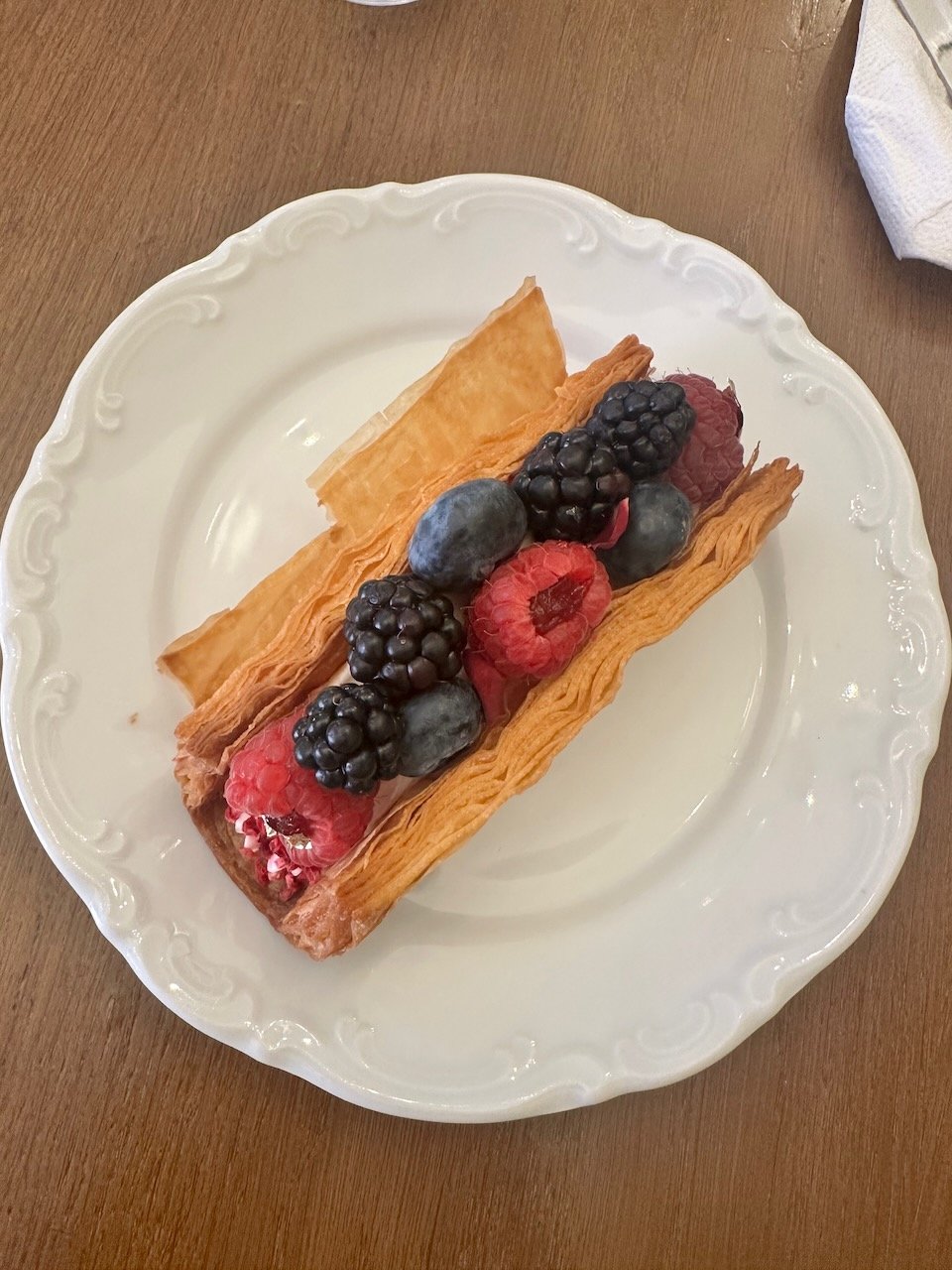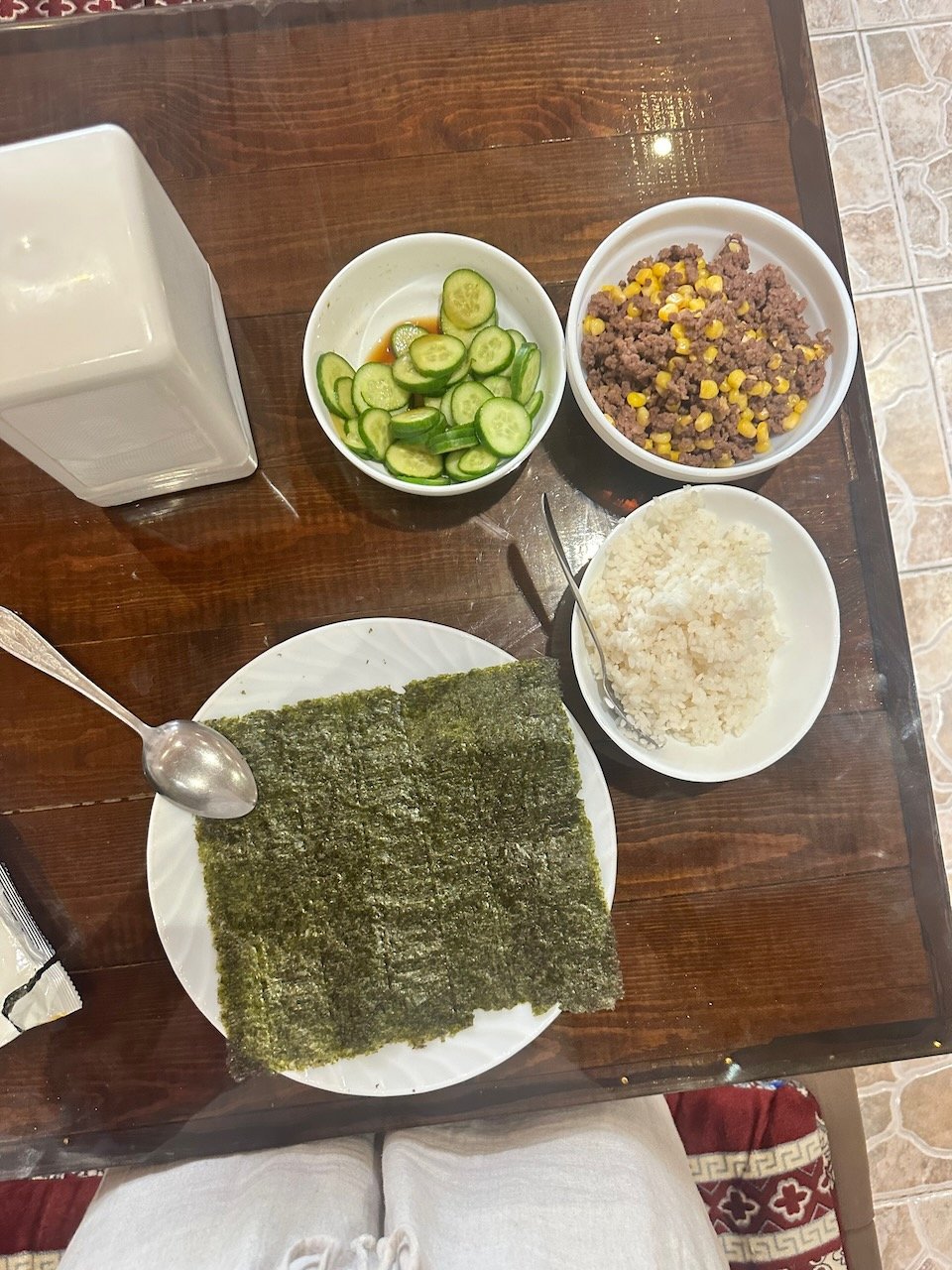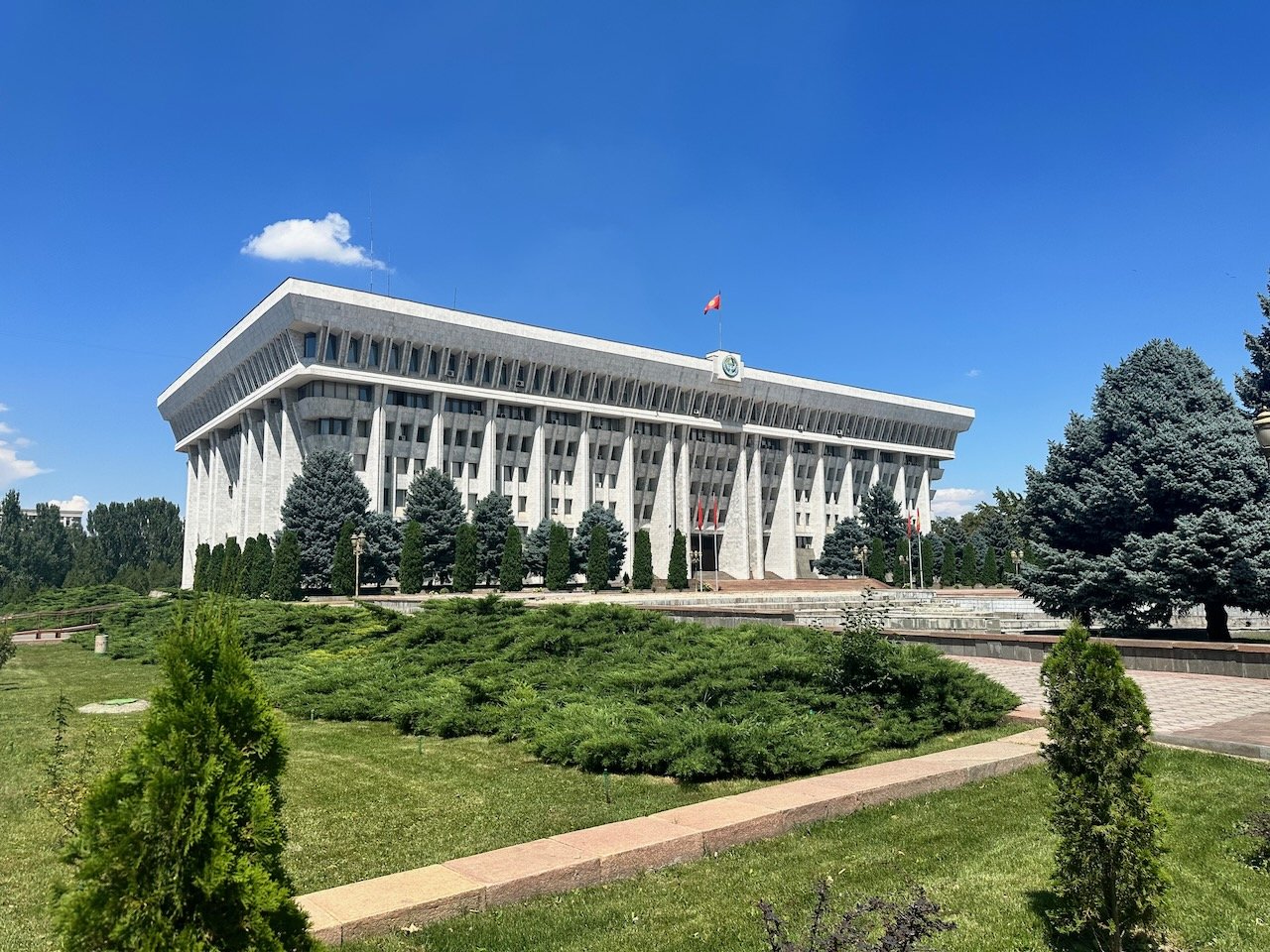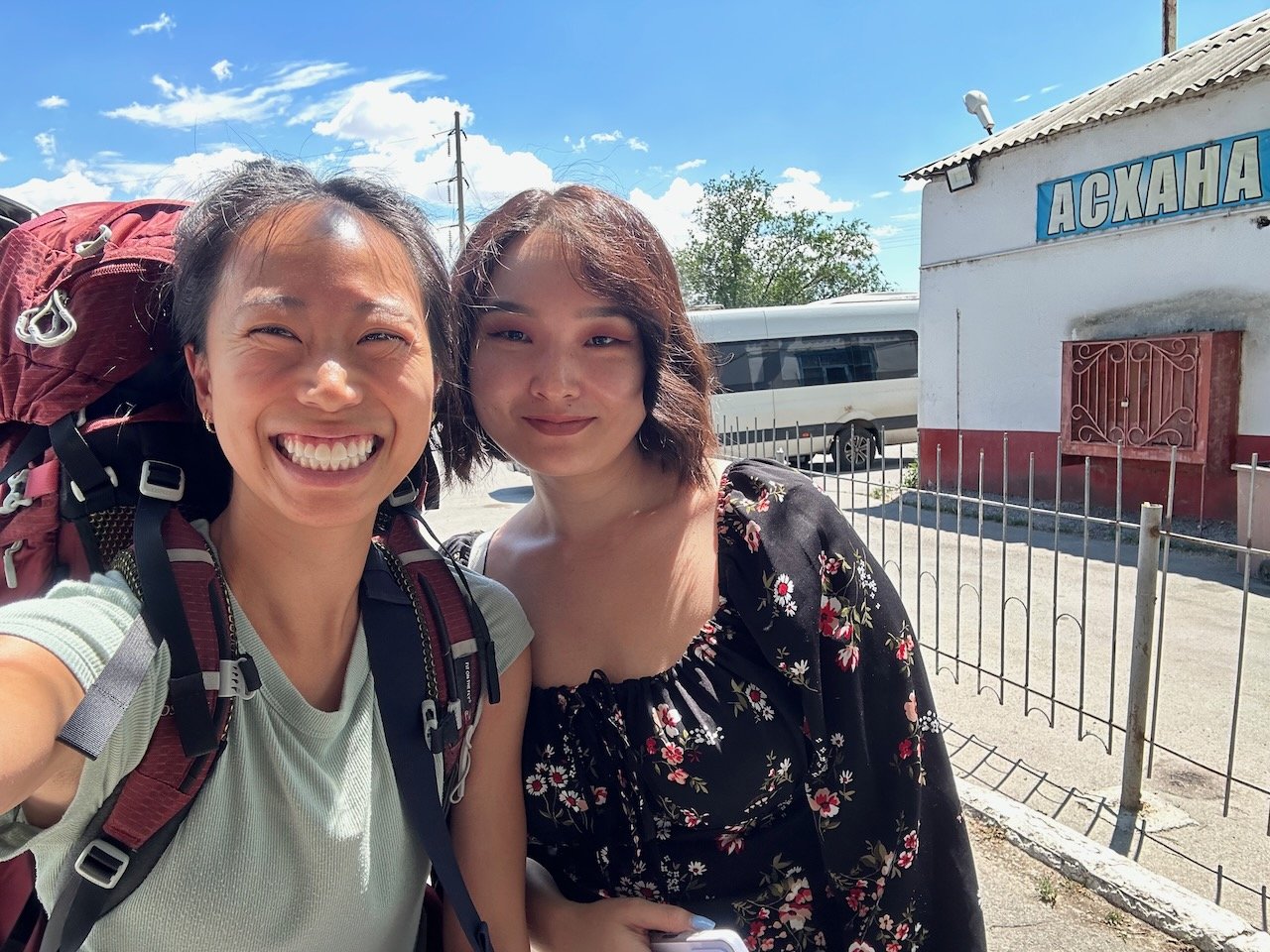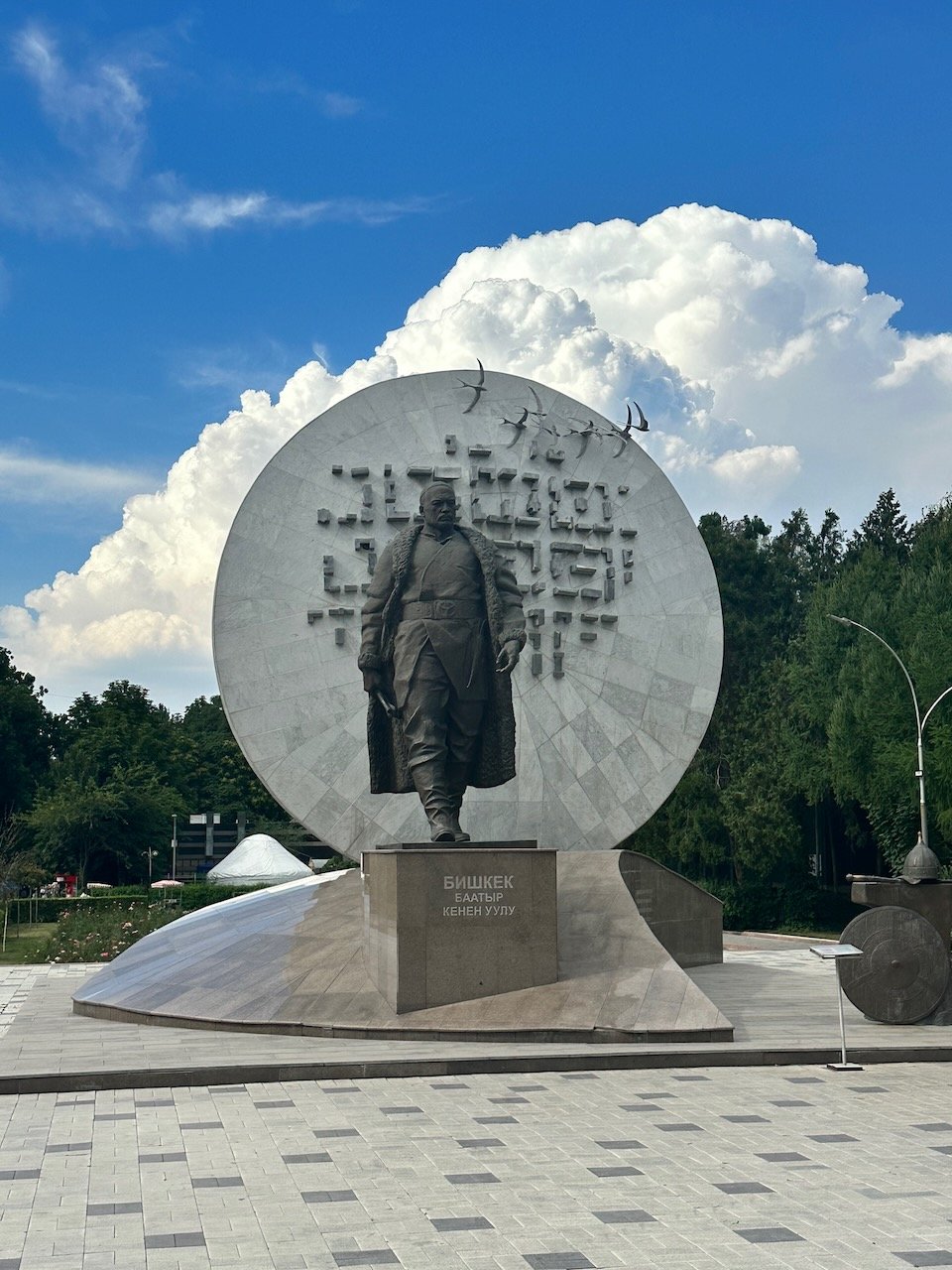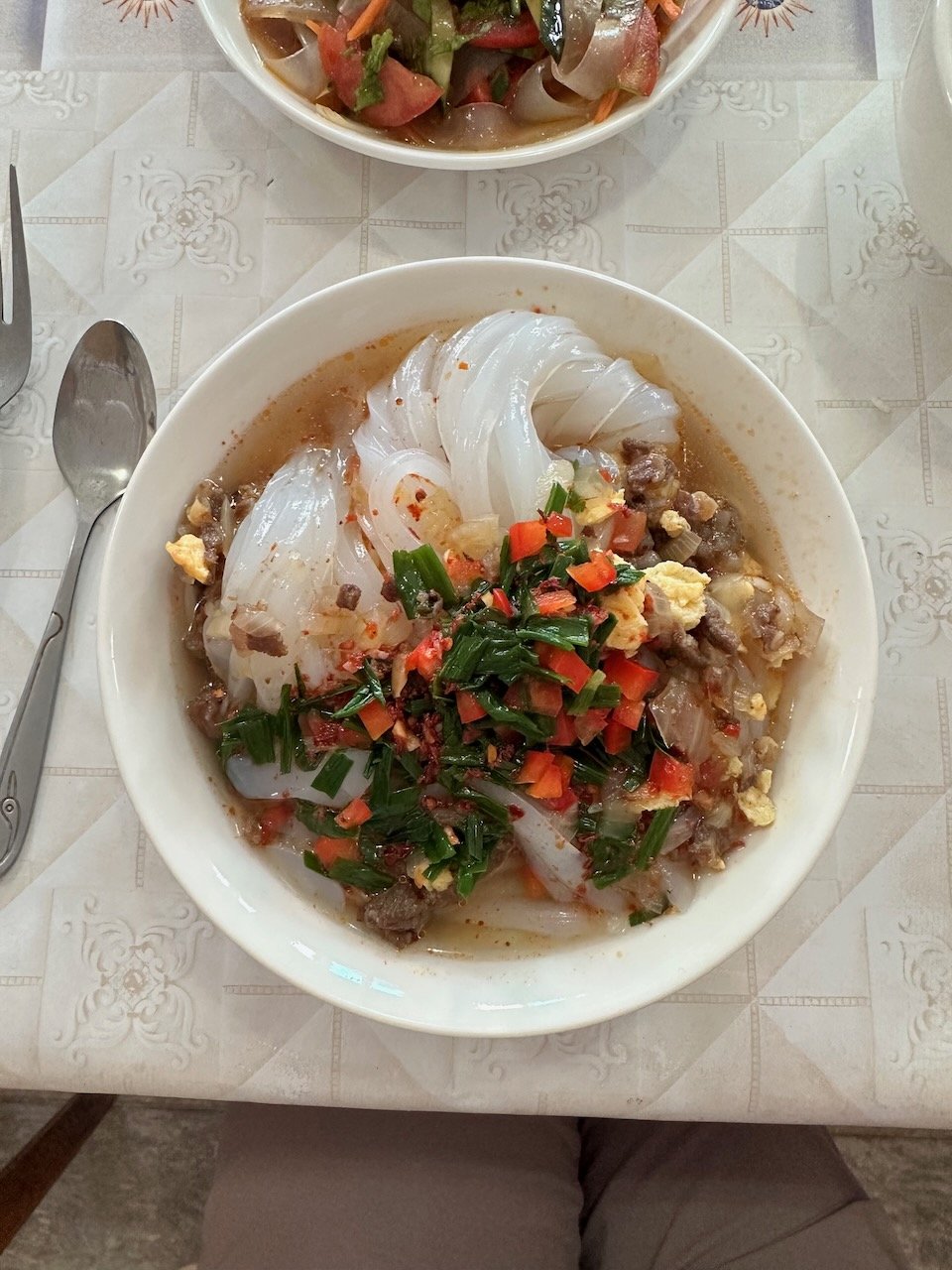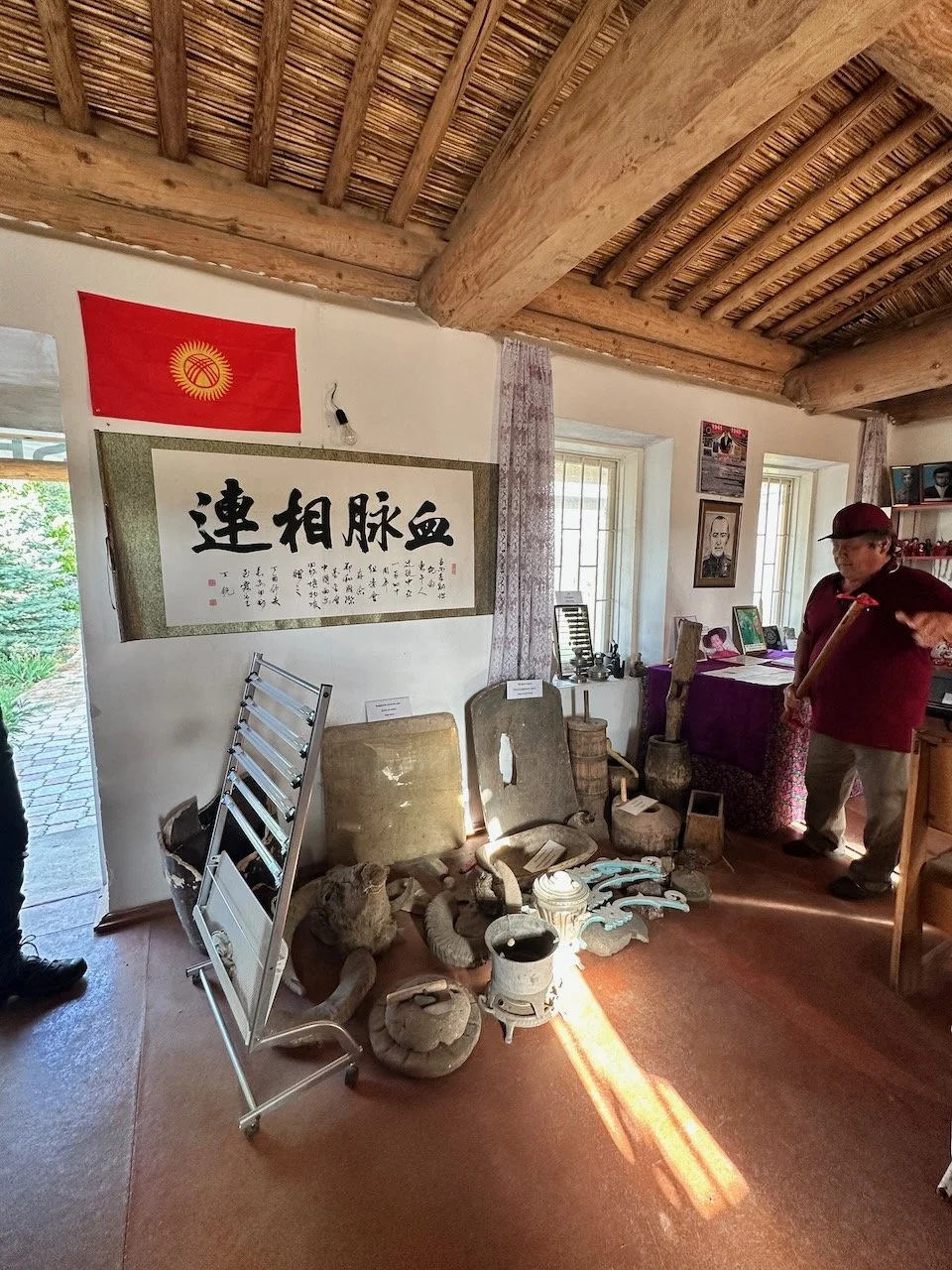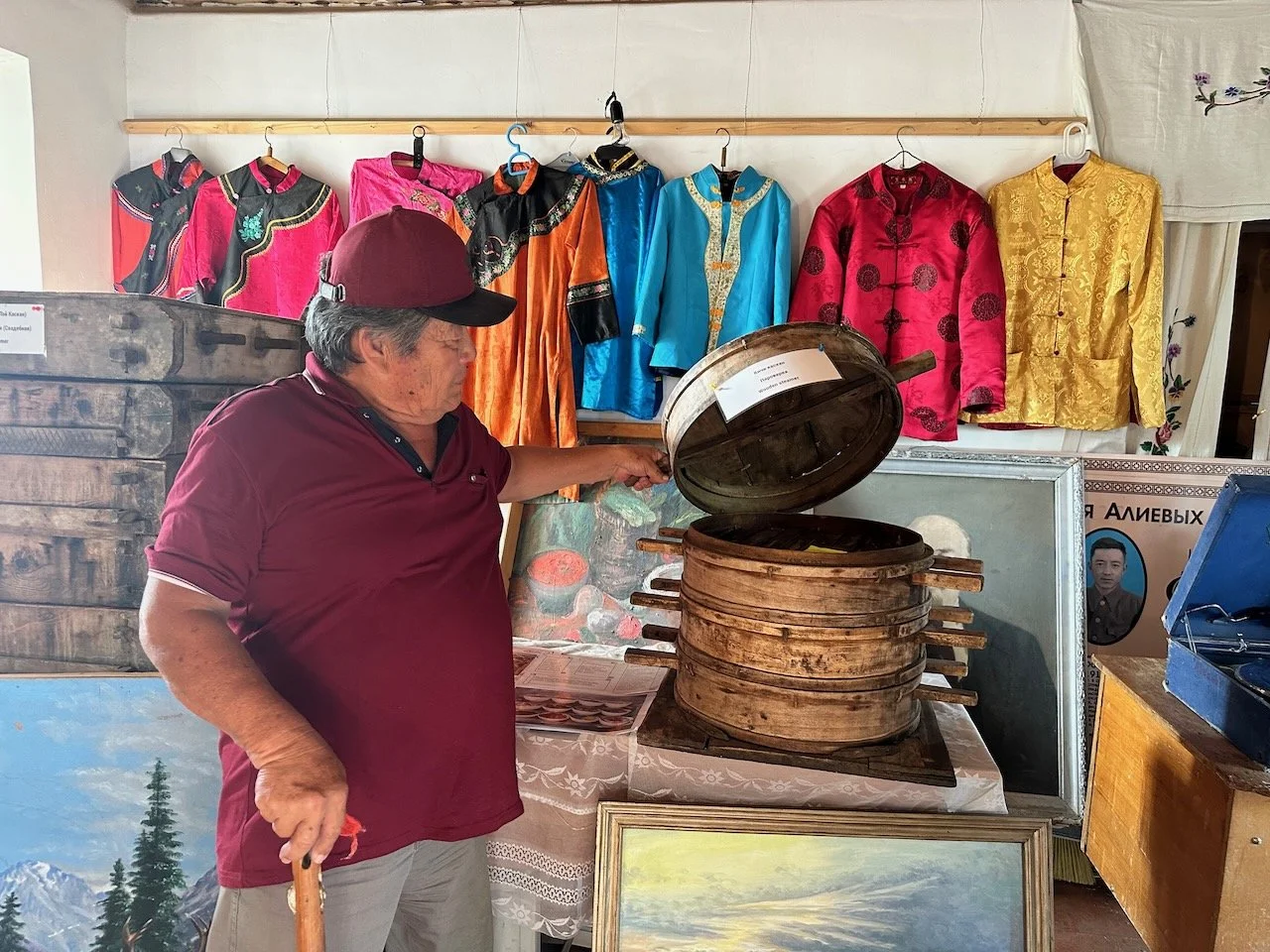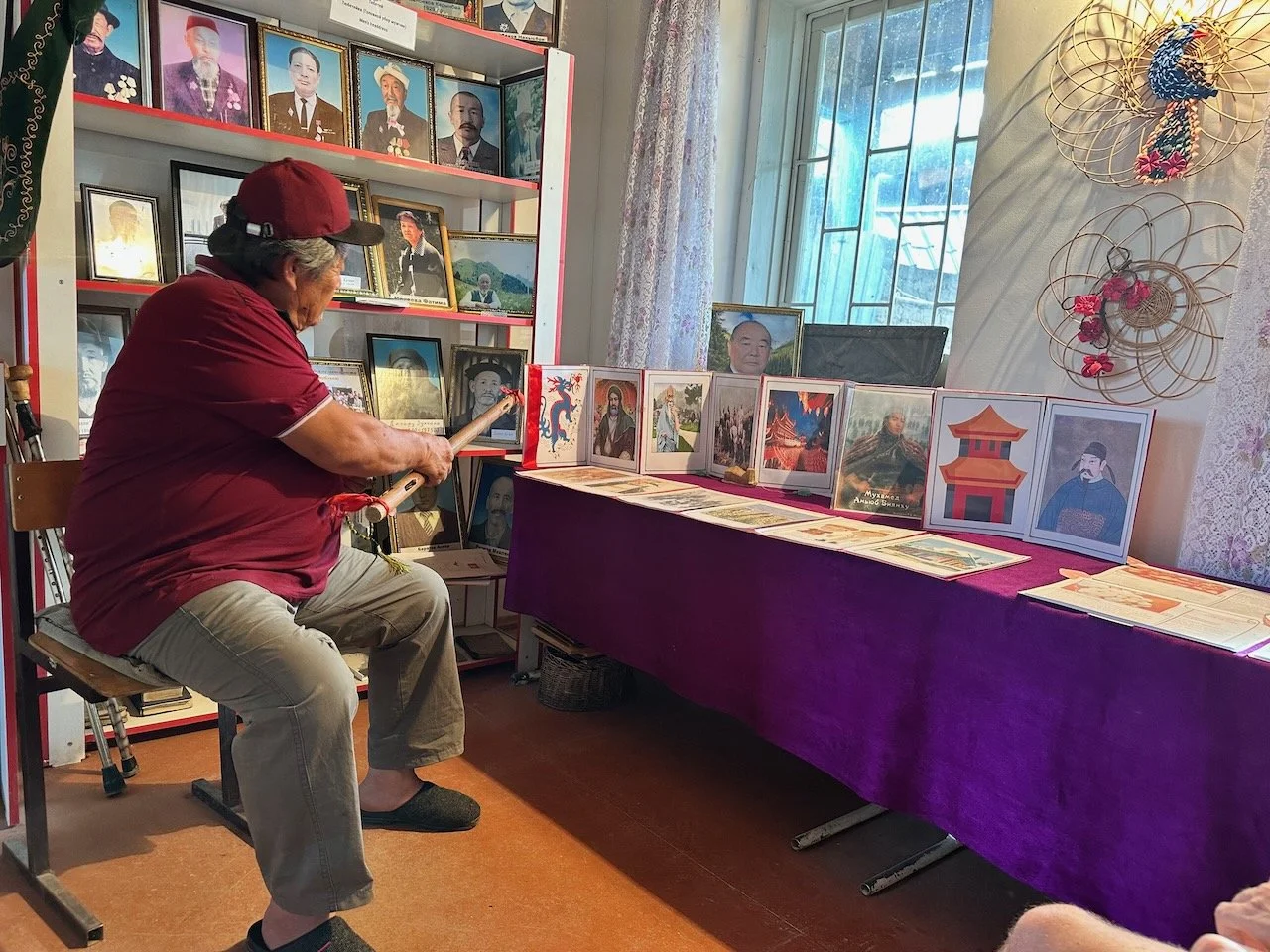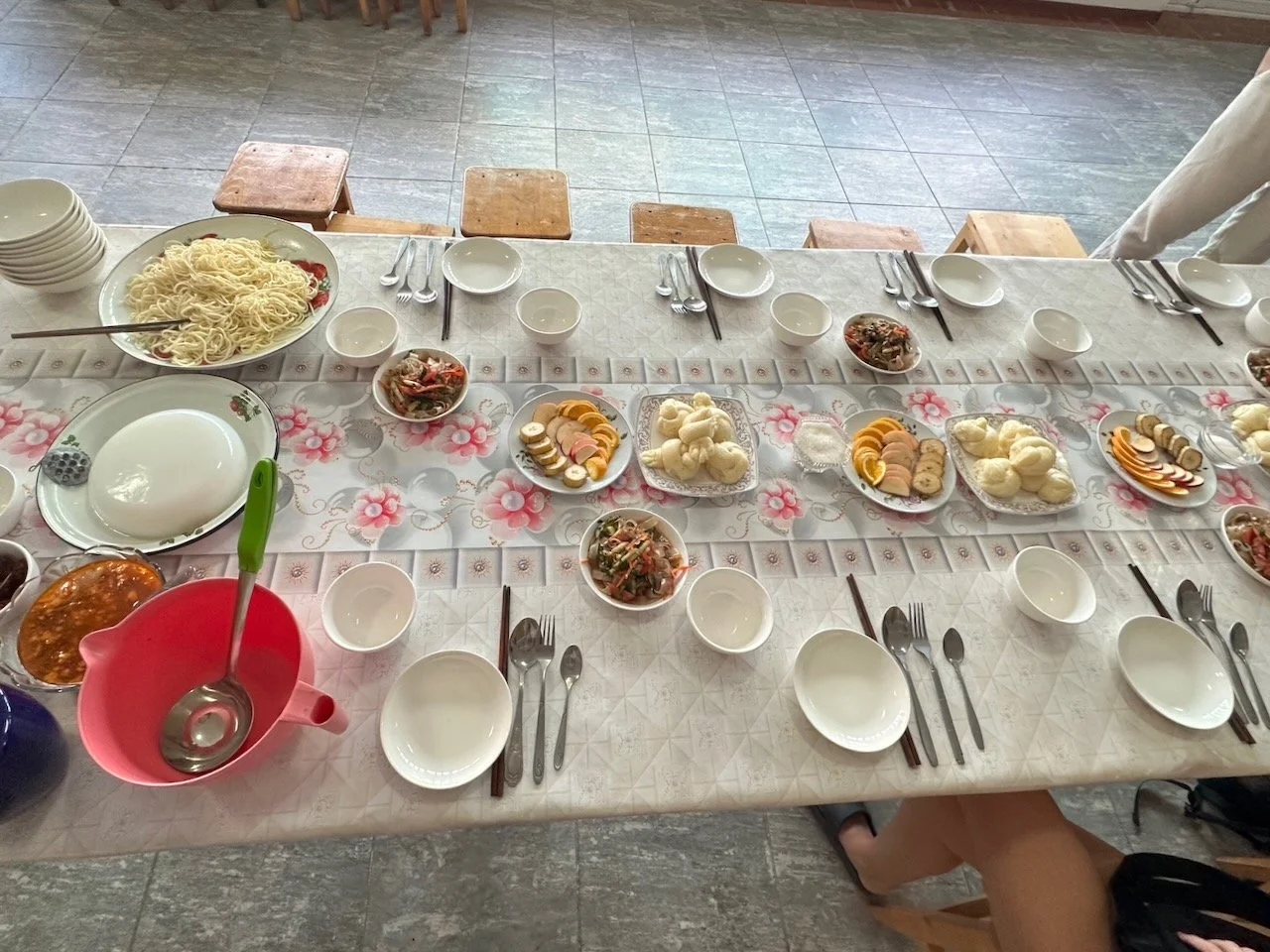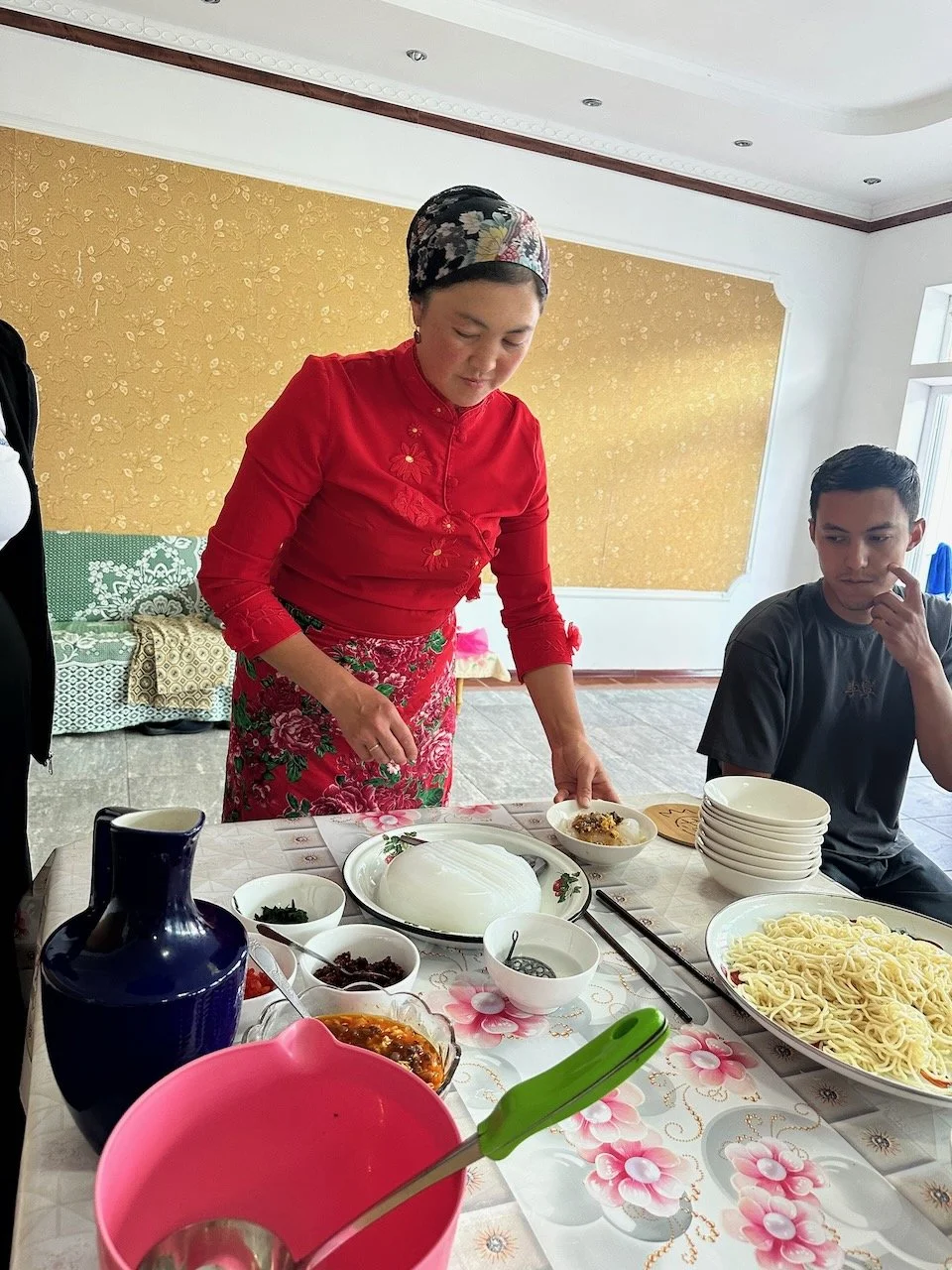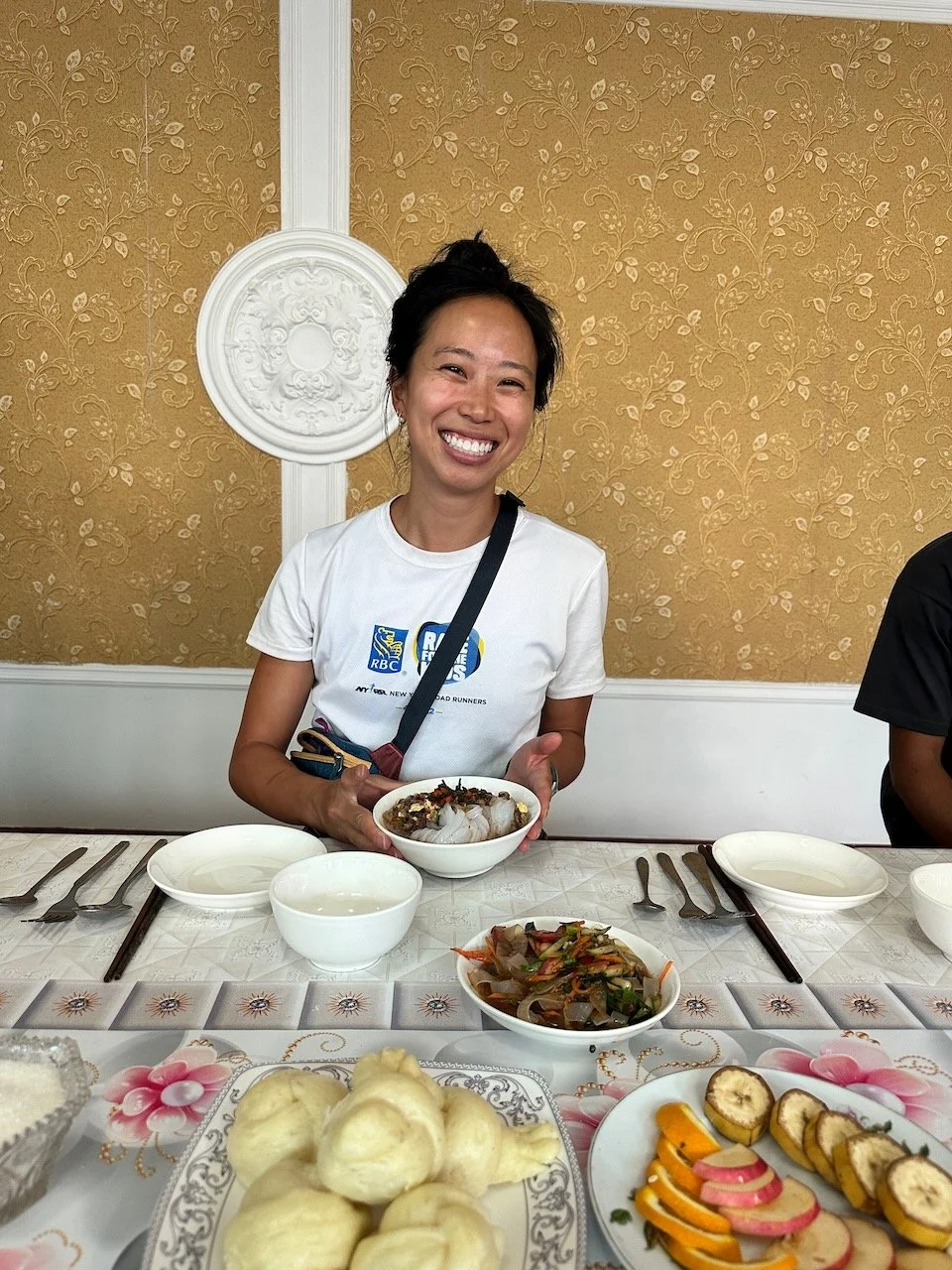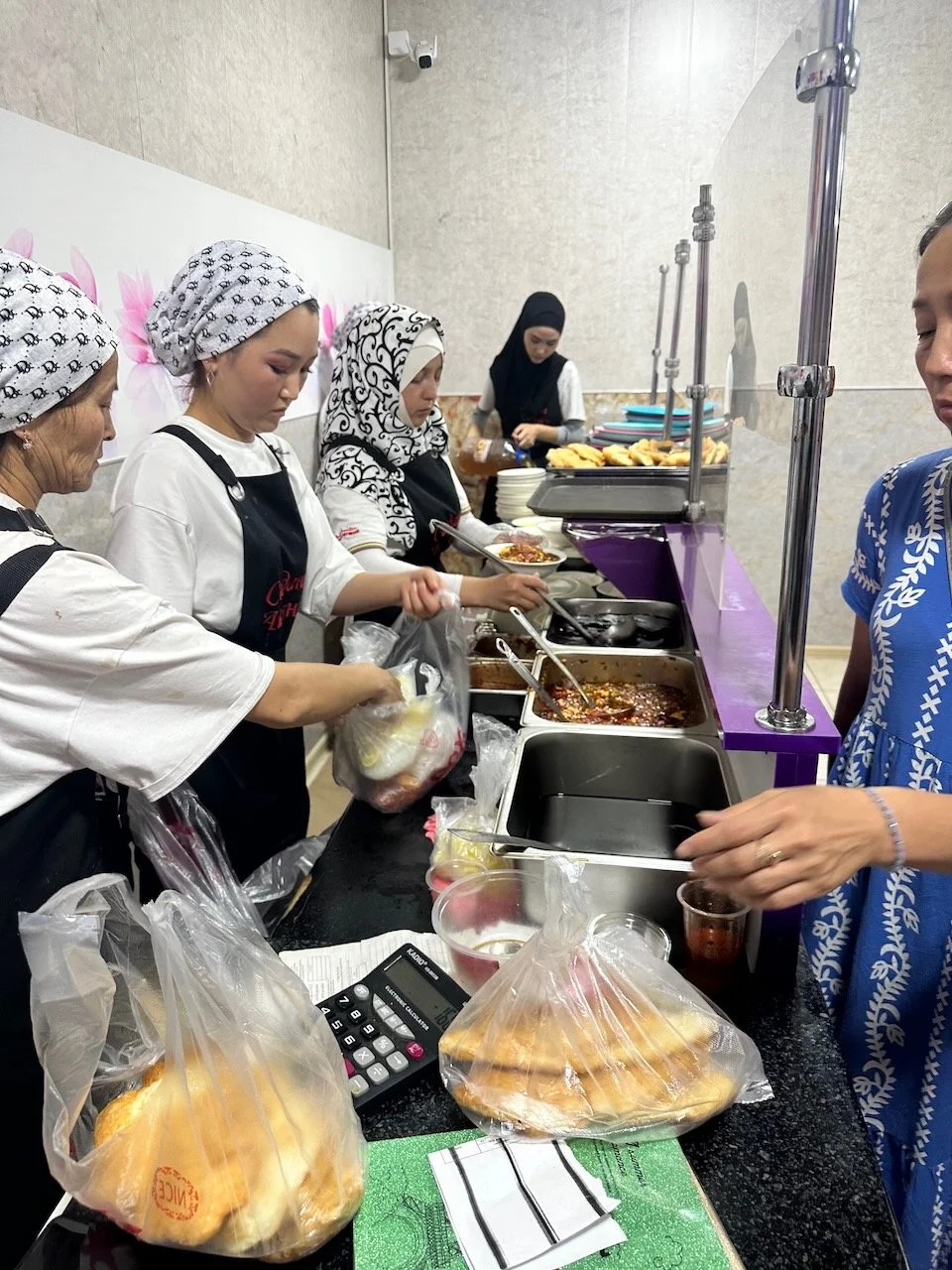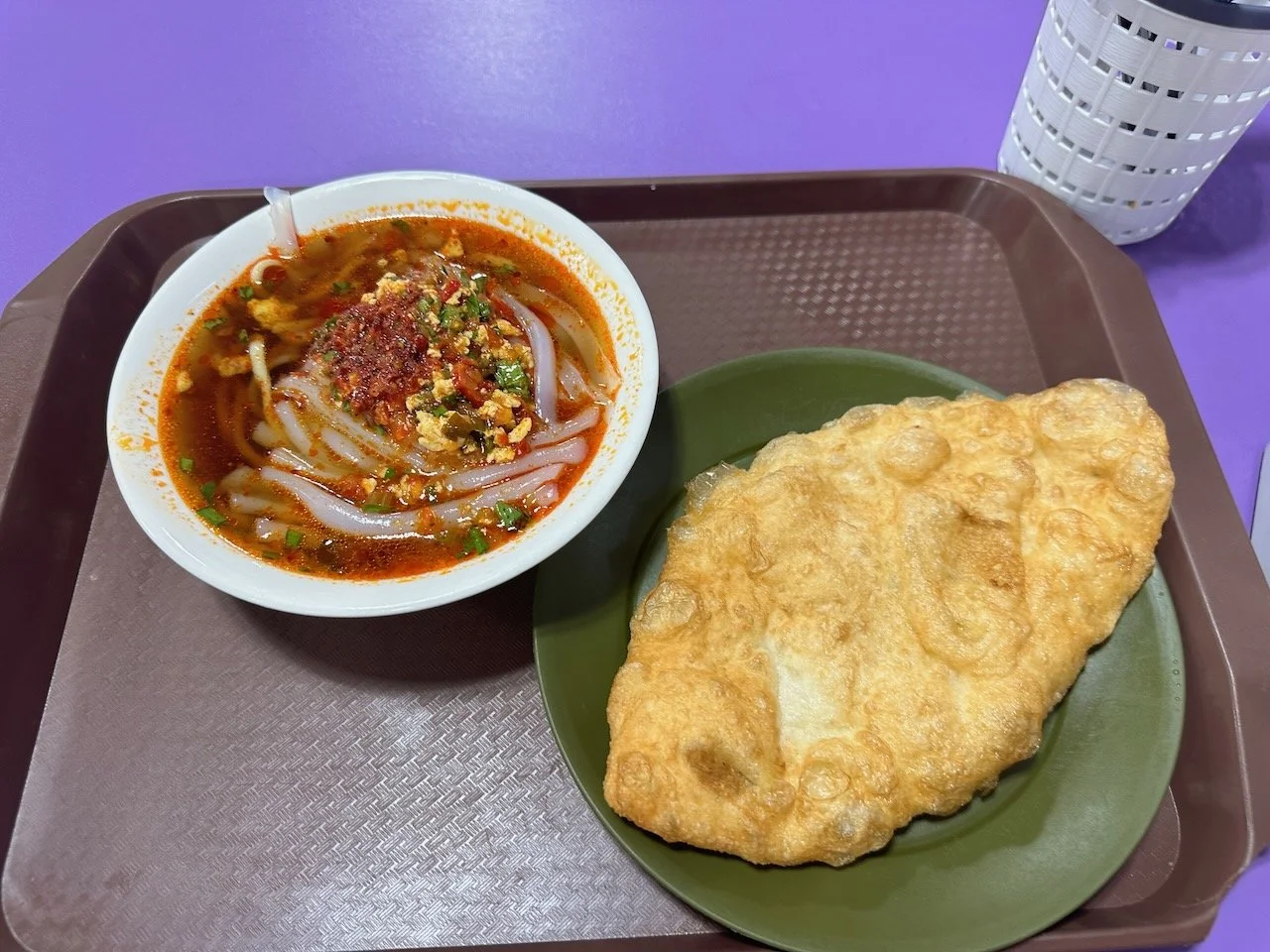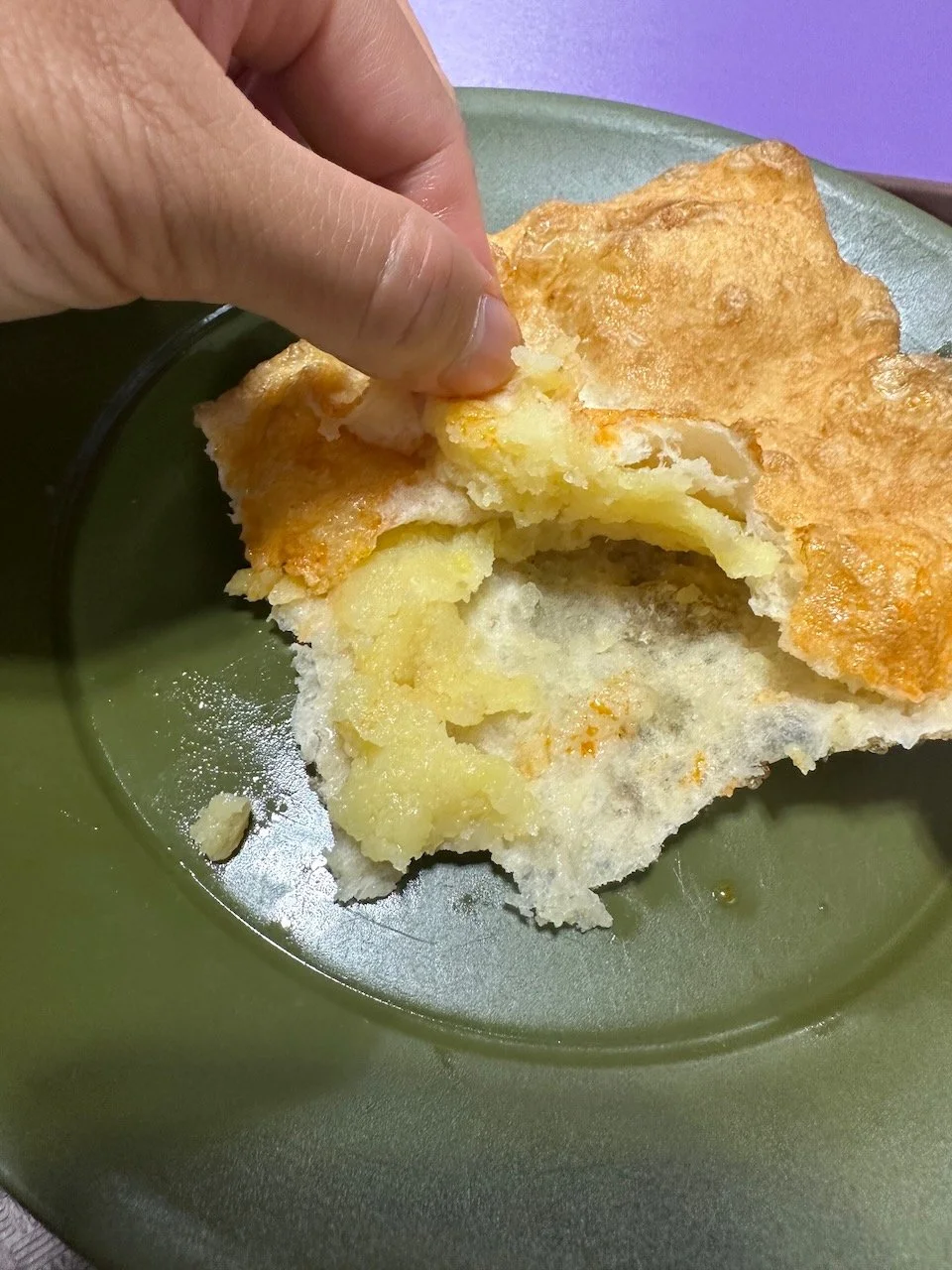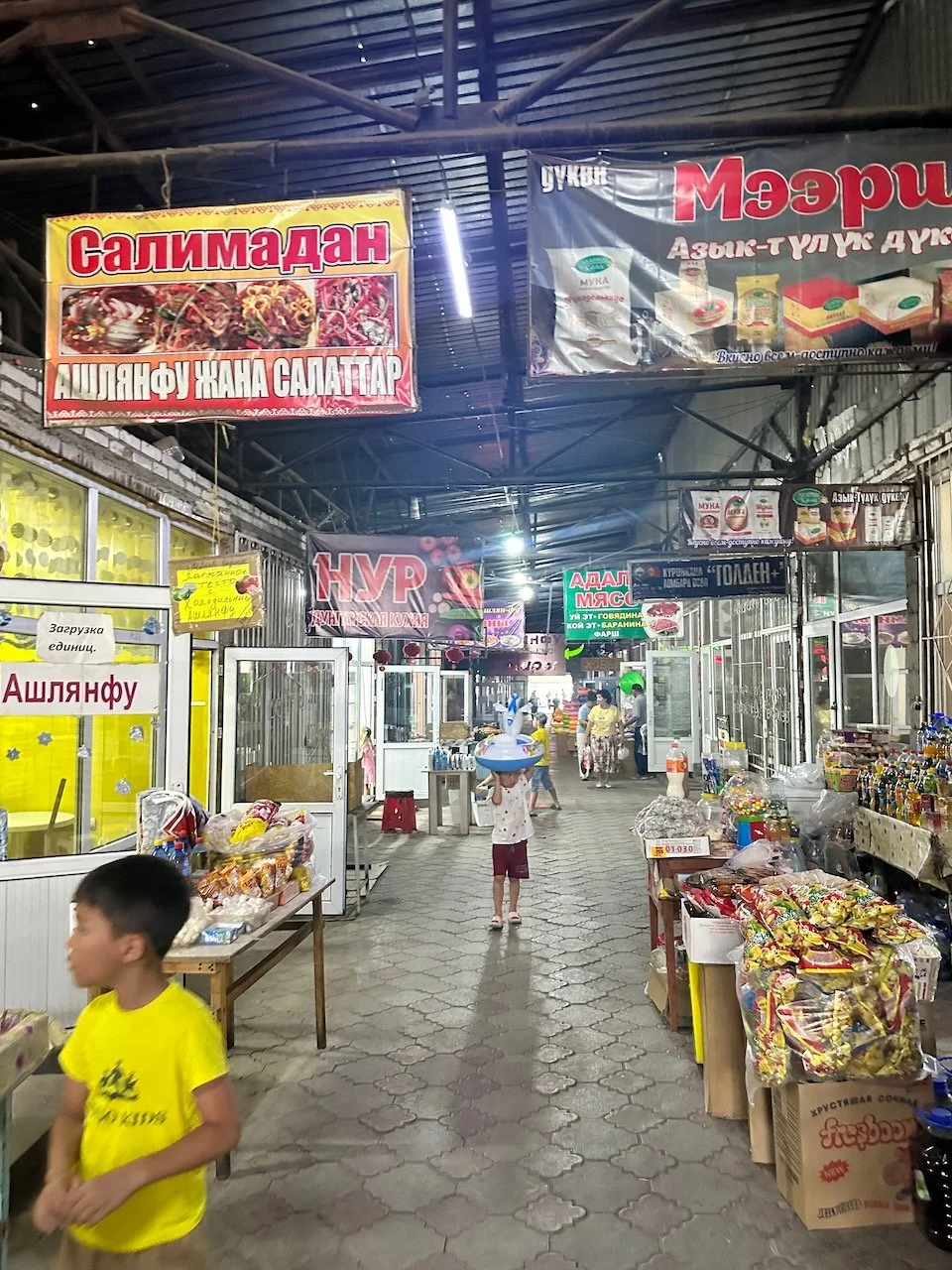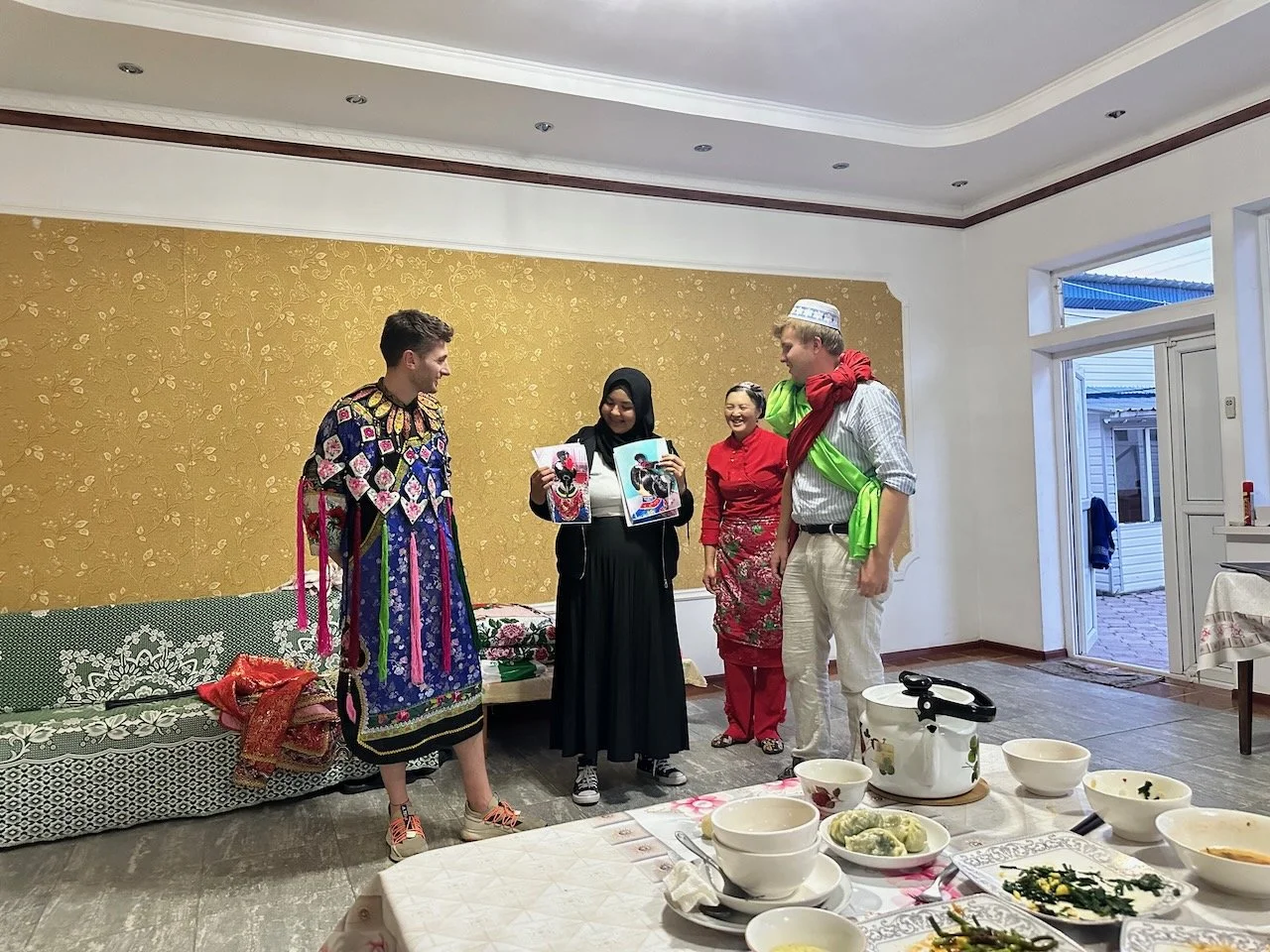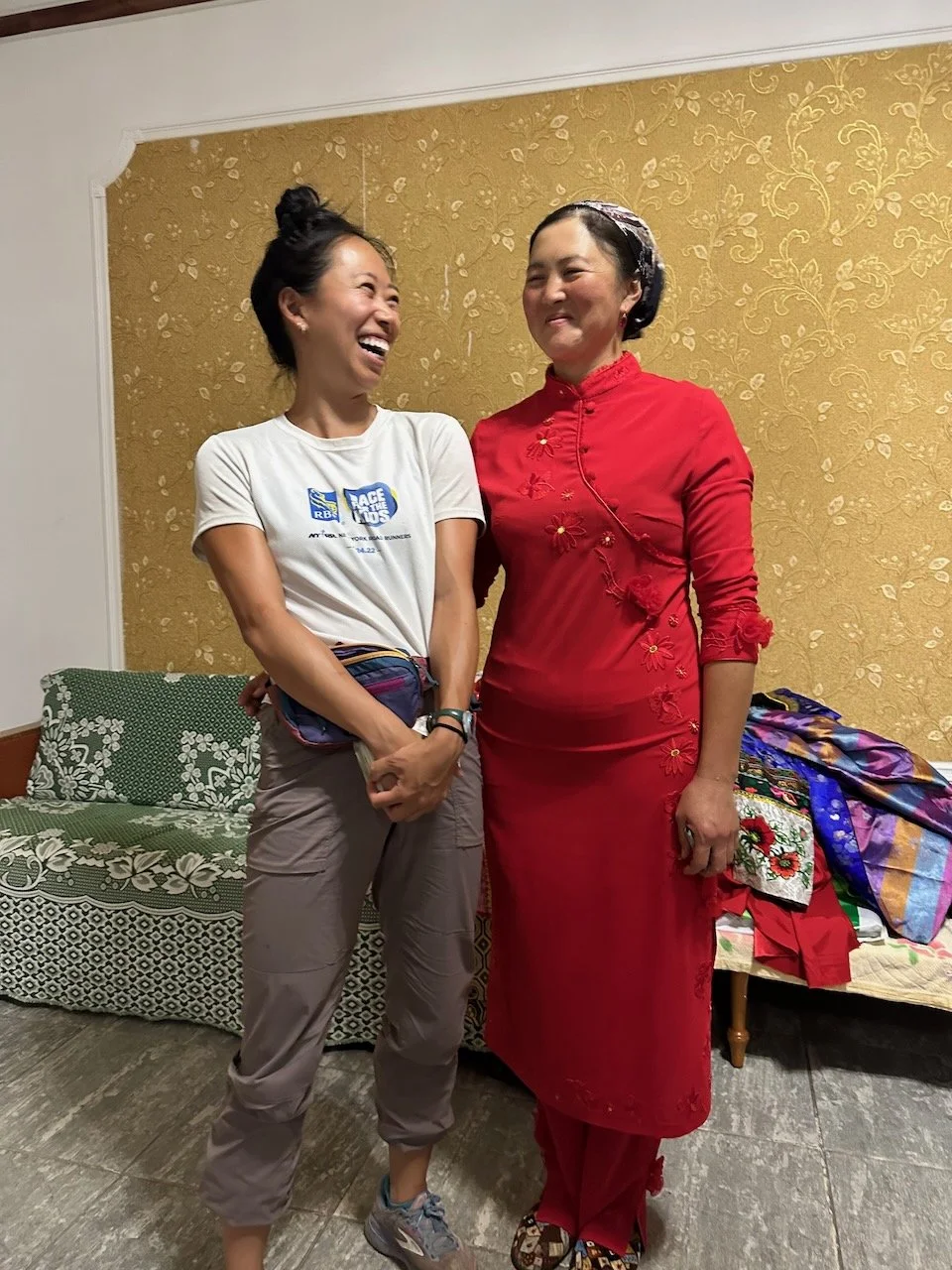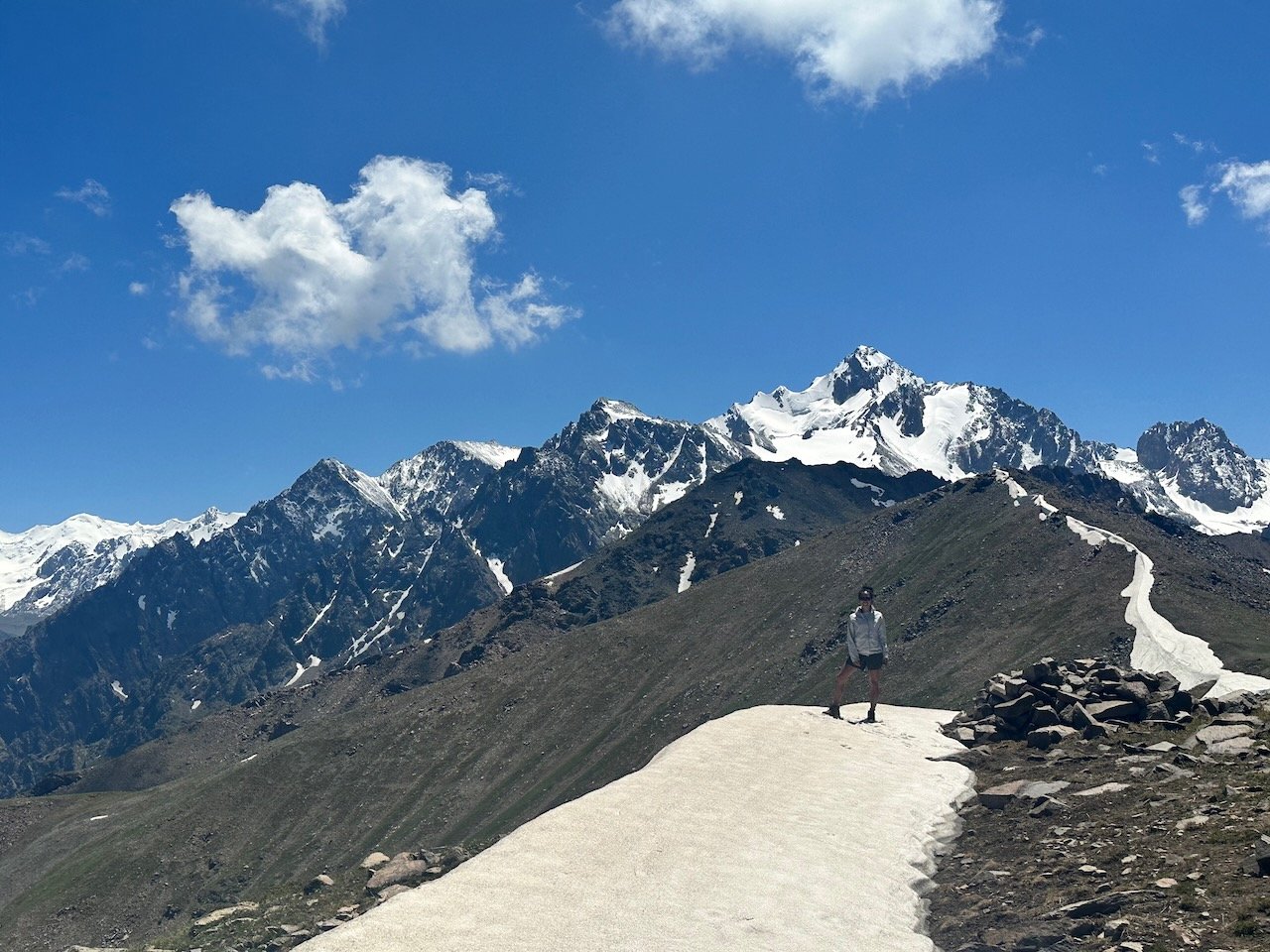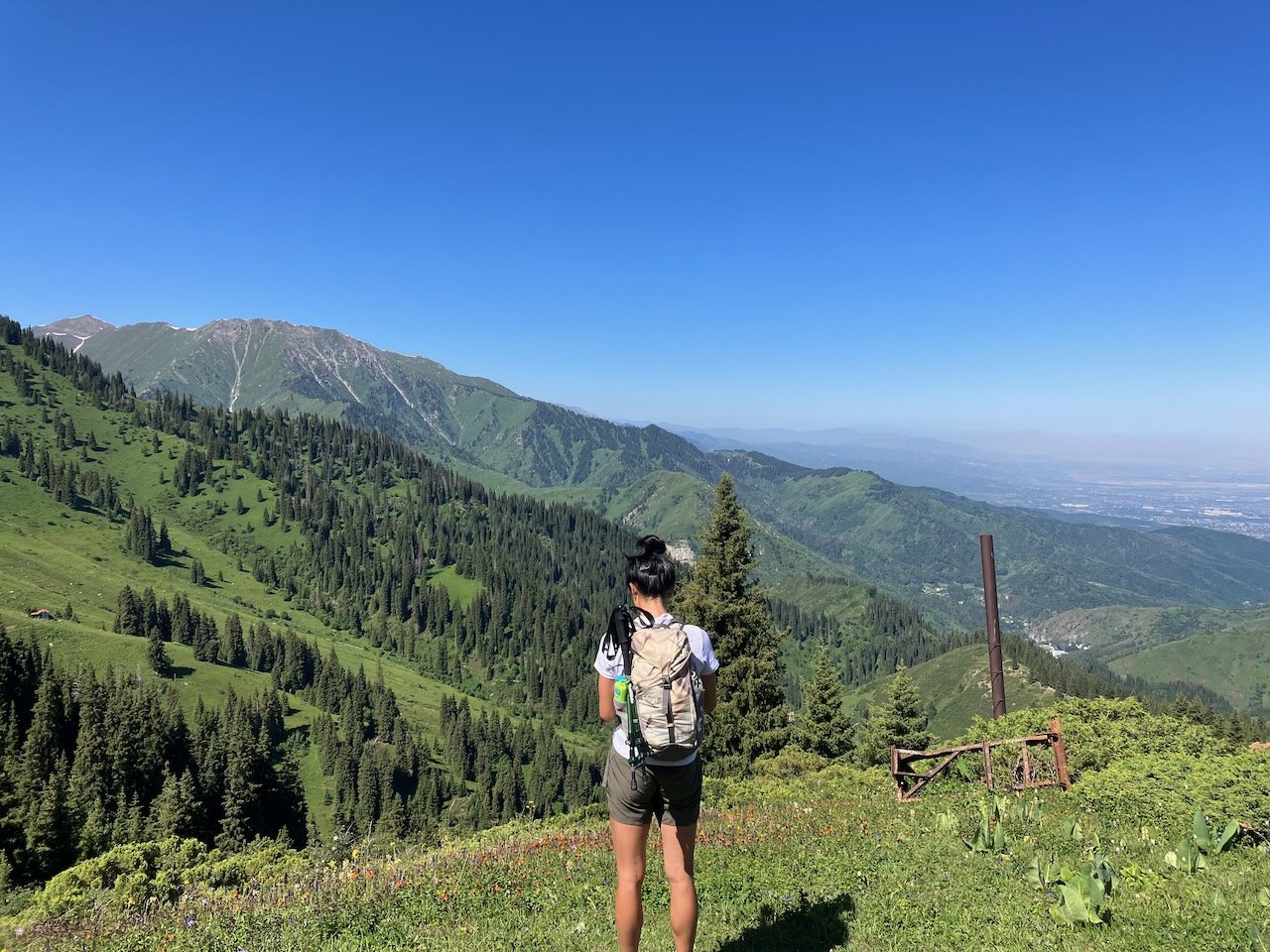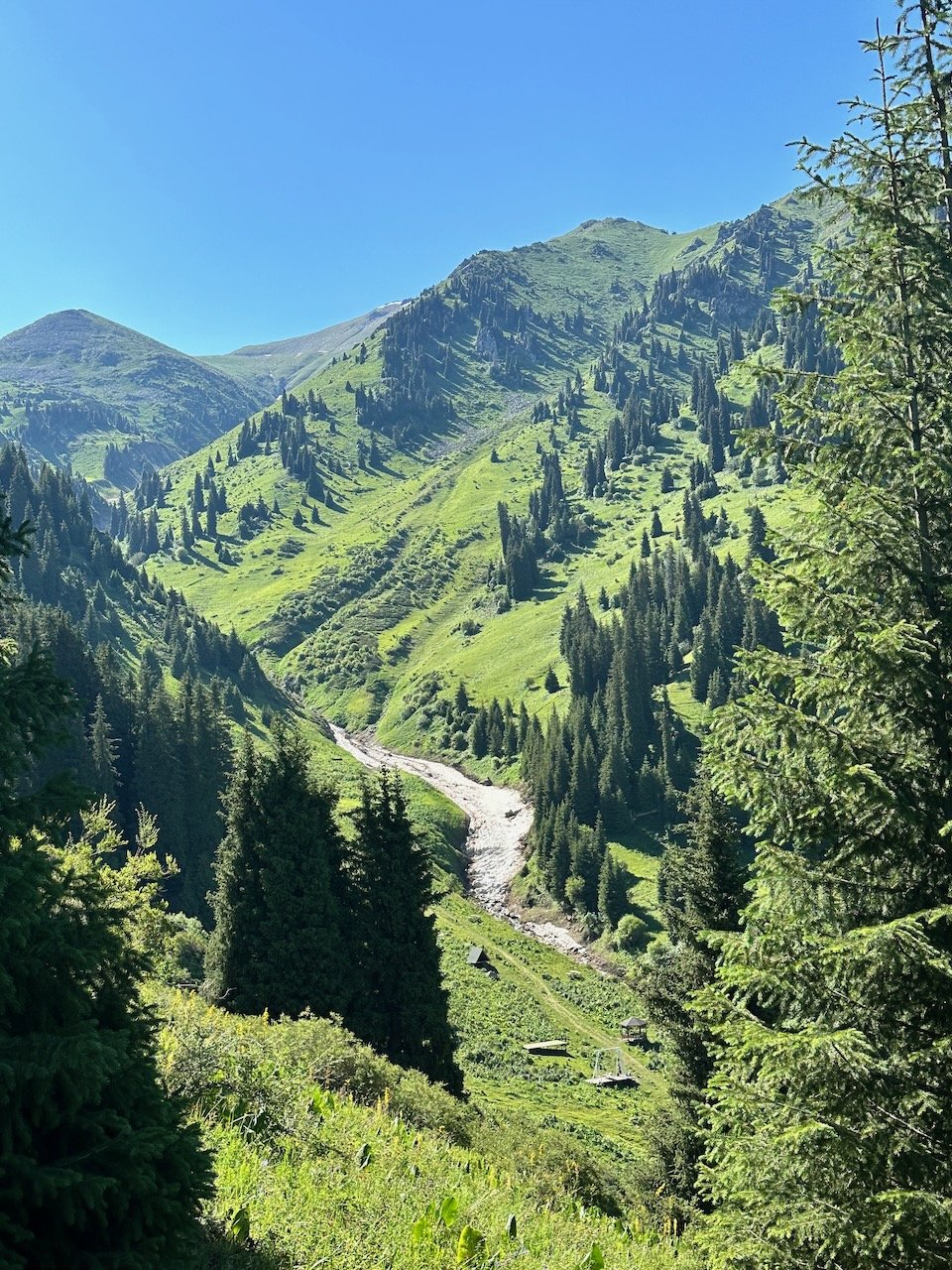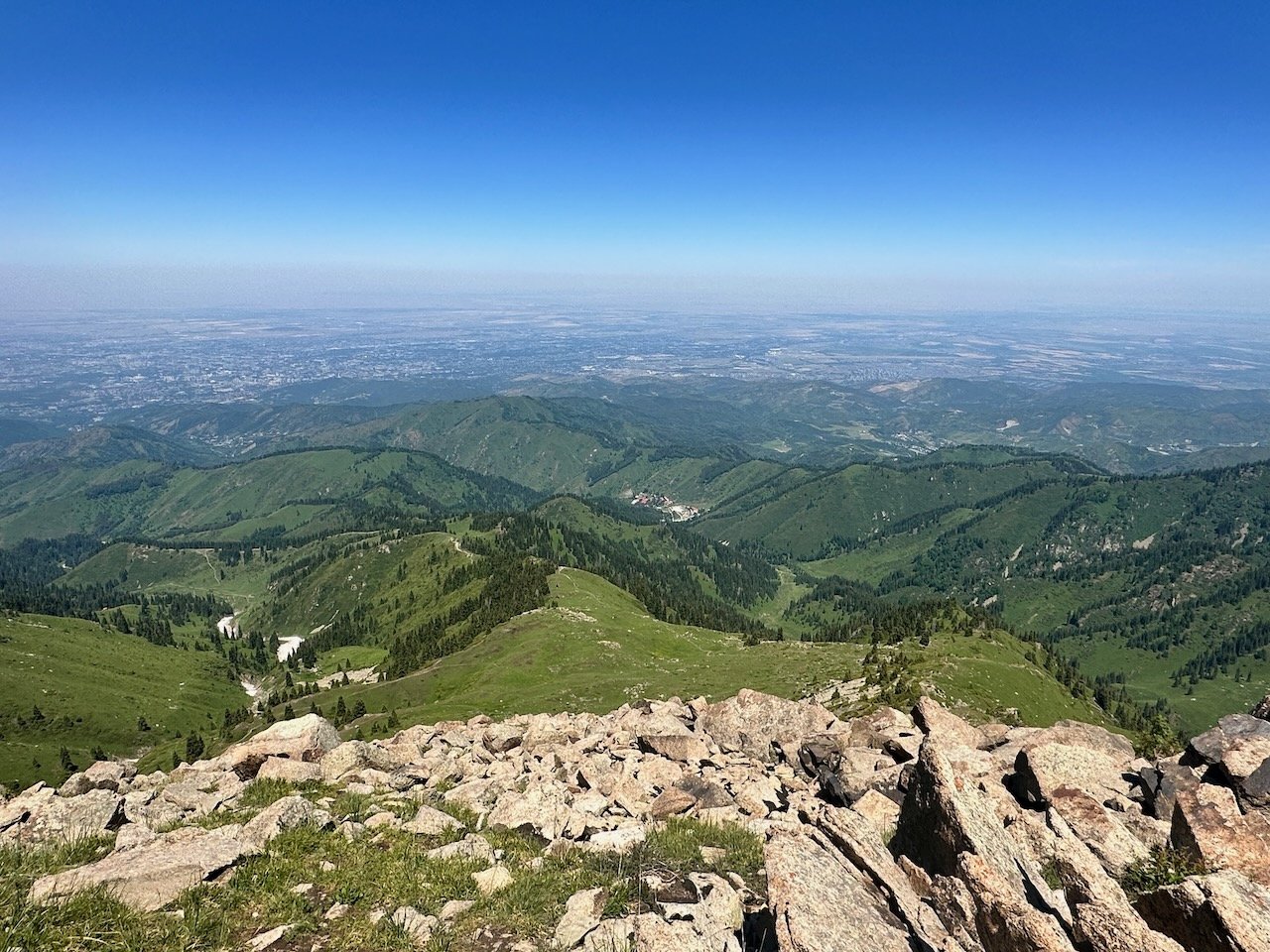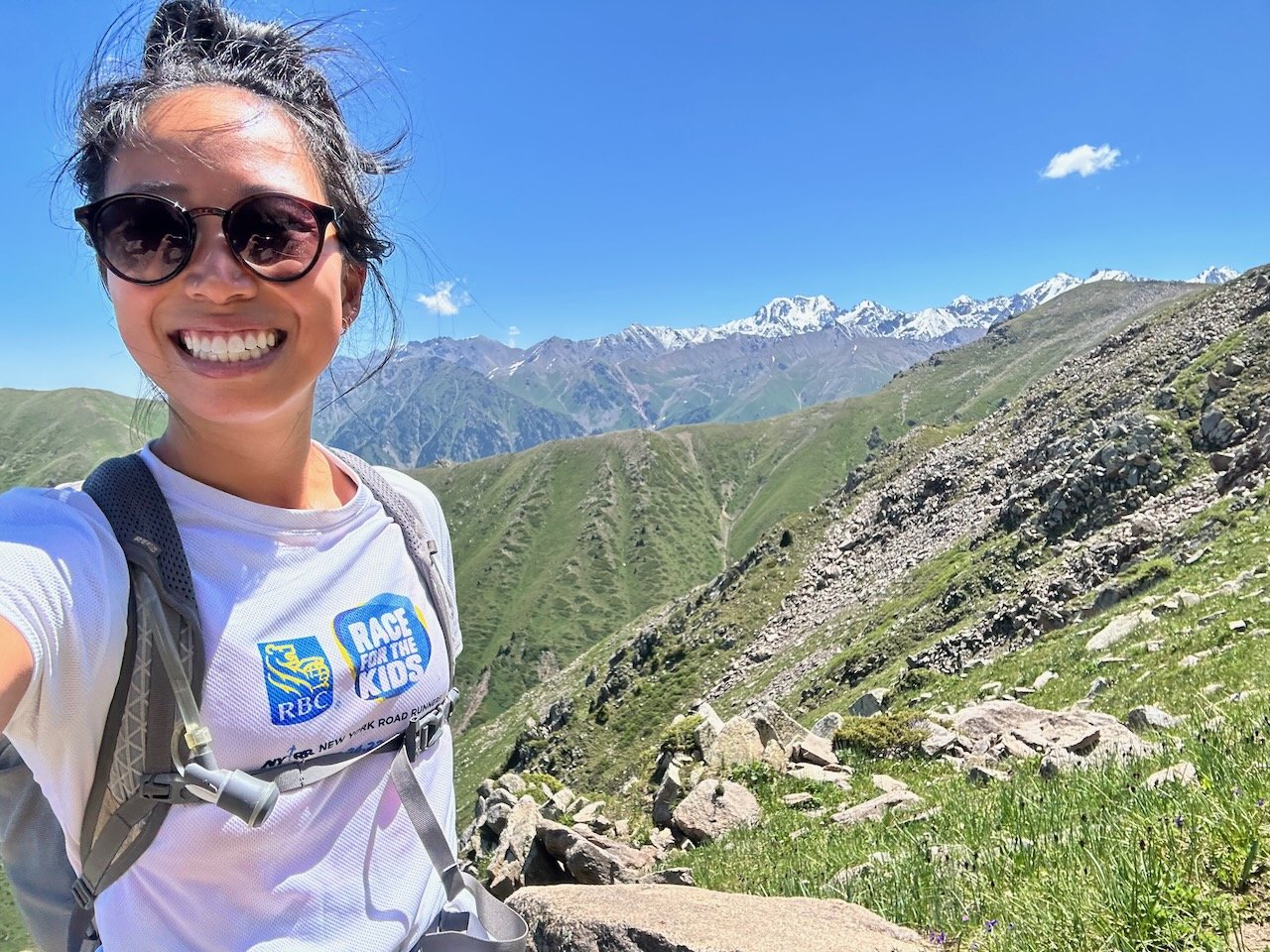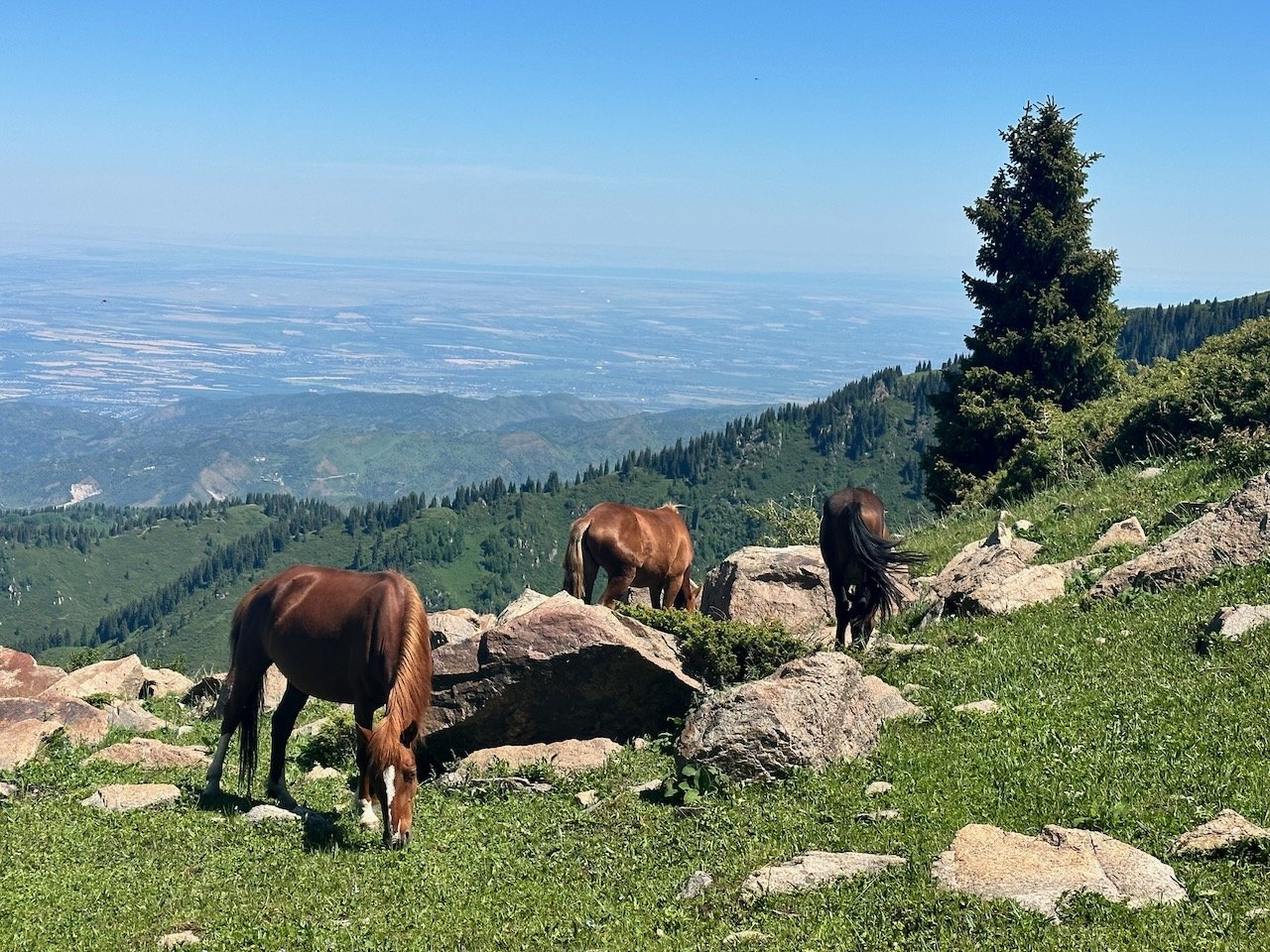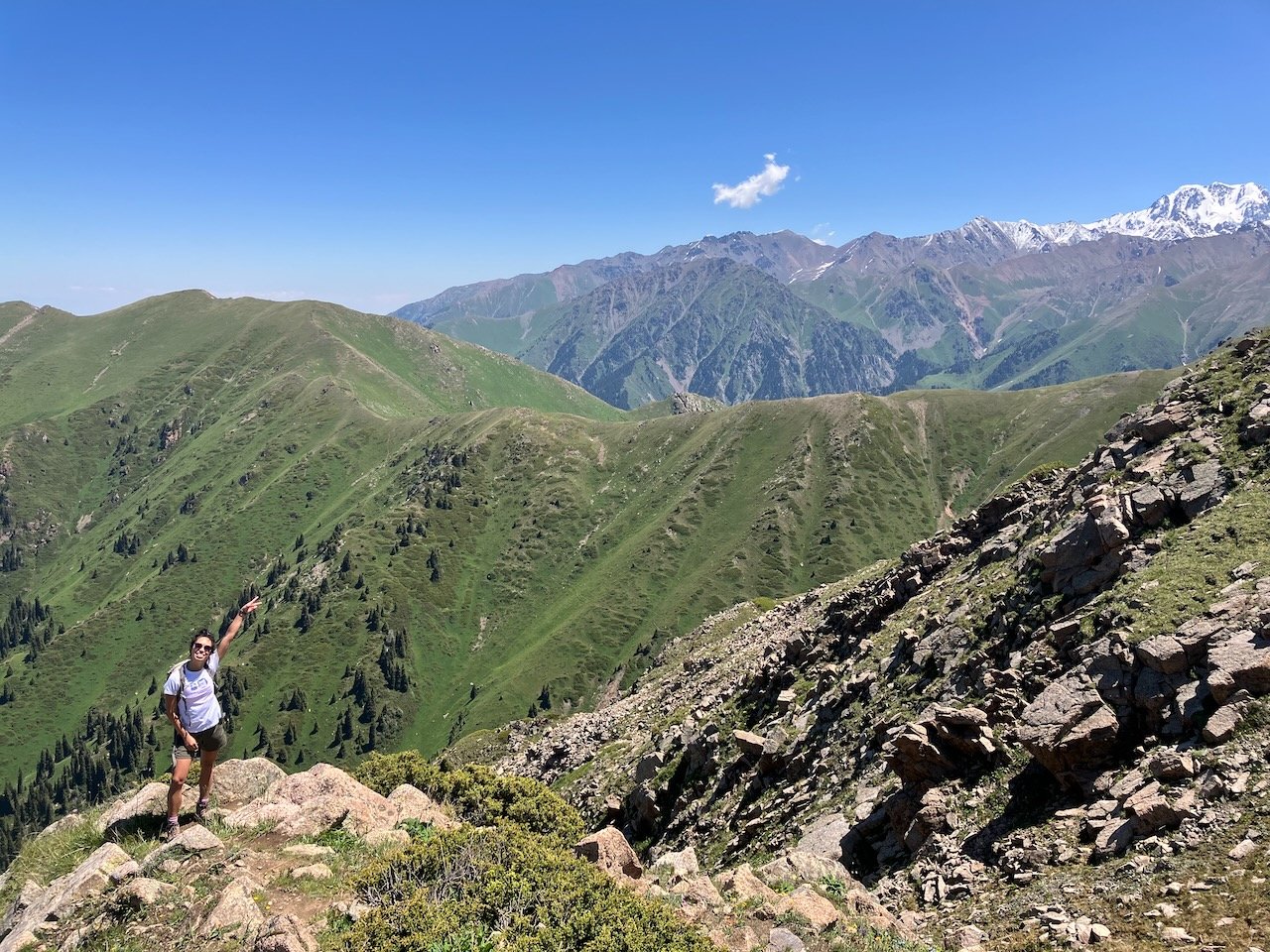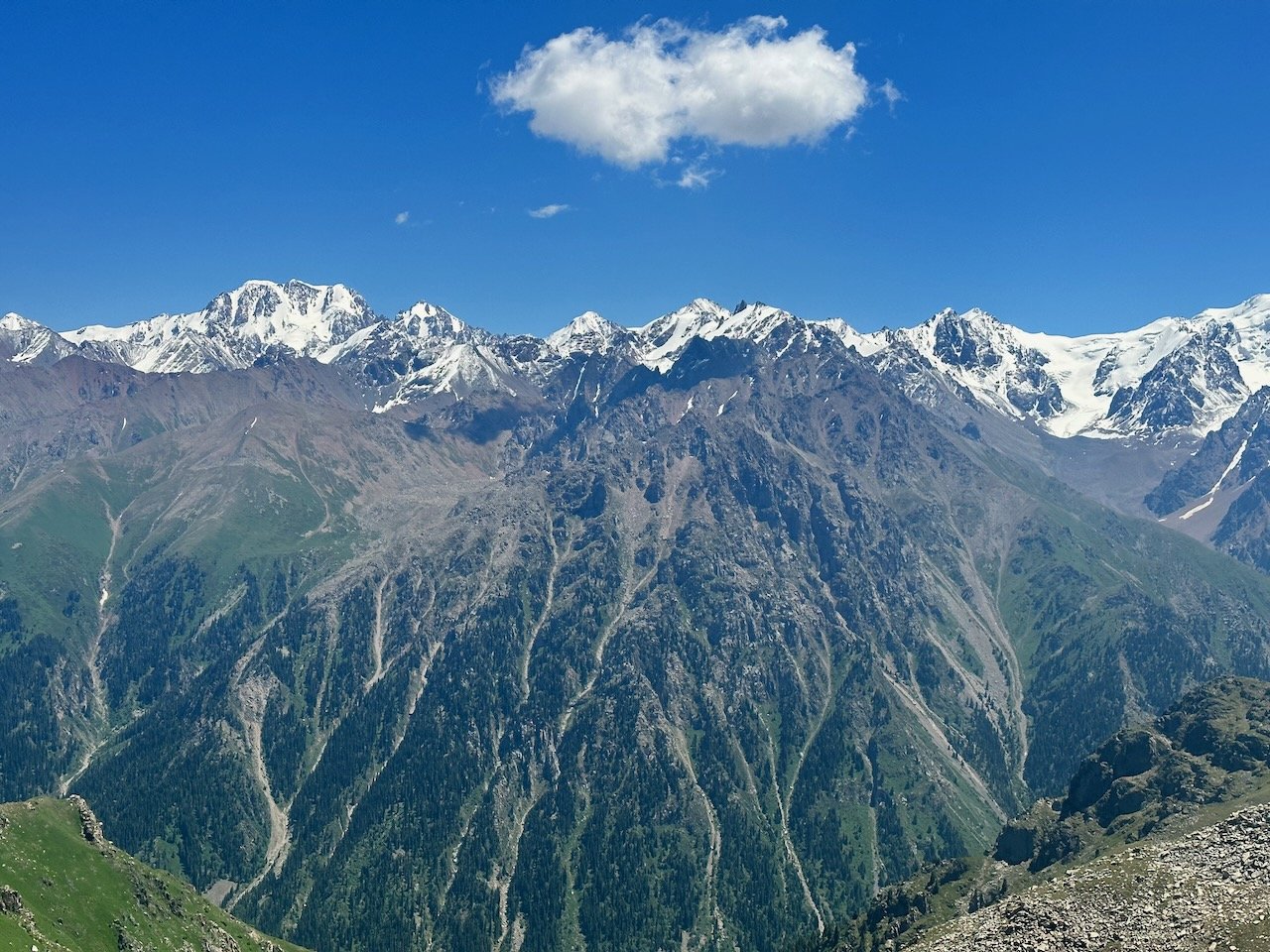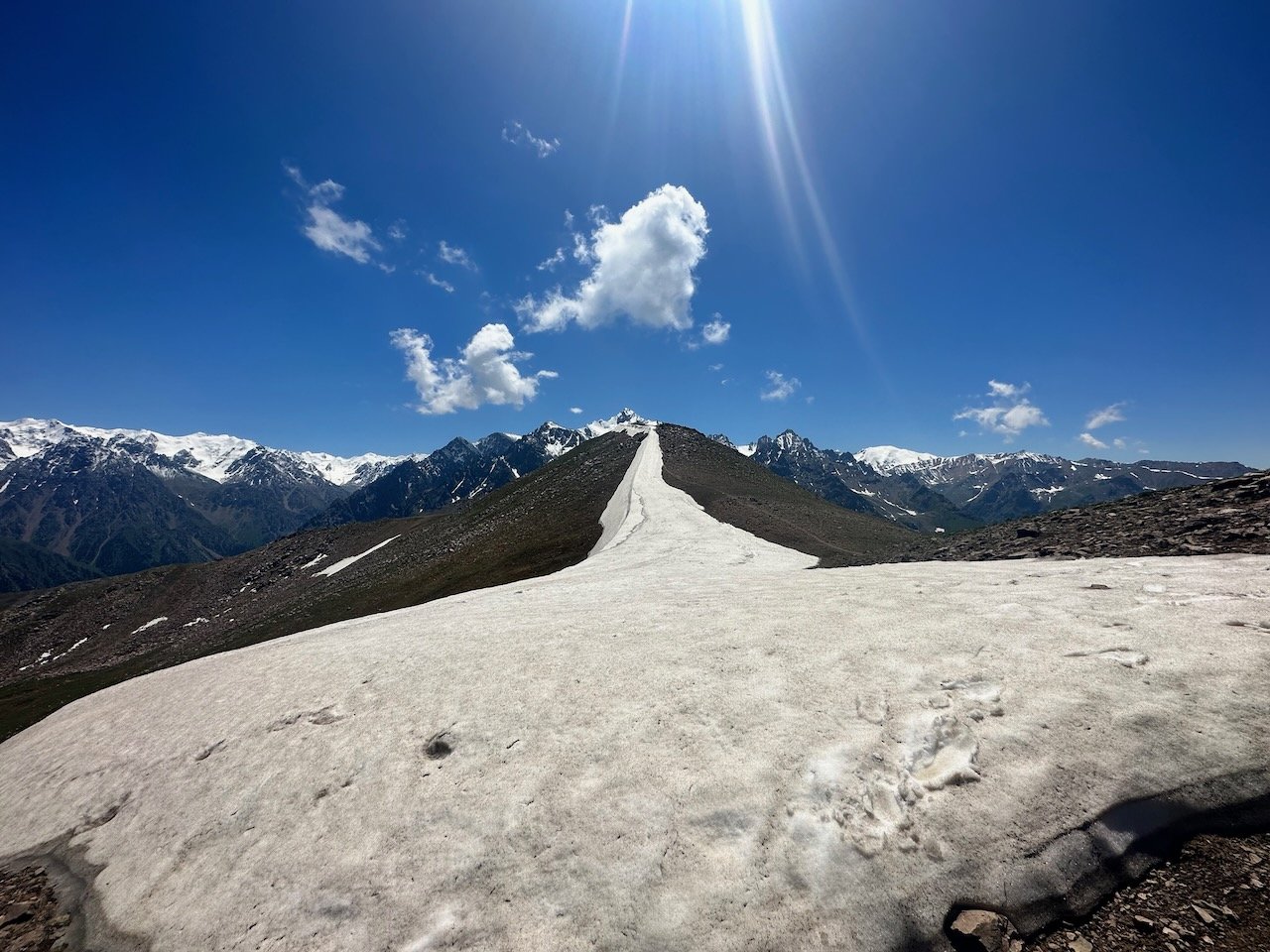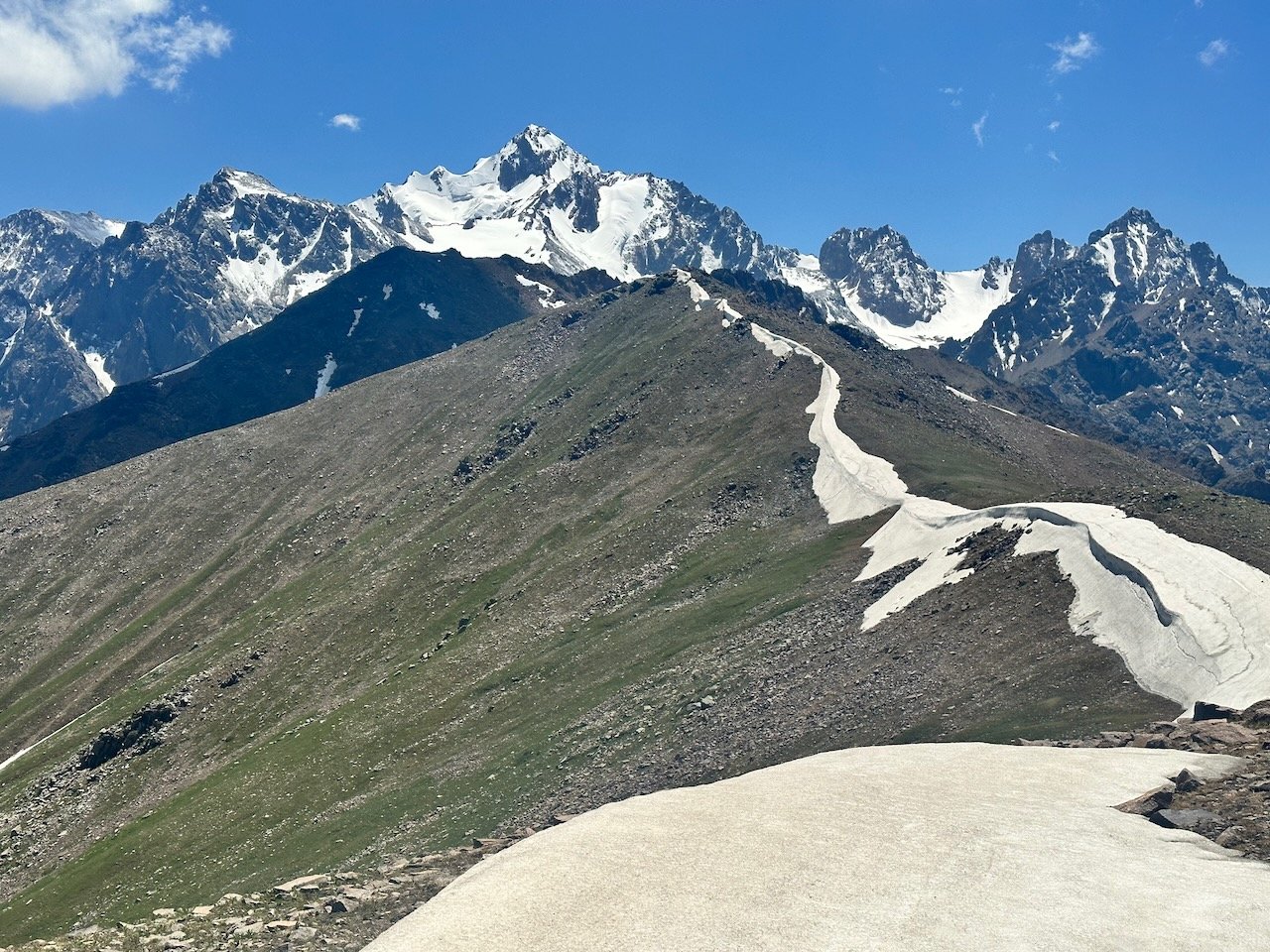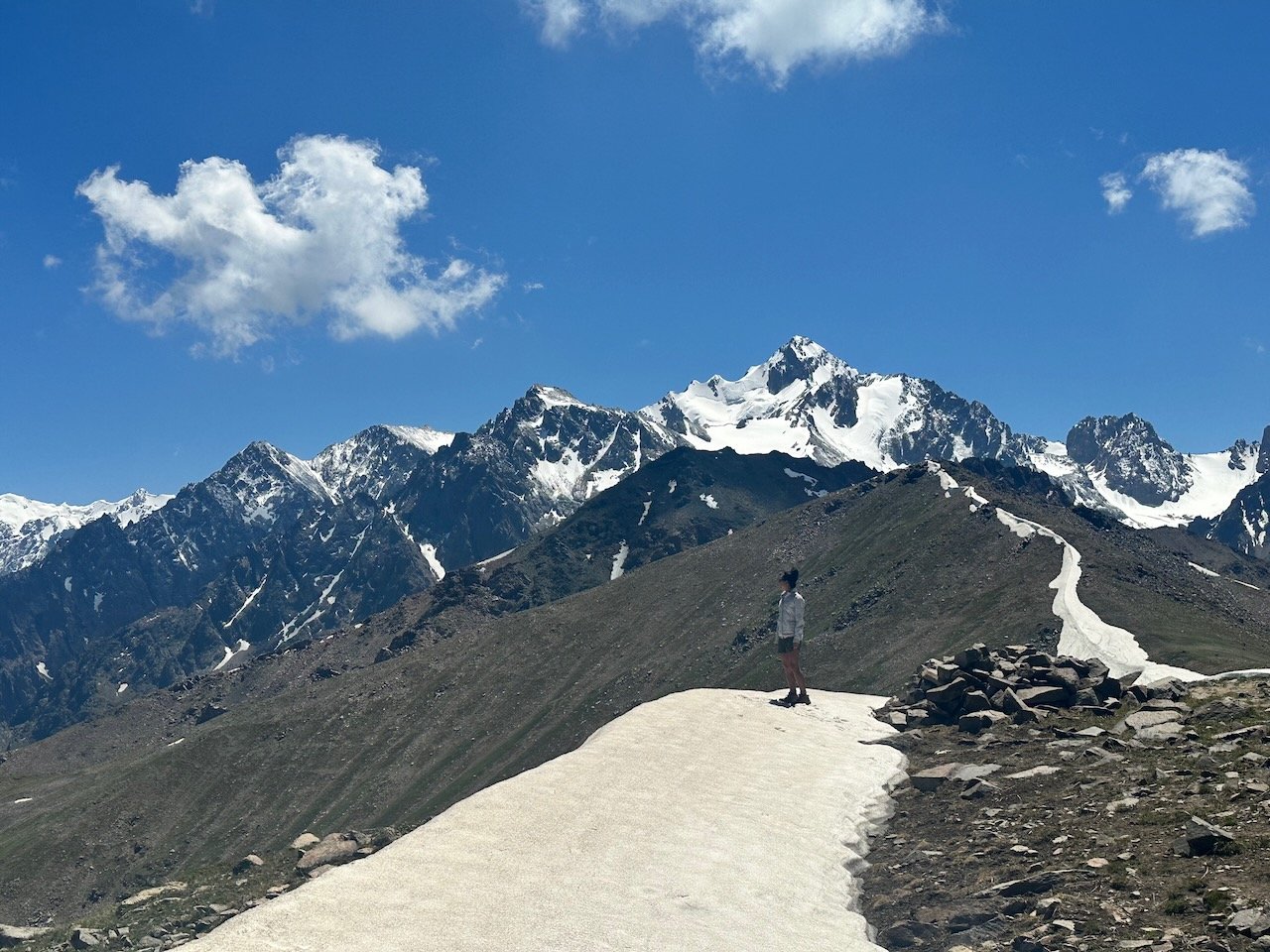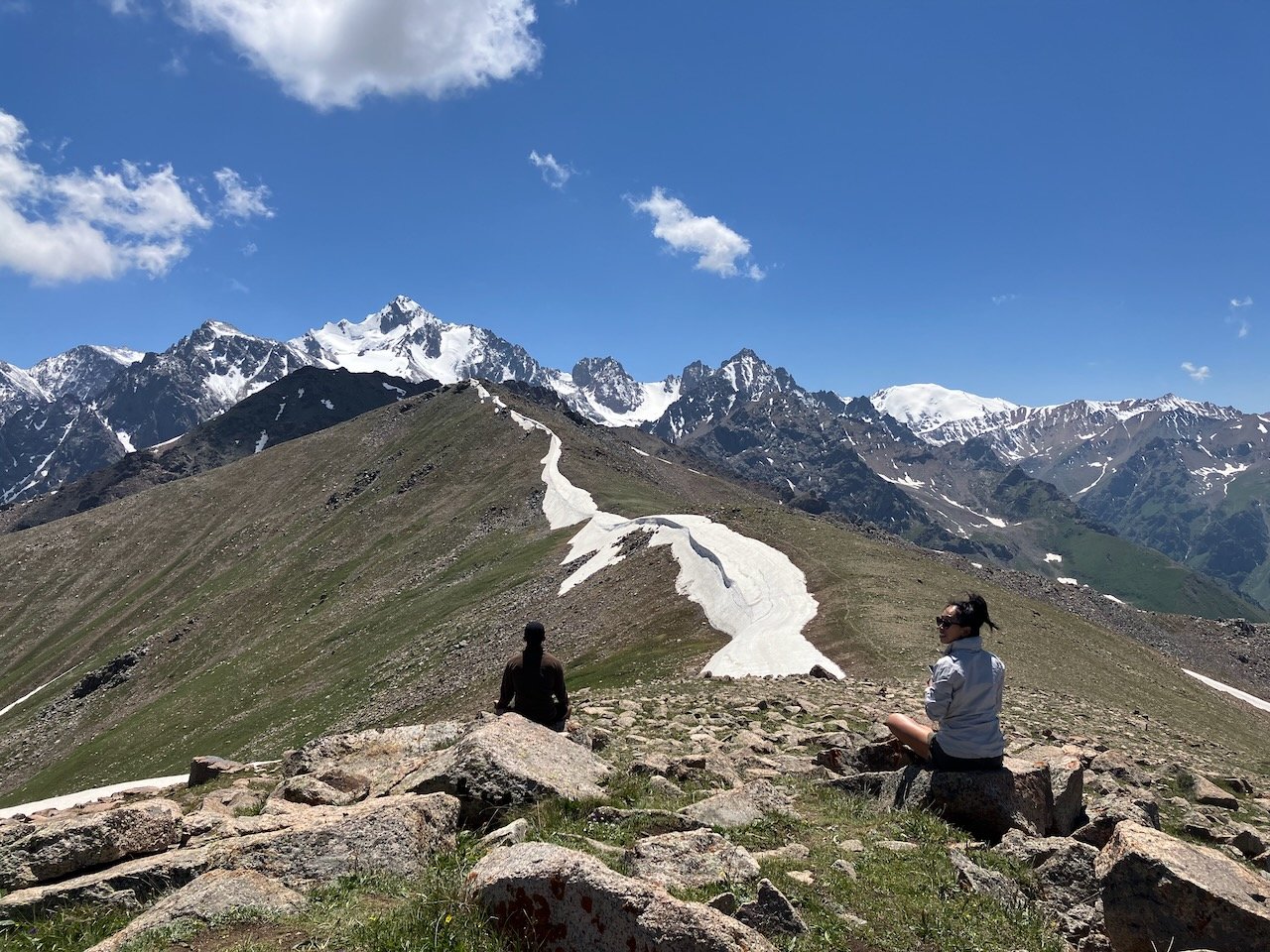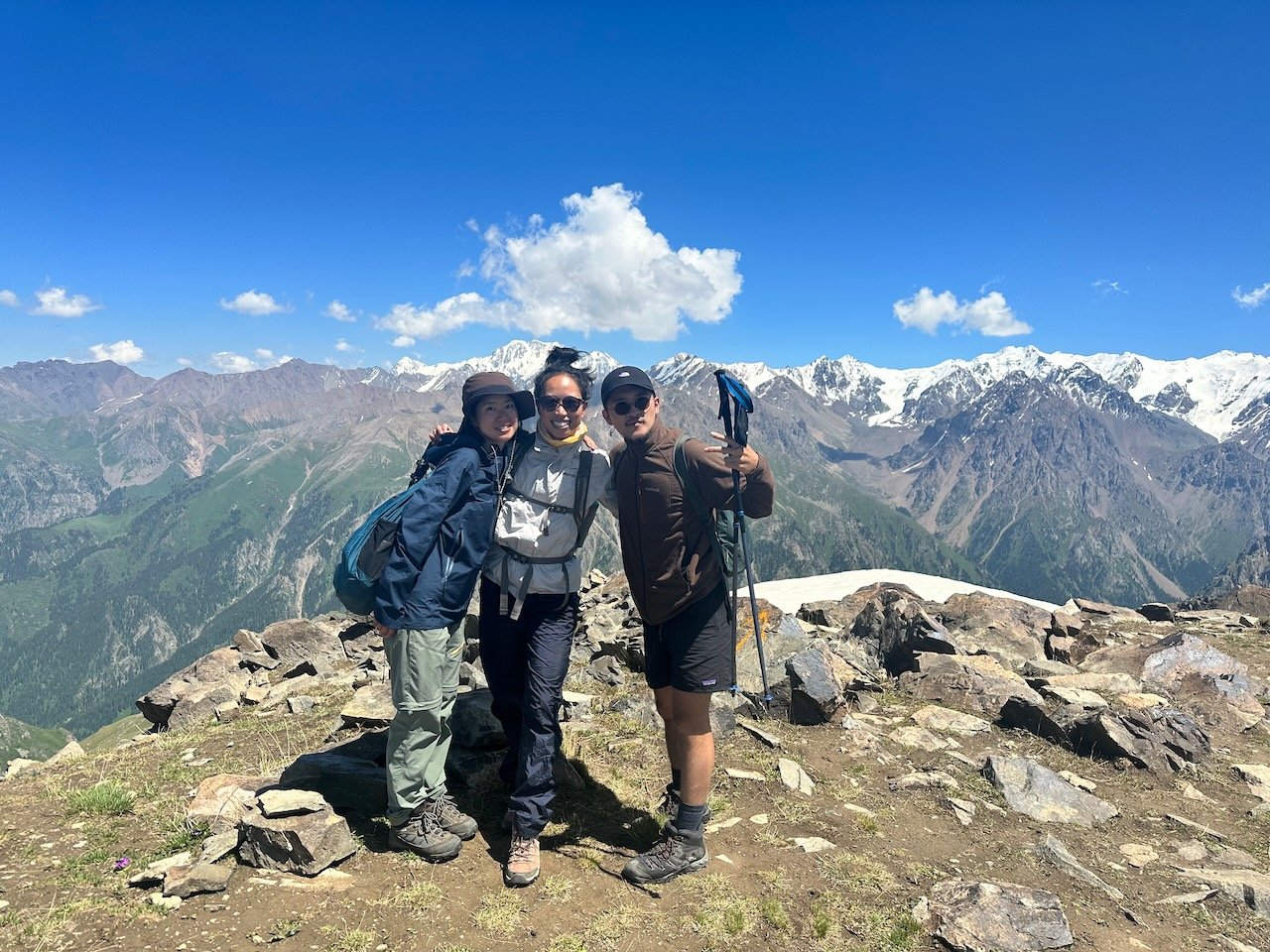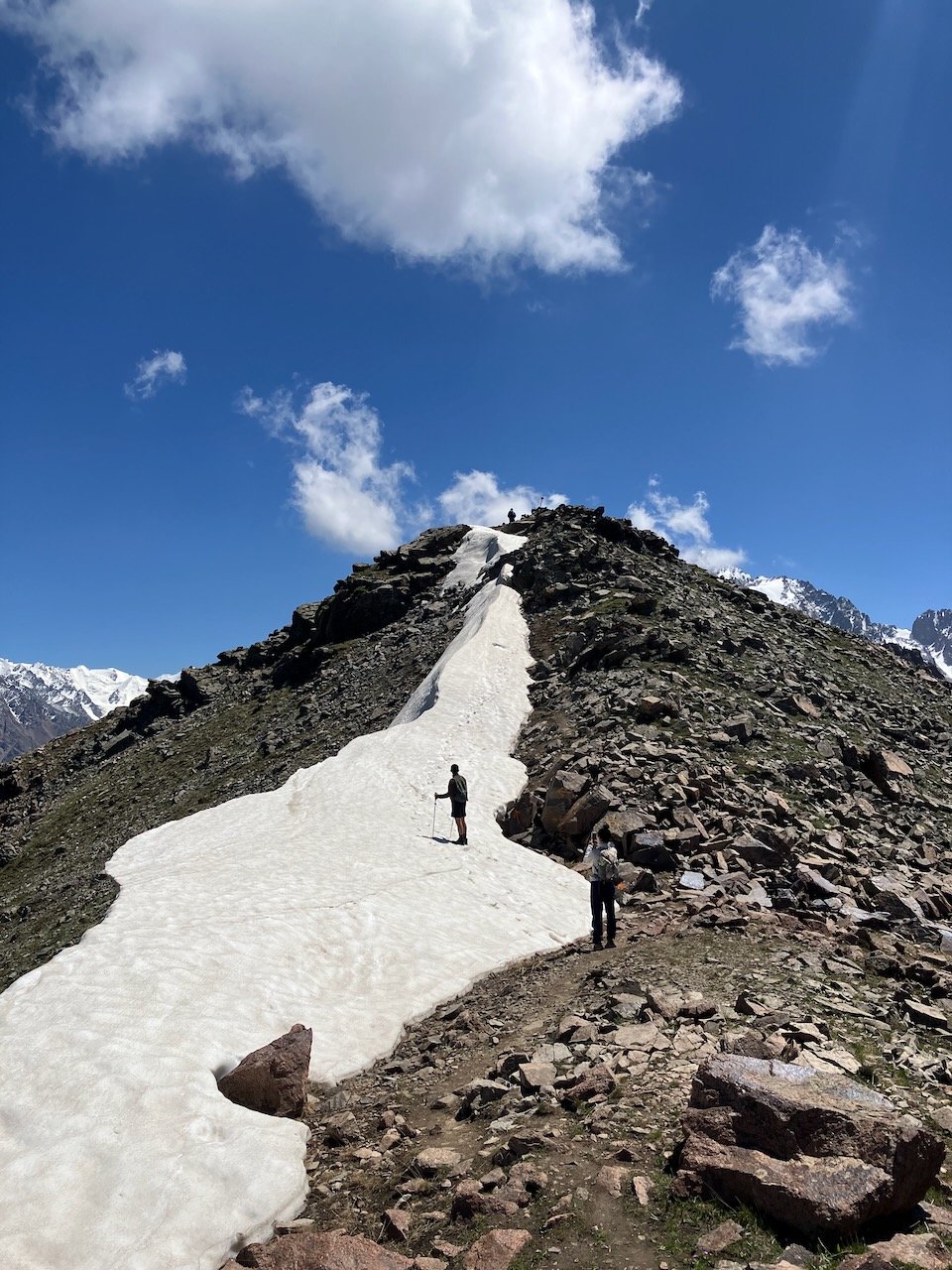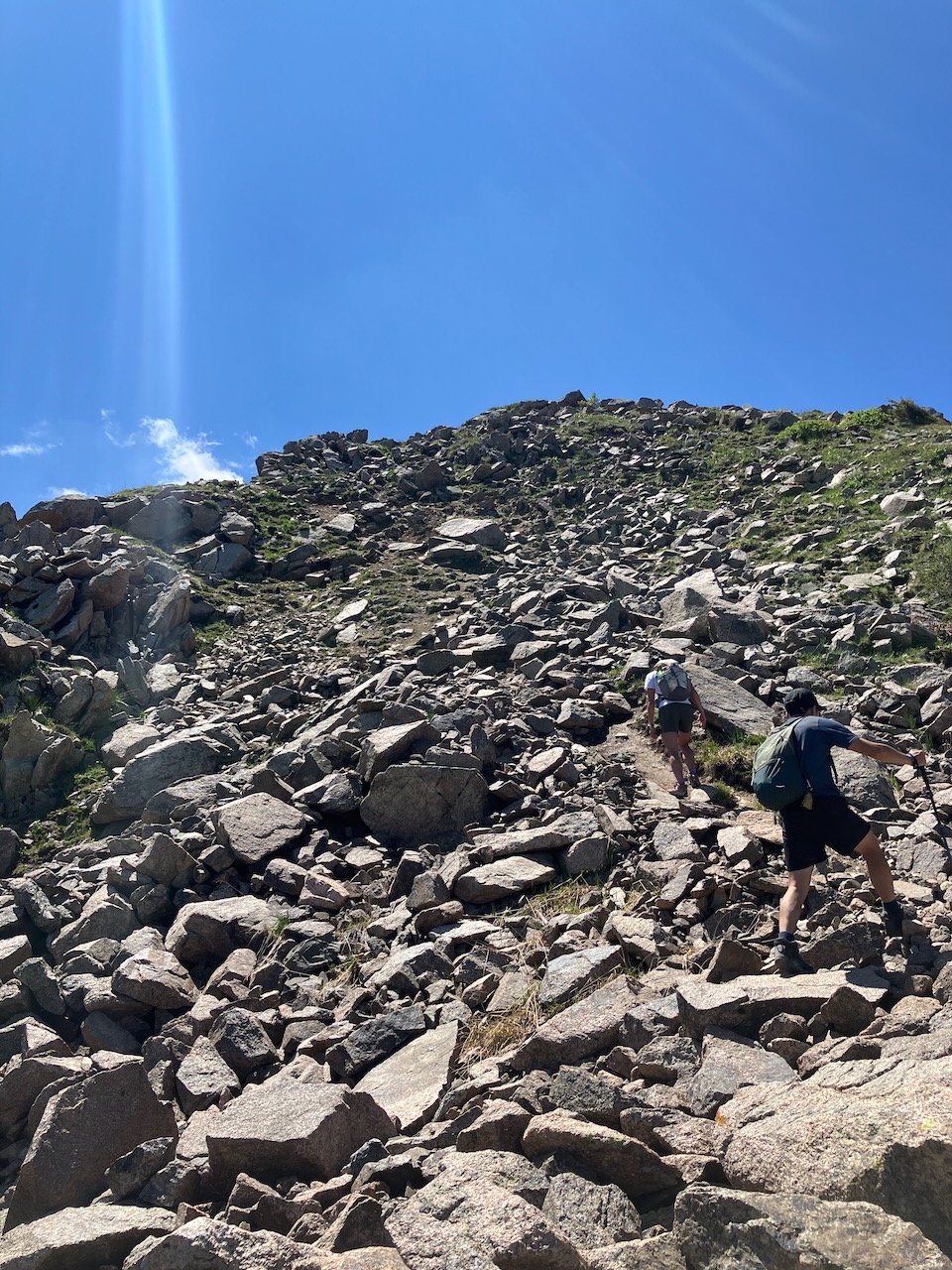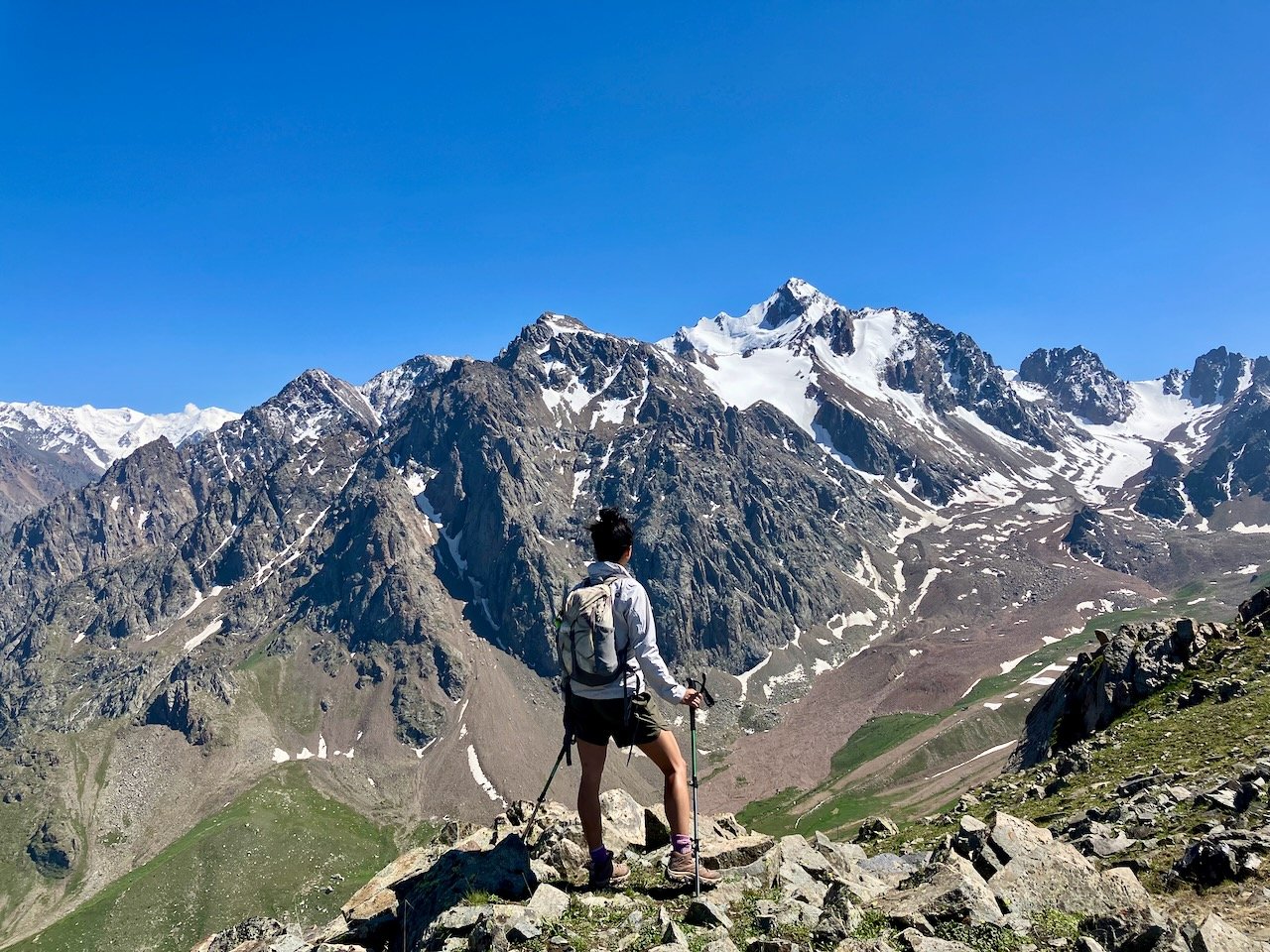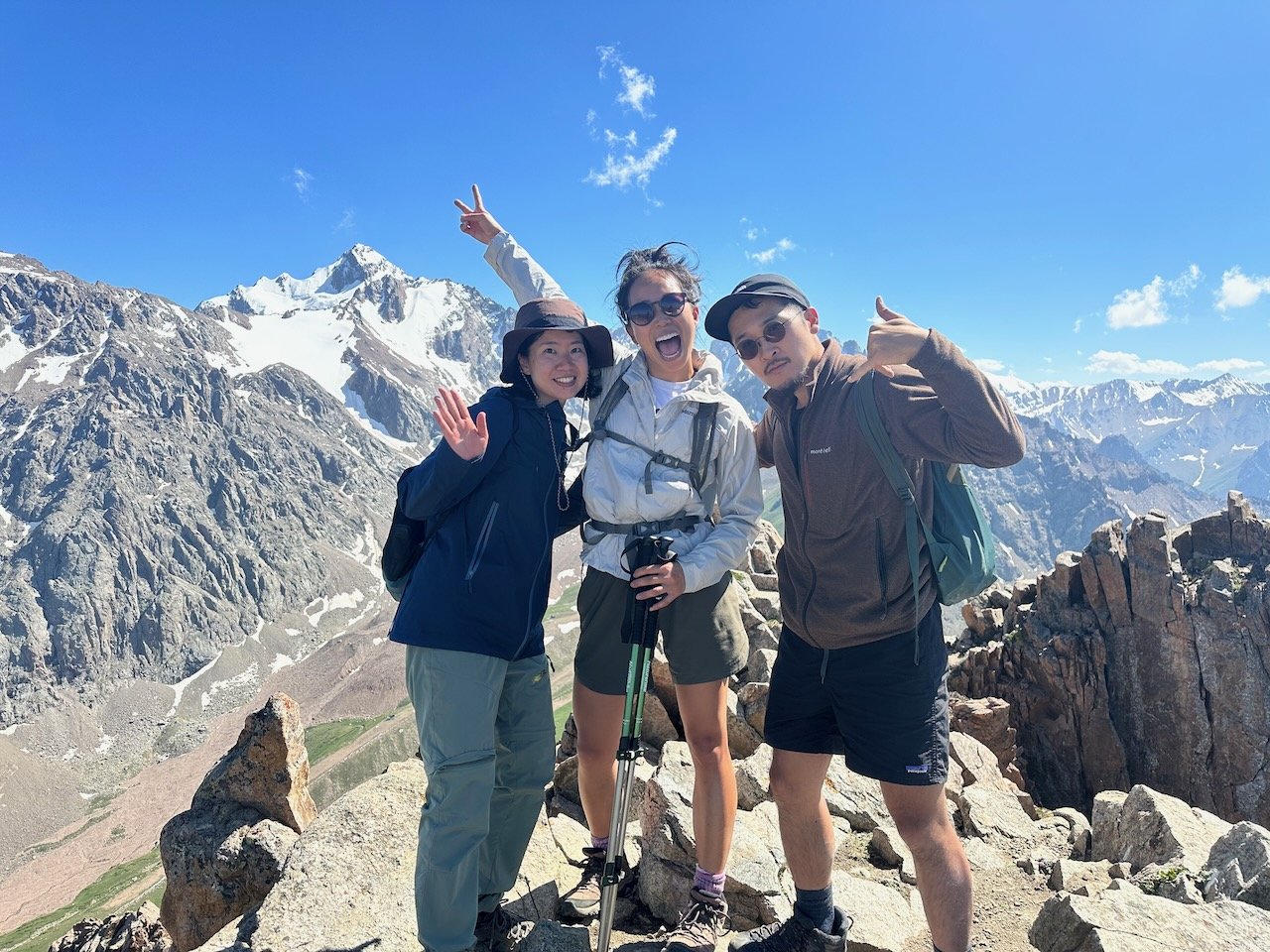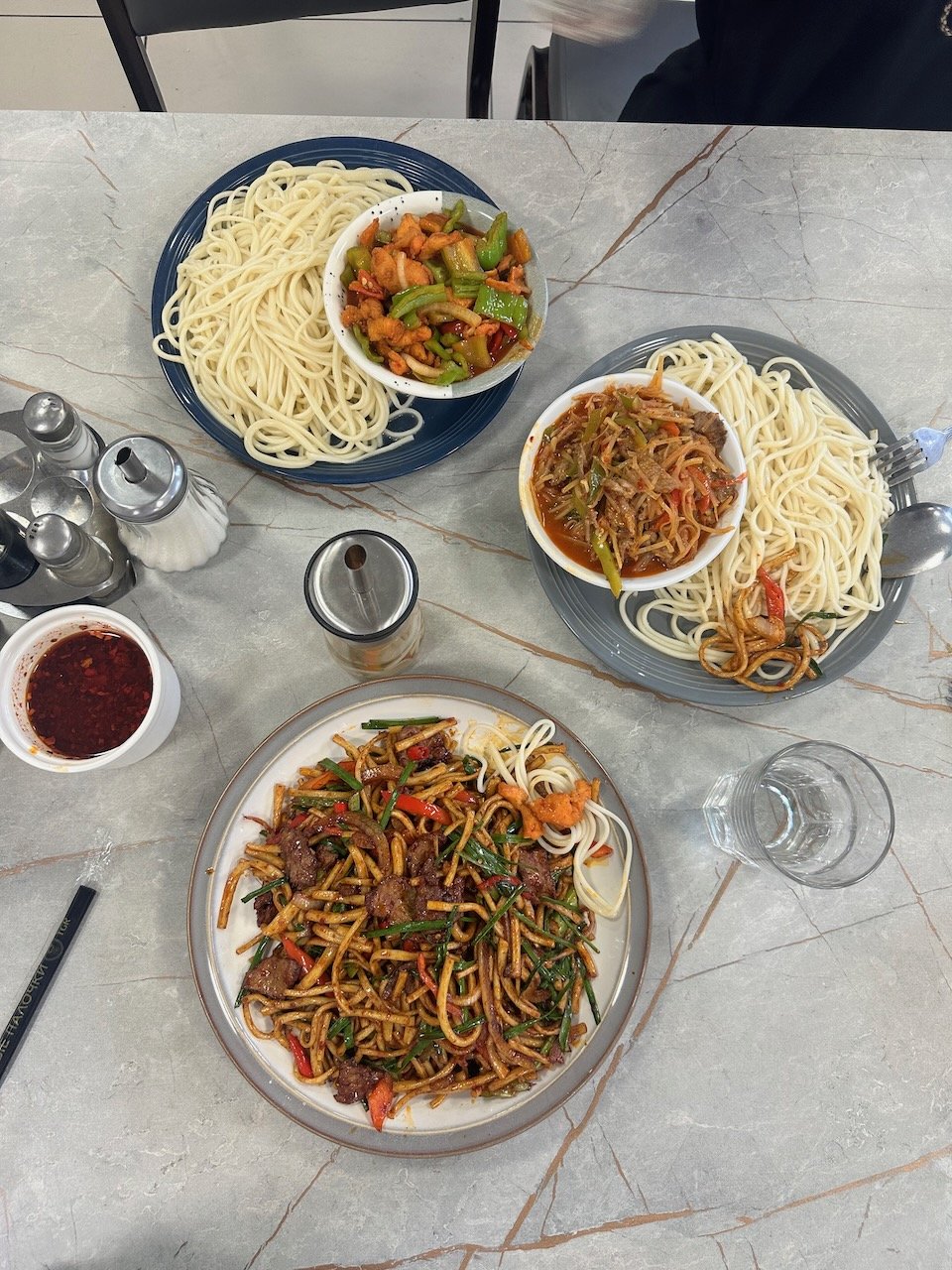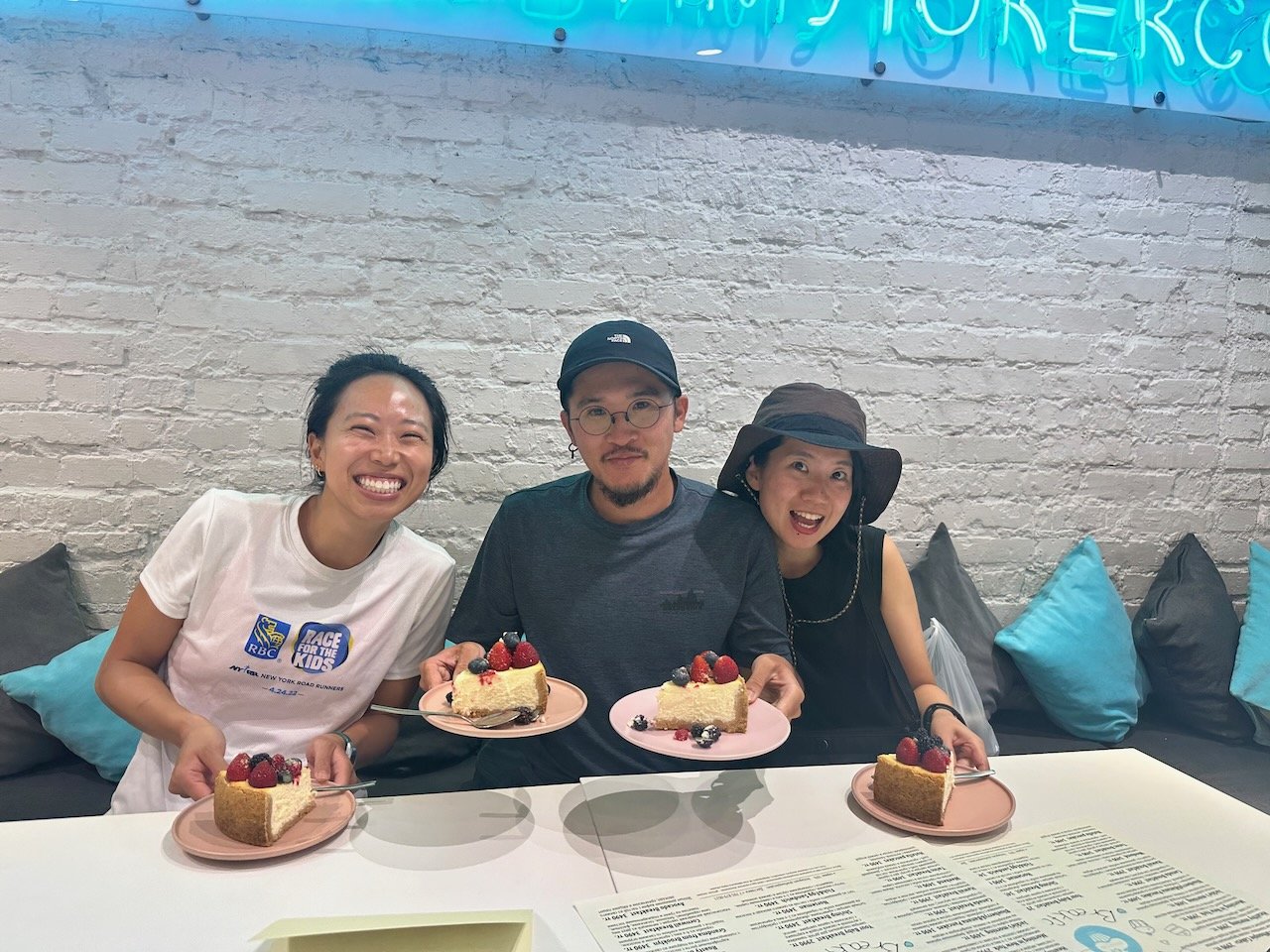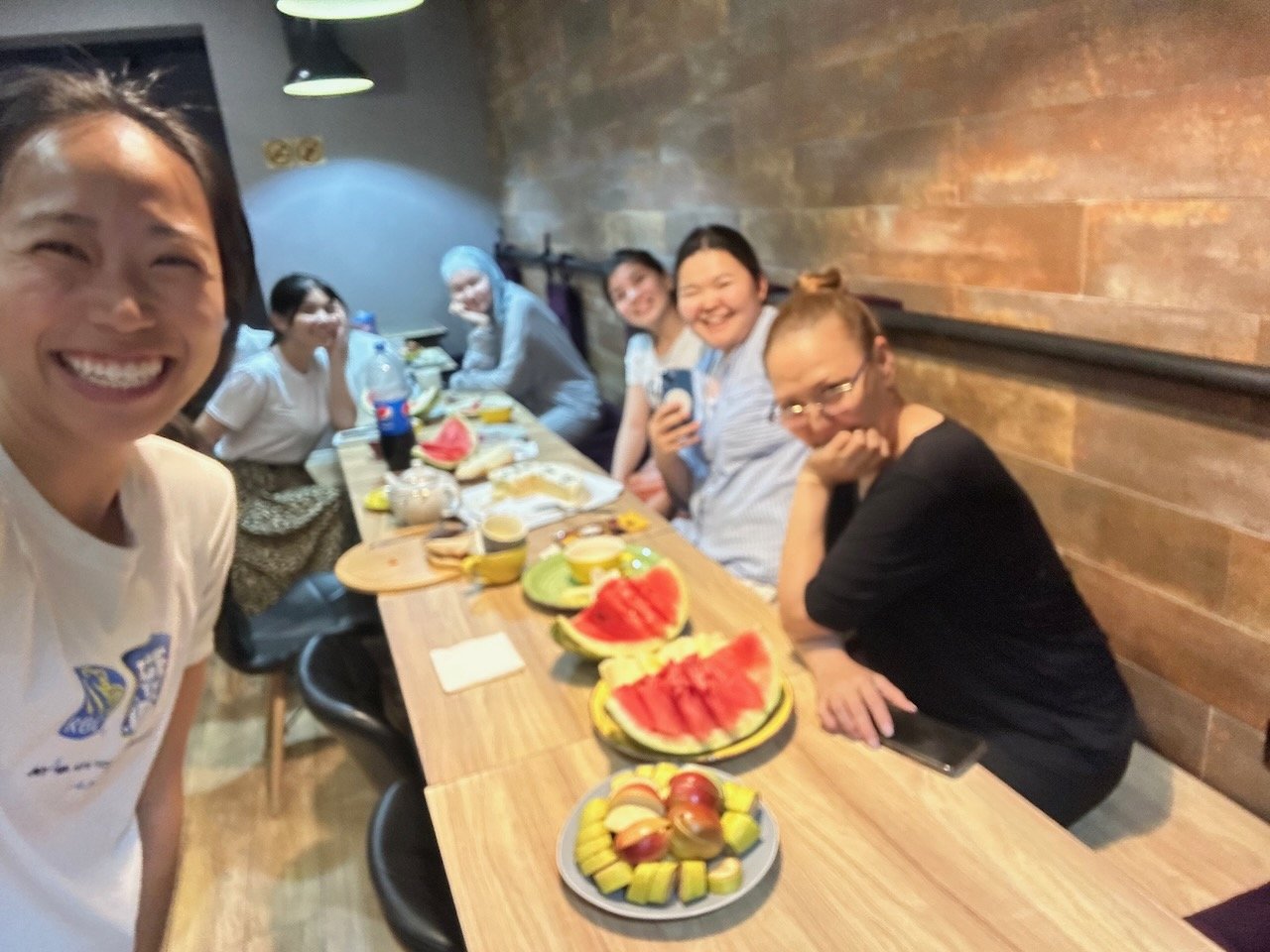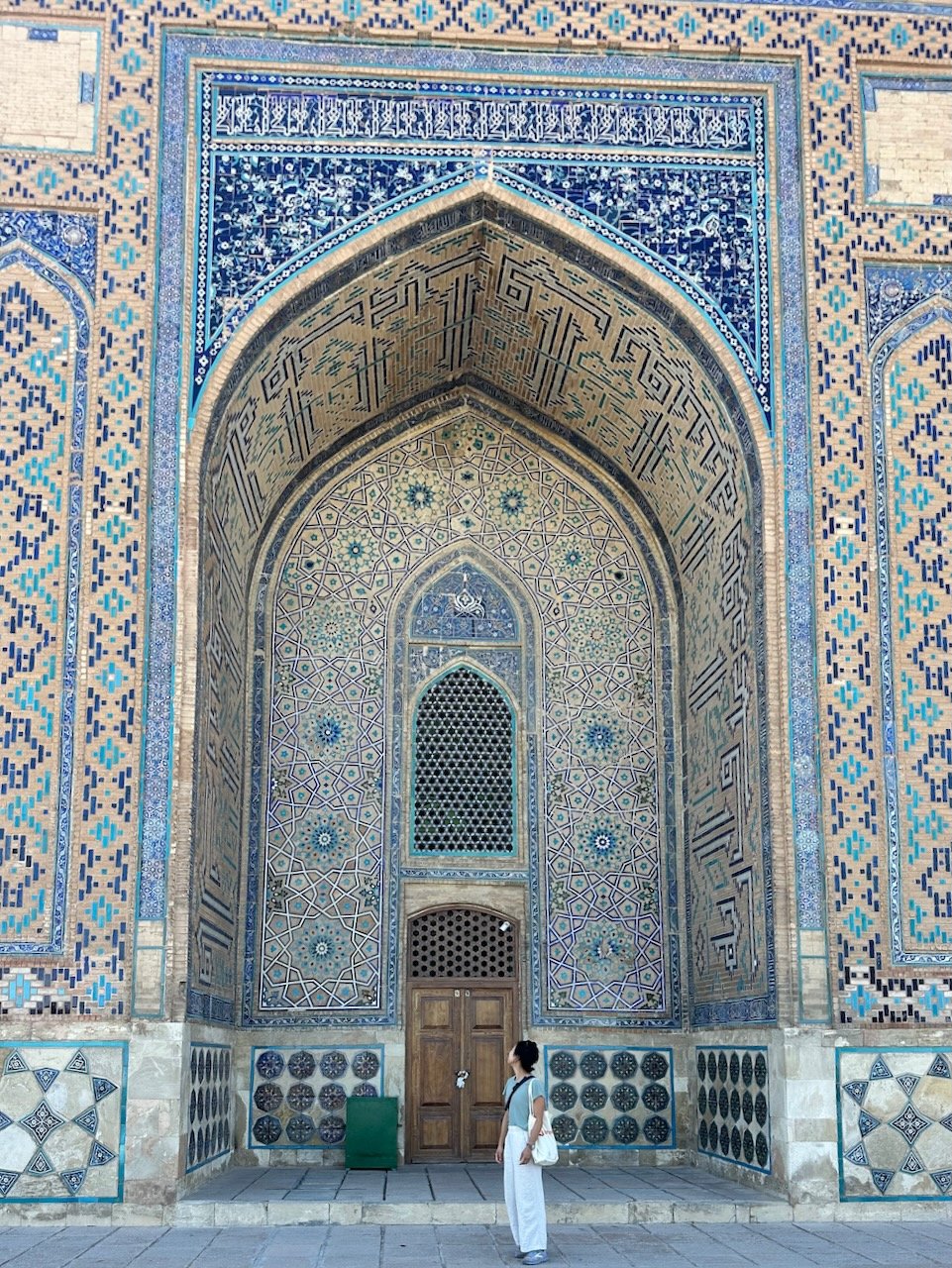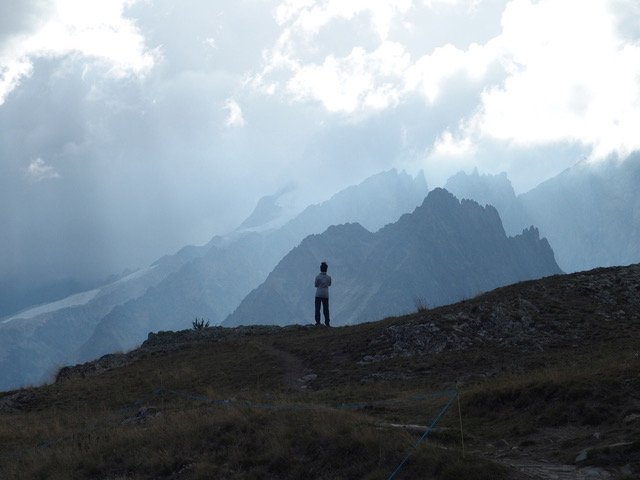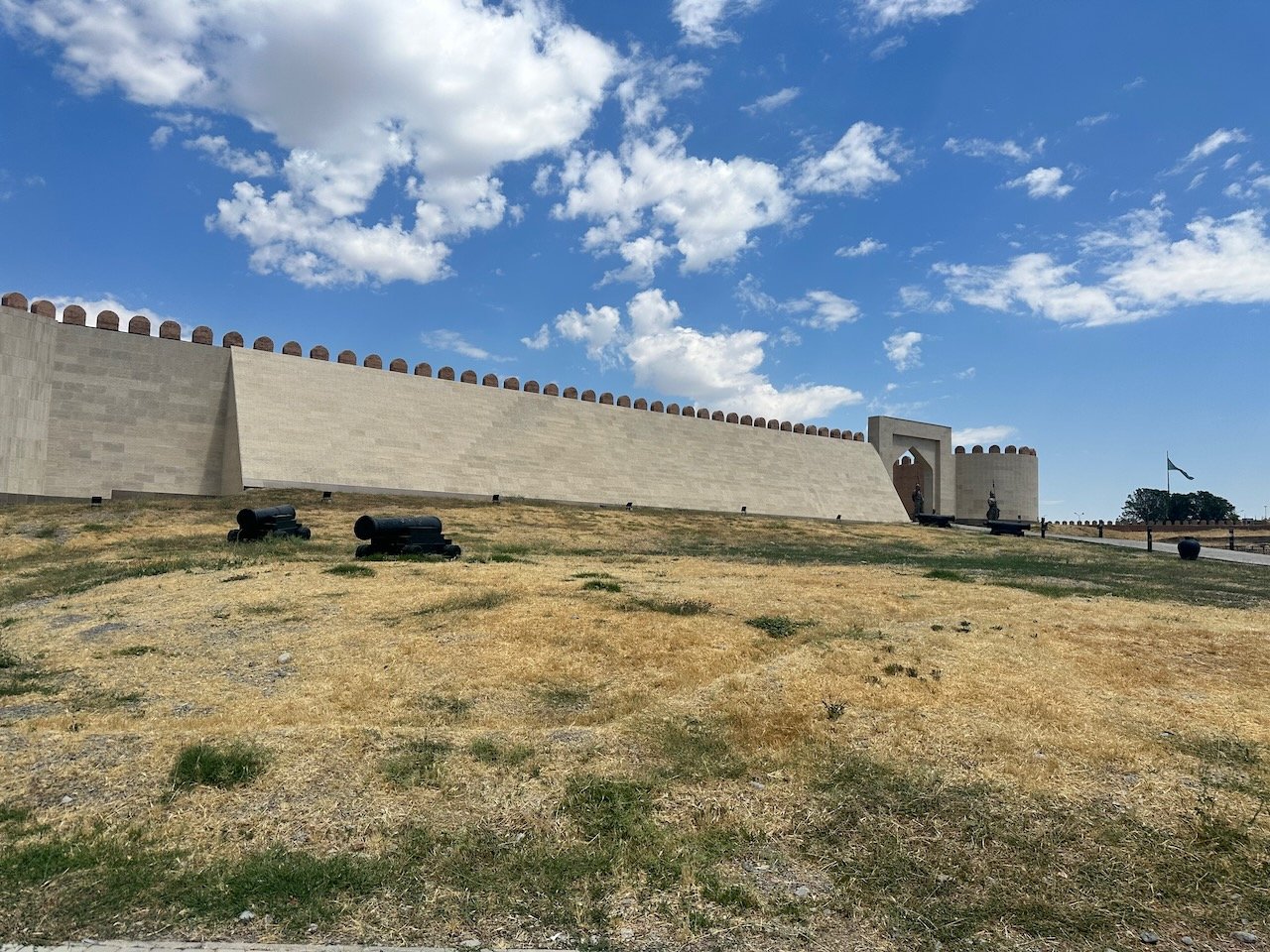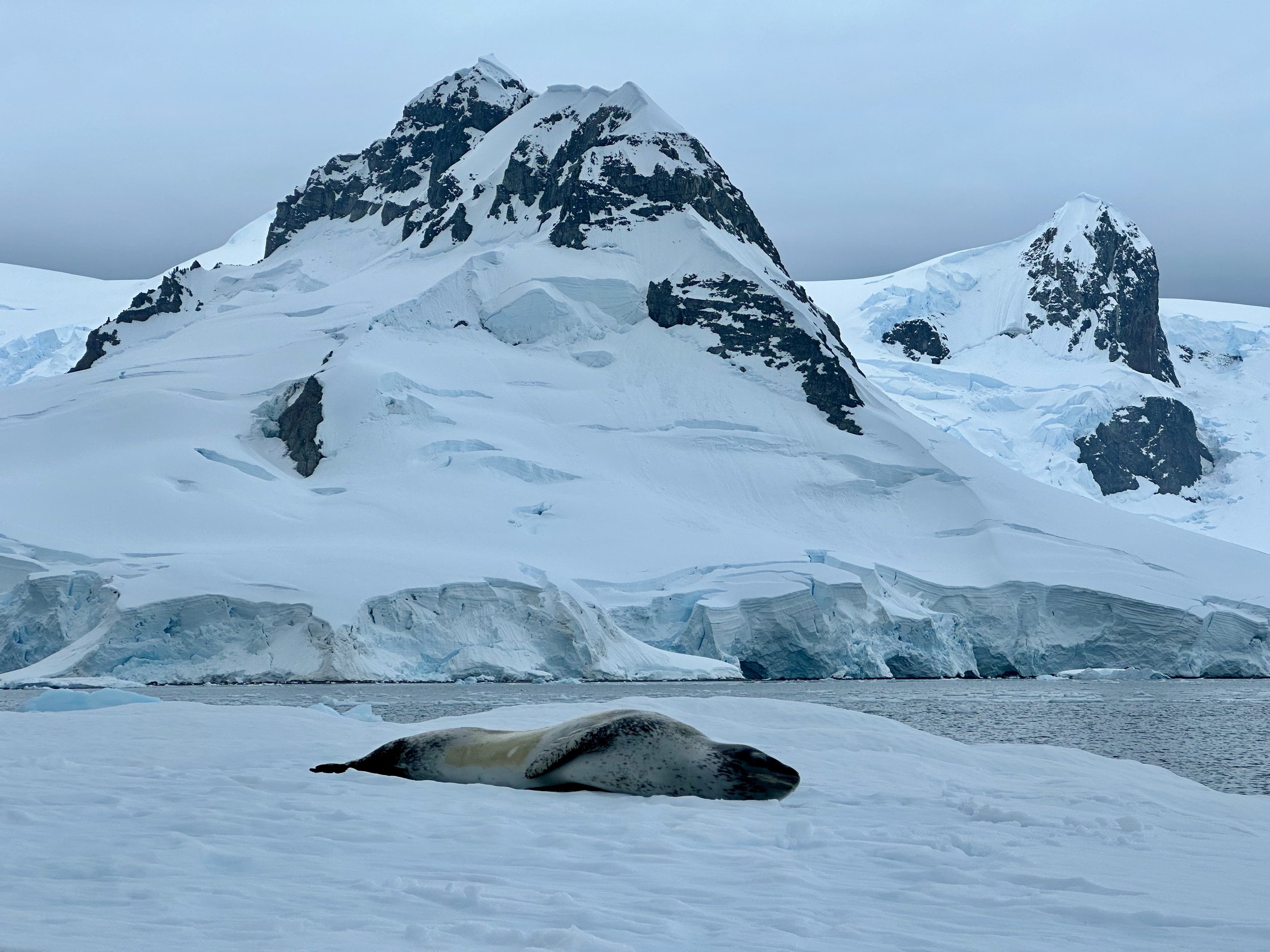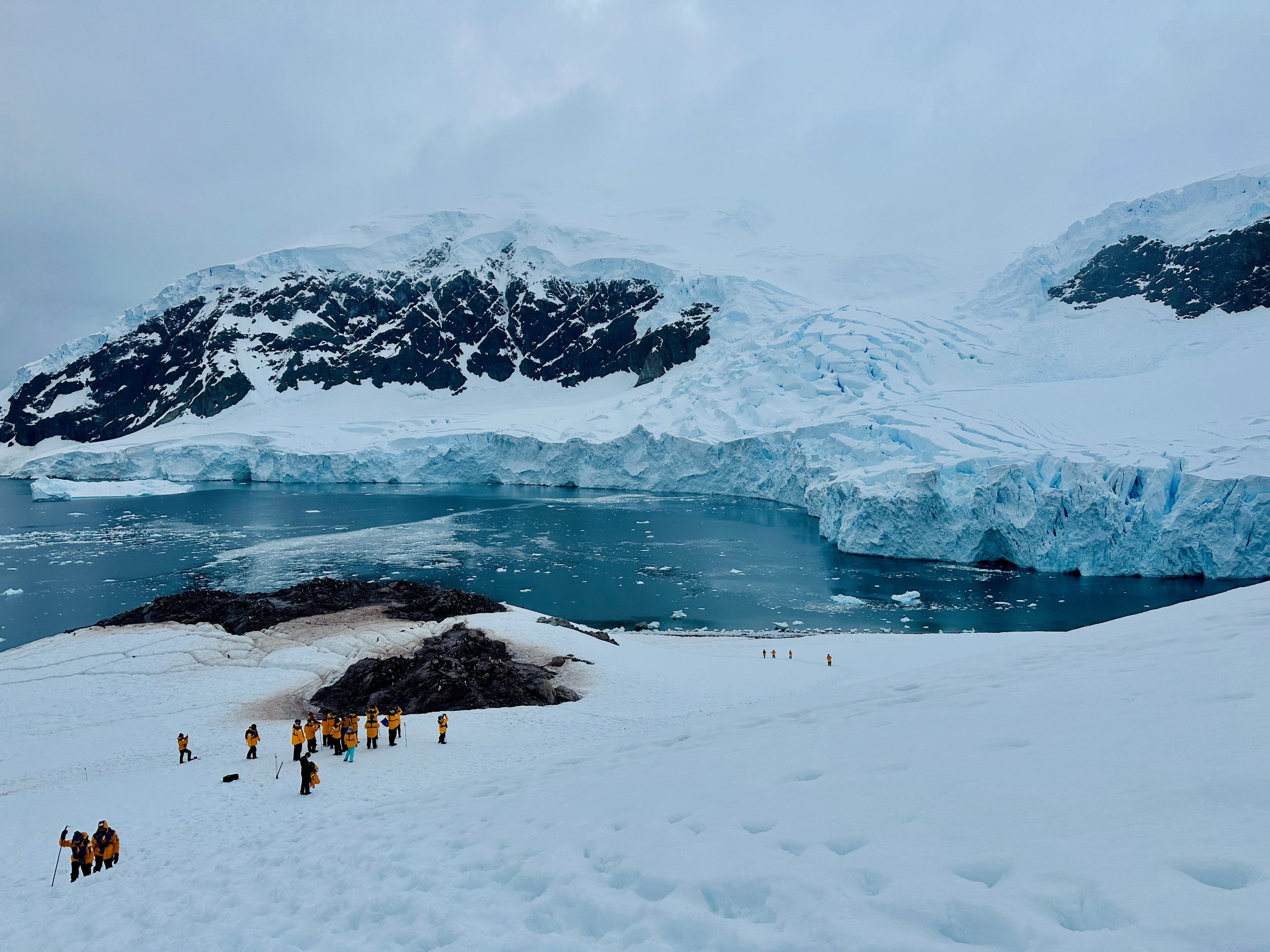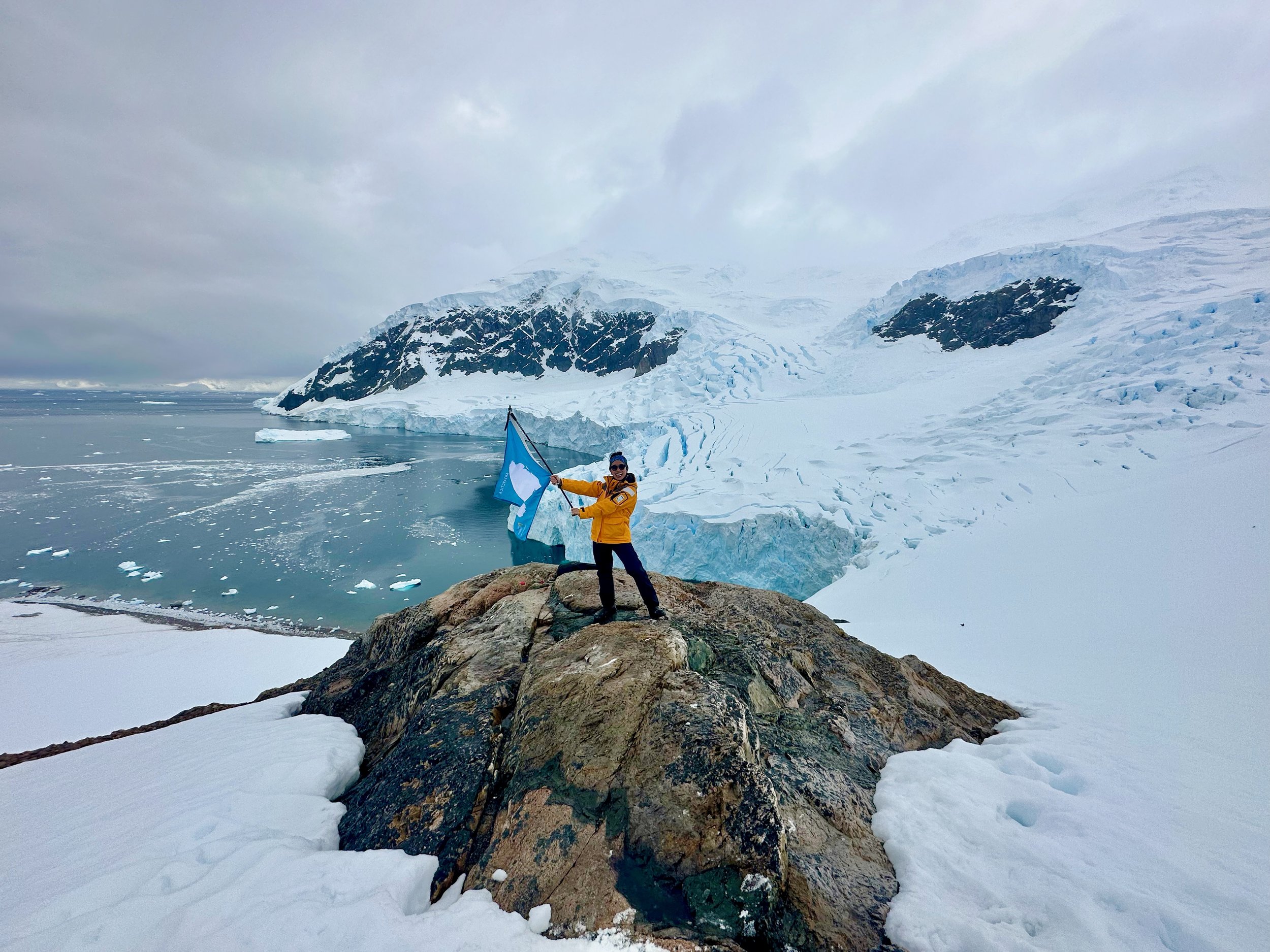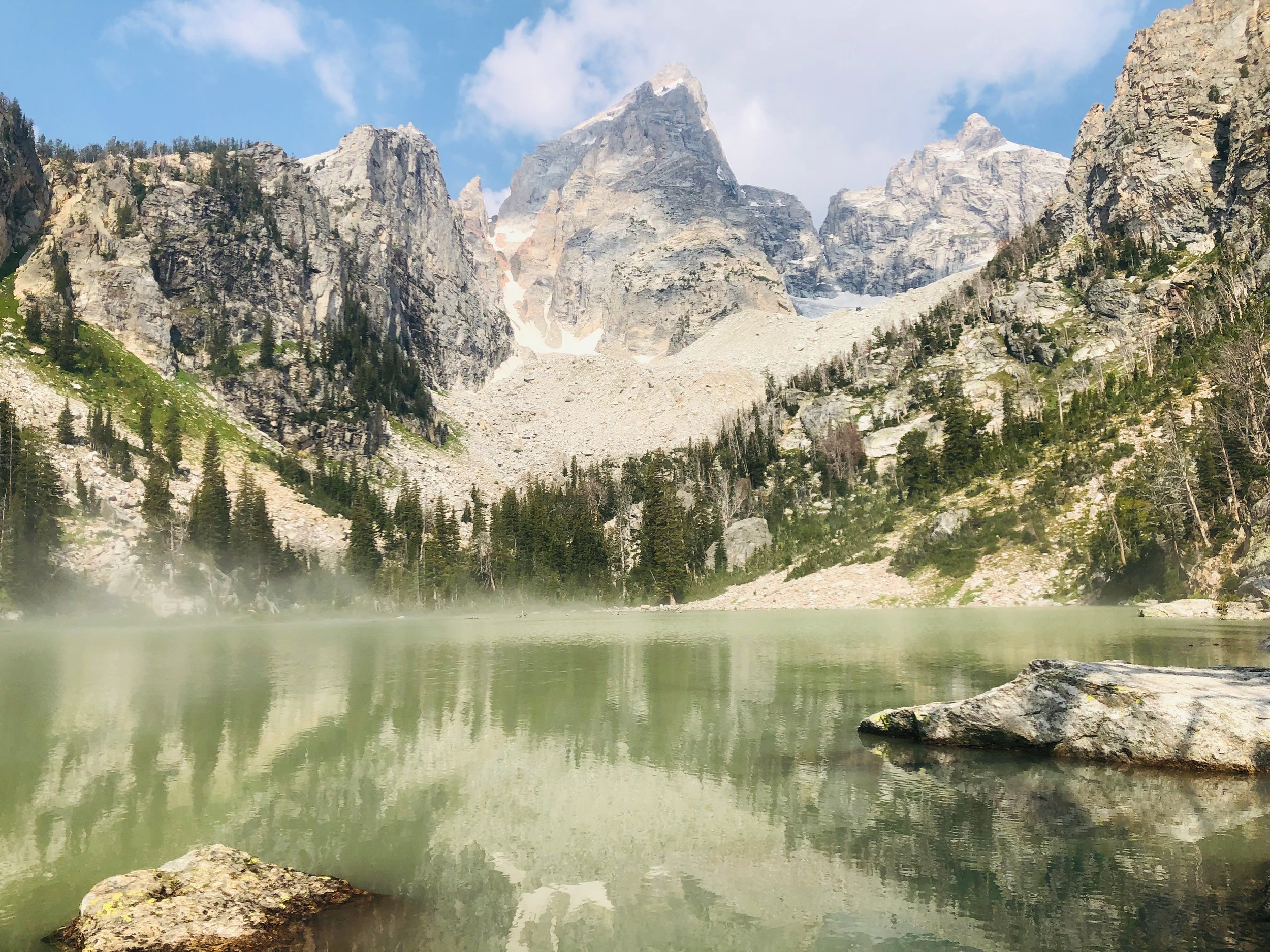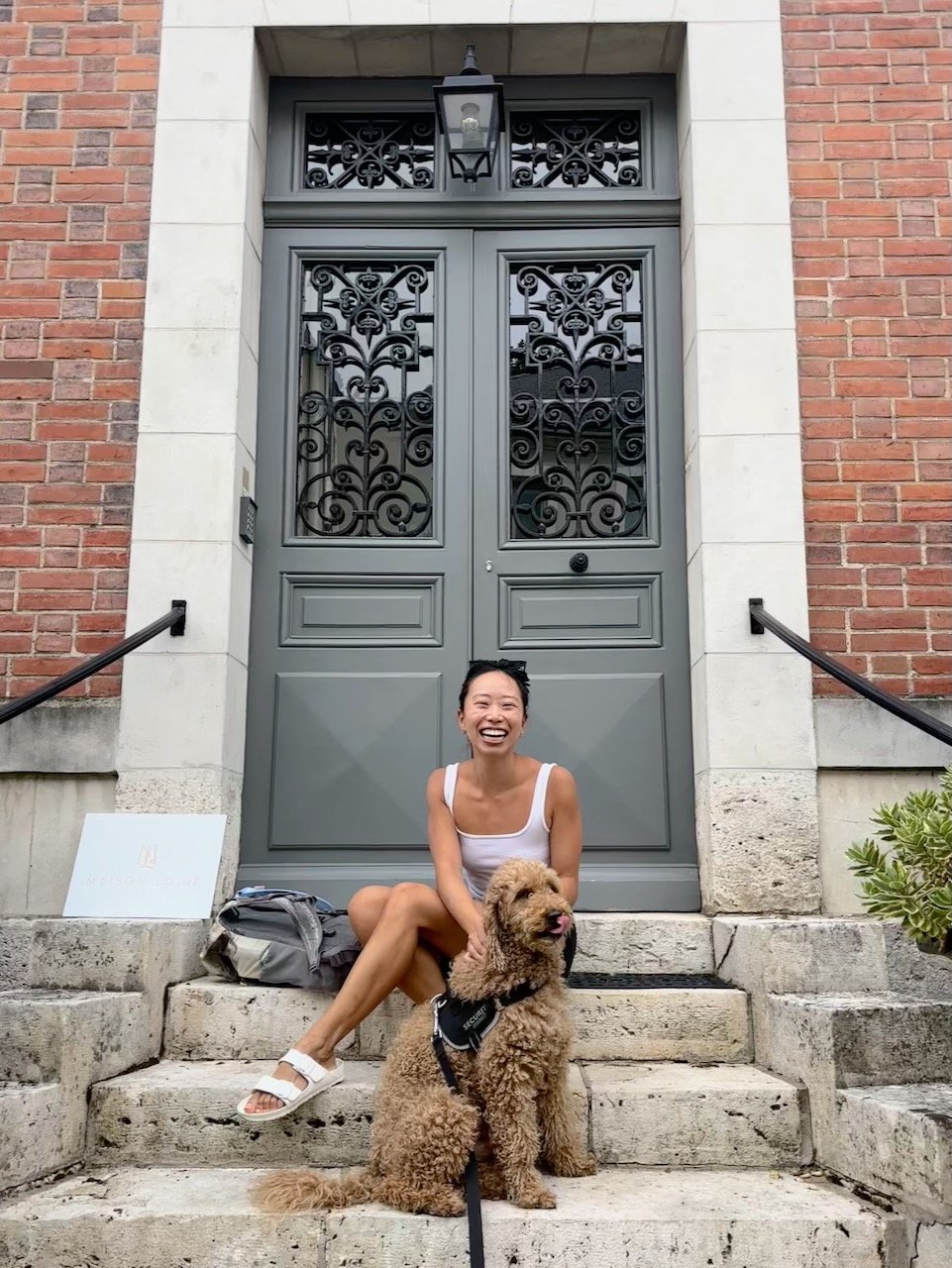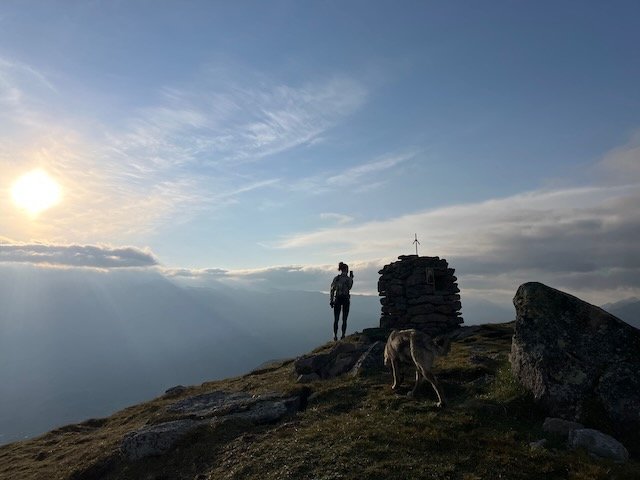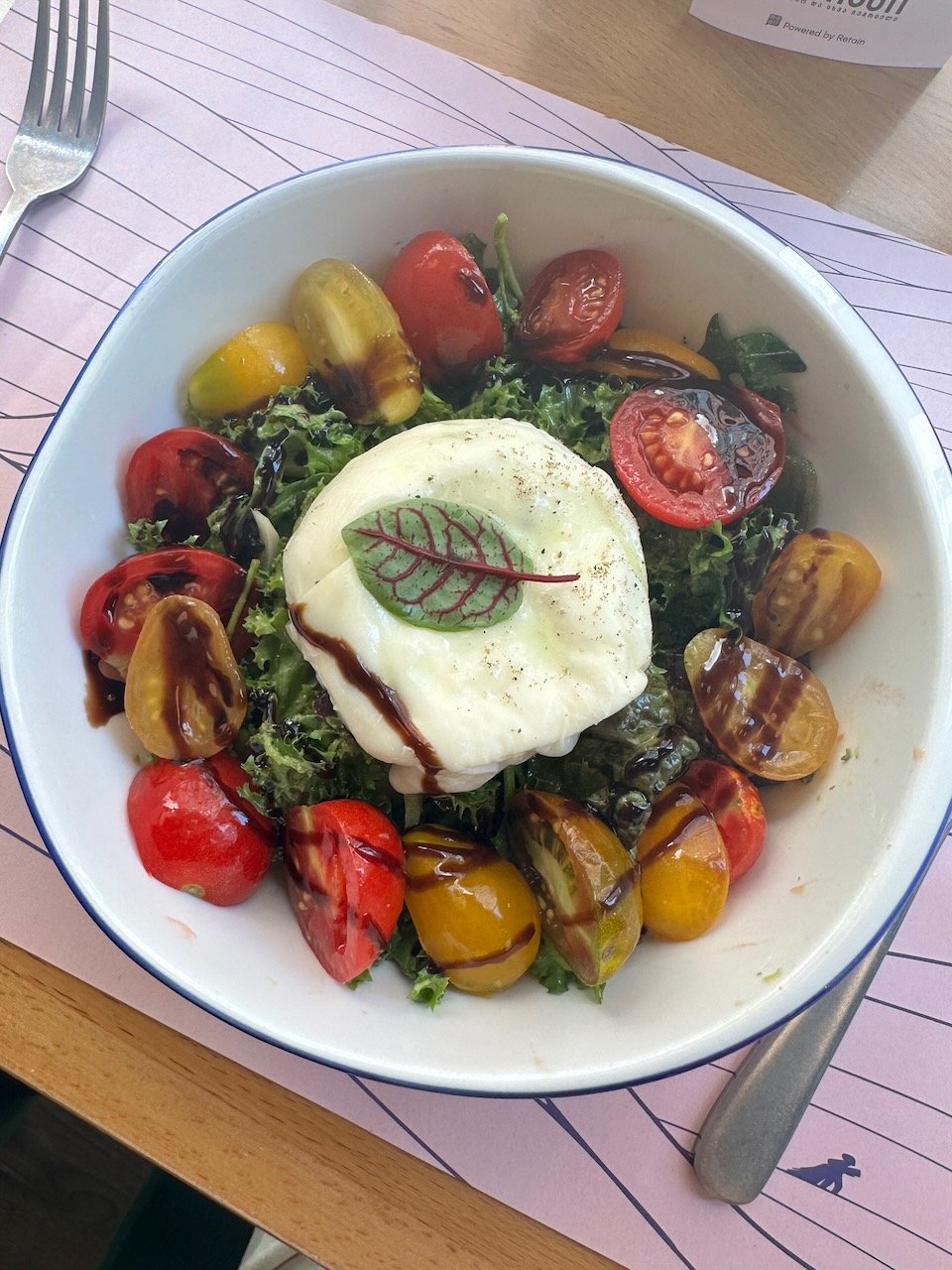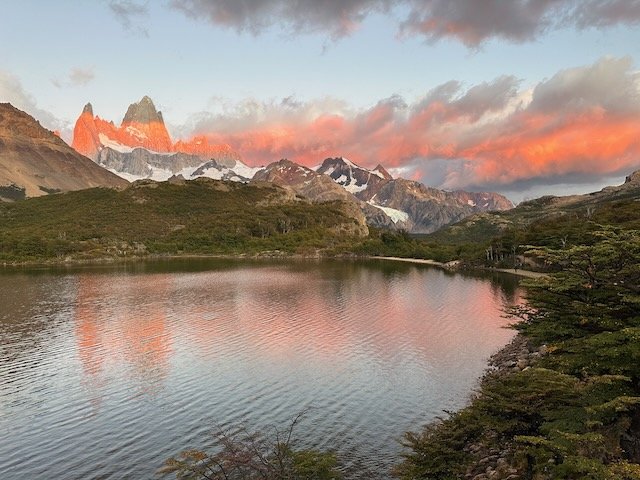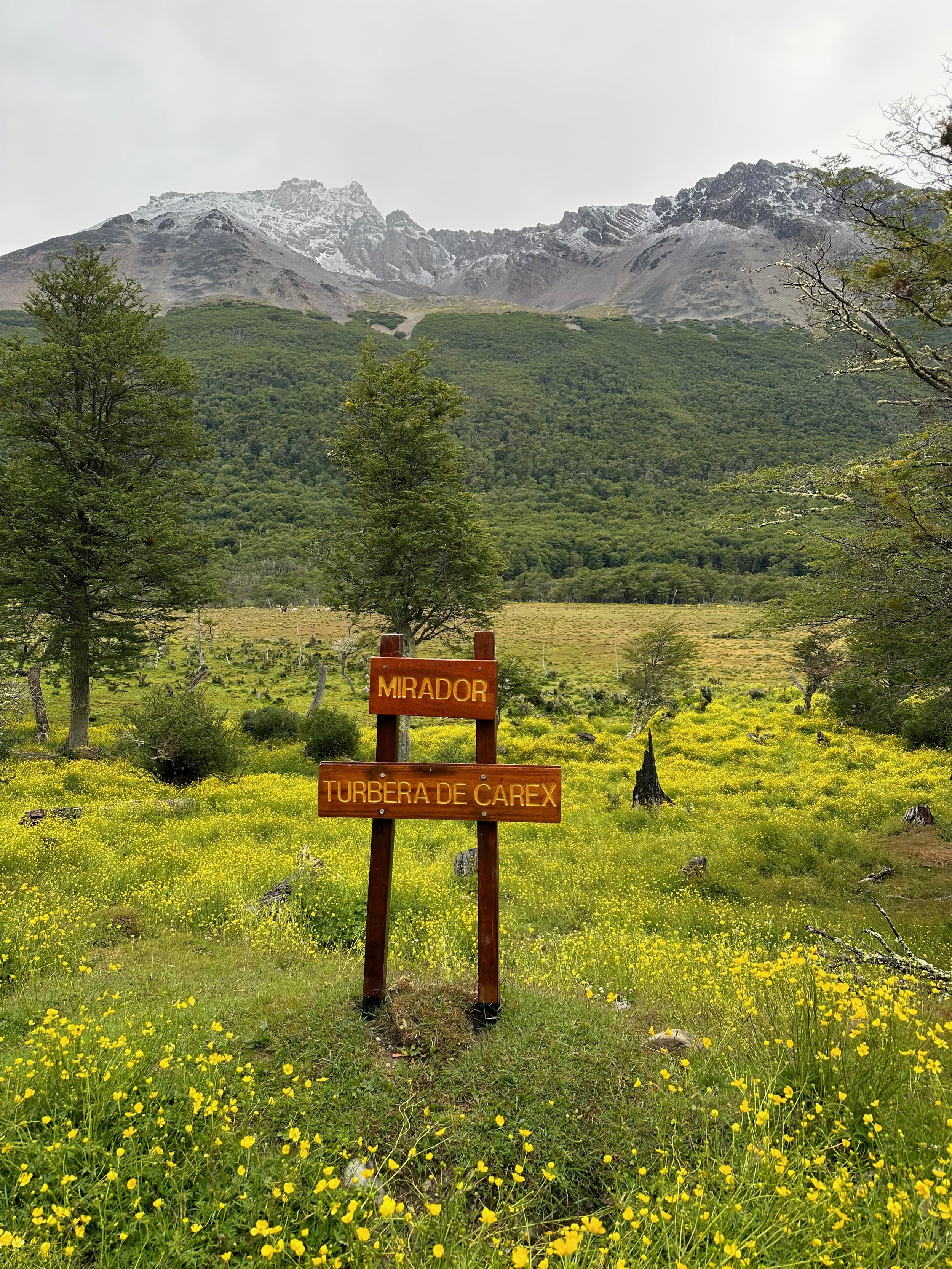A brief stop on US soil
Long story short, while I was traveling in Africa I realized that I needed to renew my passport. At that time internet access was limited, so I asked for my mom’s assistance in researching which US embassies would be the most convenient to renewing my passport. A huge shoutout to her for her tireless research and support (although I have a feeling she also enjoyed doing something unrelated to work 😂).
After reviewing and narrowing down options, I chose to renew my passport at the US embassy in Tashkent, Uzbekistan. It wouldn’t be too inconvenient with my travel plans but most importantly, I’d have the option to pick up my new passport at the embassy in person. According to the embassy’s website, mail in Uzbekistan is unreliable so they don’t trust mailing your new passport to you. Fine by me! Additionally while the embassy processed my new passport, they’d let me keep my current one so that I could travel internationally - bonus points! The embassy also had a surprisingly high rating on Google Maps (4.3 with over 200 reviews - rare for a government operations?). This was validated by my email communication with them - the American Citizen Services, the embassy department managing passports, was very responsive and incredibly helpful.
The day before my embassy appointment, I practiced traveling from my hostel to the embassy which took a little over an hour by metro. Why would I do this? Well because the US embassy doesn’t allow for any electronics, and that includes phones, laptops, USBs - you name it. My appointment confirmation even said that if I showed up to the embassy with any electronic devices, I’d be turned away and asked to make a new appointment, and I definitely did not want that!
My very handy map, including embassy information just in case I needed to approach a stranger for help.
It was such an interesting - and new! - experience navigating the city without my phone. I had a SIM card while traveling in Kazakhstan and Kyrgyzstan so it was pretty easy to quickly open Google Maps and figure out my route. Or when traveling in countries where I didn’t have a data plan, I’d reference my offline Google Maps (highly recommended travel tip!) to make my way around a foreign city.
I wrote down instructions of which metro to take, how many stops to stay on, and how to change metro lines. I drew a map of how to walk from the metro station to the embassy (a 30 min walk) and identified what viewpoints would be nearby to use as markers during my mark. With the help of Google Maps street view, I was able to see what the viewpoints would look like so it would be easy to identify my location and direction once I was there.
I was a bit familiar with the route given I had practiced the day before and had been going on morning runs to familiarize myself with the city, so on the day of my appointment I semi-confidently embarked on my phone-less adventure.
However, I didn’t realize all the ways I rely on my phone and realized this by noticing that I kept on unconsciously reaching for it. I wanted to check the number of steps I ran that morning, write down a passing thought so I wouldn’t forget it, check and confirm I was walking in the right direction. It was an opportunity for me to practice being truly present. And it was hard at first, but I began to be more and more aware of my surroundings, observing more things and being more aware of what was going on around me. I felt like I could truly be here. I didn’t realize how much my phone ends up being a distraction rather than a tool, especially when I spent the rest of the day without my phone wandering around the city and visiting a museum. It was eye-opening for me - I had prided myself on being the type of person who could be away from her phone and not bothered, but traveling in foreign places has made me more reliant on my phone than I’d like and it’s become a distraction for when I’m bored or lonely. I came away from this experience grateful for this experience and not as annoyed at the embassy for forbidding me my phone.
I’m trying to think of how to describe the experience of walking onto the grounds of the US embassy (the first US embassy I’ve ever been to) as it became a bit of an emotional experience, which was entirely unexpected! It was a moment I wanted to capture and share in this journal.
In a way, arriving at the US embassy felt like coming home. I felt emotional knowing that I was technically on US soil and that this was as close as I’d get to US for a while. The embassy also felt familiar in some ways: the security guards were dressed in military outfits similar to what you’d see on security personnel back home rather than the uniforms of the local Uzbek police; the layout of the embassy reminded me of something I’d see in D.C.; and American flags were subtly on display everywhere within the embassy.
I also felt a sense of relief. It’s sounds strange but the moment I stepped foot on embassy grounds, I felt secure - I was a US citizen on US soil protected by the US embassy. I felt like I didn’t need to be on constant alert here and could finally relax my guard. Whenever I travel, a part of my mind is always on alert and dedicated to scanning my surroundings and assessing whether or not I’m safe. It’s not to say that I’m in unsafe environments (I’ve felt pretty safe while traveling in Central Asia), but I didn’t realize how much of my brain has been dedicated to keeping me safe, so it felt so nice to feel like I could just relax and let go. Granted I’m aware that I do have certain levels of privilege in being able to feel relaxed in this environment and not everyone would have a similar reaction.
The appointment itself was easy and straightforward. I was greeted with smiles and familiar American accents while a BBC TV travel program played softly in the background. I submitted my paperwork surrounded by posters of America’s famous national parks and photos of famous Olympians before making my way back through the security gates and into the busy streets of Tashkent, feeling grateful that I’d had a brief stop on US soil.
Not Tashkent.
A photo from D.C. (you can see the Washington Monument in the distance) that came to mind that seemed fitting for this post.
First impressions from Tashkent: a bakery lover’s paradise!
I spent about a week in Tashkent, Uzbekistan and the main focus was chilling, which was much needed after spending most of the previous four weeks constantly on-the-go and, most recently, experiencing a bout of food poisoning that put me out of commission for several days.
There are not many photos from my time in Tashkent except of beautiful crafted pastries and baked goods. But, I’ll be back in September!
My first impression of Tashkent is that it is a bakery lover’s paradise! There are many Western-style bakeries and patisseries here in Tashkent and if you know me well, you’ll know that this makes me very happy. It had been a month of being dessert-free due to a combination of not having access and or cravings, but it just so happened that I was experiencing anovulation* and had a strong craving for sweets while in Tashkent. Lucky for me, there’s a plethora of bakeries here, so I happily spent my time exploring while catching up on this blog.
* anovulation = all the hormones and symptoms of a period but without the actual bleeding - yay! Shame that they don’t teach this in health education classes or at the doctors and that it takes Google to figure this out, but that’s a whole other conversation.
Anyways other than being delighted by all the bakeries, here’s a lightning round of first impressions from Tashkent with photos of baked goods sprinkled in.
An example of the beautiful architecture in Tashkent. The city contains a mix of neoclassical architecture (what comes to mind when you think of Paris, although I’m aware it’s not exactly the same thing) and Soviet brutalist architecture (the very minimalist, cubist, and sometimes ugly massive, monolithic buildings).
It’s hard to count and manage cash here! 1 USD = ~12,000 Uzbek som. So you can imagine that even having 20 USD means a whole wad of cash - thats almost 250,000 Uzbek som. Banknotes range from 1000 som to 100,000 som and it is very easy to mix up that 10,000 and 100,000 som. I always have to do a second glance to make sure I’m giving out the right amount of cash - all those zeros!
Tashkent is the most Westernized city I’ve visited in Central Asia, even more so than Almaty. It has a strong European feel, which I think this is due to how the city is laid out. Tashkent reminds of Paris in some ways thanks to the large roundabouts that circle museums and monuments designed in a neoclassical style. Part of it is also due to the number of cafes that dot the sidewalks with their outdoor seating spaces. Of course this could also be entirely due to the fact that my hostel was in one of the wealthier neighborhoods in Tashkent.
There seems to be a prominent East Asian presence in Tashkent which is quite exciting! This means being able to find seaweed sheets and familiar ingredients at small Korean and Chinese mom-and-pop shops. This also means lots of K-beauty stores aka my happy place. It’s been fun browsing through brands I’ve read about but were hard to access back in the US. What I love is that many of the most effective K-beauty brands are quite affordable and better priced than the brands back home.
Horse meat isn’t as prevalent here as compared to Kazakhstan and Kyrgyzstan. I haven’t really seen it on the menus or in grocery stores here in Tashkent, although that could be due to being in the most Western city in Uzbekistan (though to be fair, Kazakhstan’s Almaty did have horse meat featured on most menus). I wonder if this is because Kazakhstan and Kyrgyzstan’s nomadic history have a stronger influence on the cuisine than in Uzbekistan.
Excited at how easy it was to find seaweed and soy sauce at the Korean grocery store. I also came across several Chinese grocery shops that featured uniquely Chinese snacks and ingredients, such as beef noodle soup paste and Chinese noodles. Of course, 老幹媽 was also present!
At Breadly Cafe, moments before I got to hold one of the cutest babies ever
Uzbekistan seems to be a wealthier country and have a better infrastructure than Kazakhstan and Kyrgyzstan. The moment my bus crossed the border from Kyrgyzstan to Uzbekistan, I experienced a smoother ride and cleaner, wider roads.
I’ve encountered more expats in Tashkent than in Almaty, and there’s a nice familiarity in meeting fellow Americans and hearing about their lives living in Tashkent. A fond memory is meeting some American expats at a cafe. I got to hold and embrace a baby (grateful and honored that Clarissa trusted a complete stranger with her one-year old son!) and talk to him in Chinese (his grandparents are from Taiwan) which was honestly maybe the highlight of that week. I miss seeing, hugging, and playing with my friends and family’s little ones.
Rating: 4/5. Great flakiness but too much filling
An imitation of NYC Lafayette Bakery’s internet-famous Supreme Croissant. These have been popping up a lot all over the world and appropriately labeled “NYC Croissant” I’m guessing to avoid any trademark infringement
Rating: 2/5. Disappointing as their other cakes were quite good.
A tiny hazelnut-filled chocolate tart from Cake Lab.
Rating: 5/5. SCRUMPTIOUS
Cheesecake from Breadly. Love that the crust isn’t just on the bottom, but also on the side.
I’ll be back in Tashkent in mid-September to spend a bit more time in Uzbekistan and exploring famous Samarkand and Bukhara. The latest updates are:
I’m headed to Georgia (the country, not the US state) from mid-August to mid-September! Georgia wasn’t originally in the plan but I’ve been feeling a tug towards Georgia for the past several weeks, a feeling in my gut that’s directing me there, so I ended up booking tickets to spend a month there
I’m getting a new passport! My primary reason for spending time in Tashkent before flying to Georgia was to renew my passport. I wrote about my experience here.
I’ve booked my tickets for Nepal! I’ll be spending some time hiking there later this year, so I’m grateful that I’ll be breaking up the periods of hiking with some time in Georgia (hello wine!).
A different type of bakery without the sweets.
This type of traditional bread is famous all throughout Central Asia, and while not a dessert, it’s still quite good.
A story about kindness and 48 hours in Bishkek
Before I share some postcards from Bishkek, let me tell you a story about the journey to get there and the kindness of the locals I met along the way.
I ended my three weeks in Kazakhstan in Shymkent before making my way over to Bishkek, the capital of Kyrgyzstan and the beginning of my month-long adventure in the “Stan” most well-known for its hiking routes and scenic mountains.
Most of my travel research is done through a mixture of travel blogs, with the occasional aid of Lonely Planet Central Asia (the latest edition is only from 2018) and word-of-mouth recommendations from fellow travelers. So when I needed to figure out how to get from Shymkent, Kazakhstan to Bishkek, Kyrgyzstan, I conducted some very thorough Google searching and reached out to my Couchsurfing hosts for advice. It seemed like the best way was to call a shared taxi to take me from Shymkent to Bishkek which didn’t seem too bad - after all, if you look at a map, the drive looks pretty straightforward, right?
The plan was for my Couchsurfing hosts to call a shared taxi that would pick me up and drive me to Bishkek. Shared taxis are a popular form of transportation in Central Asia; they take multiple people, who may or may not know each other, to the same destination. Think of it like an Uberpool, except you’re all going to the same place.
My host called the shared taxi around 8:30 in the morning…and the driver cancelled an hour later. No other drivers were making the drive to Bishkek so a shared taxi was no longer an option. The back up options were to take an overnight bus from Shymkent to Bishkek (which only ran once a week and honestly the beds in the bus looked quite unclean) or an overnight train from Shymkent to Almaty (east of Bishkek), and then a four hour bus from Almaty to Bishkek. However, that overnight train also only ran a couple of days a week, and not on the day I needed to go to Bishkek.
So I made a new game plan: I’d make my way to the Shymkent bus station, and figure out a way to get to Bishkek. After all Bishkek is the capital of Kazakhstan and one of the major cities in Central Asia - surely there would have to be some way to get there.
Turns out, it wasn’t that easy. Since there was no direct bus to Bishkek, I figured that the best thing I could do would be continuing to make my way eastward, working my way towards Bishkek little-by-little.
At the Shymkent bus station I found a marshrutka (local mini buses in the form of a Mercedes sprinter van) that would take me to Taraz, about two hours east of Shymkent and thus two hours closer to my final destination.
My eventual journey from Shymkent to Bishkek.
I had no clue how I’d get to Bishkek from Taraz and was already starting to panic. I was one of the first people to sit in the marshrutka, and they don’t leave for their destination until they are full which can sometimes take an hour! It was already noon by this point, and I had no idea what the bus situation would be like in Taraz.
In the middle of my panic, a young woman entered the marshrutka and gave me a smile before sitting next to me. Her name was Julie and she was headed to Taraz to celebrate her friend’s baby shower. Because she had studied abroad in Germany and Spain during a university international exchange program, she spoke English fluently. We shared bits and pieces of our lives, including my mission to make it to Bishkek, and discovered that we both had a shared love for traveling.
The drive to Taraz was stuffy (A/C in a marshrutka? Pfft!) and bumpy (the road infrastructure outside of Almaty isn’t great) so I could feel my eyelids fluttering shut. I could hear the low murmurs of Julie talking with someone on the phone and let that lull me into sleep.
I naturally woke up when we were 15 minutes way from Taraz. Julie saw that I was awake and shared that she had given her parents a call to ask them how I could make my way from Taraz to Bishkek. It turns out that her family was originally from Taraz but had moved to Shymkent in order for the children to go to university there. I was stunned. This random stranger cared enough about me to call her parents and ask them for ideas on how I could get to Bishkek - what?!
Julie had learned from her parents that there was a marshrutka that could take me from Taraz to Korday, the border town between Kazakhstan and Kyrgyzstan, and from Korday it should be easy to take another marshrutka from Korday to Bishkek (see above map). As we got closer to the Taraz bus station, my hopes increased - maybe I would make it to Bishkek tonight - no, I would make it to Bishkek tonight!
When we arrived at the bus station, Julie walked with me around the bus station, asking locals and passengers if they could direct us to the marshrutka to Korday or to a bus to Bishkek, if such a bus existed. An older woman who looked like a babushka (Russian for grandmother) responded that she was headed back home to Bishkek and could make sure I made it there.
I finally had a concrete way to get to Bishkek! I turned to give Julie a hug. “Thank you,” I said, “Thank you so much for your help and for going out of your way to help me.” But I wondered, “Why? Why did you even bother in the first place?”
Julie smiled. She shared that when she studied abroad in Spain and Germany, she struggled navigating how to travel internationally but so many people had helped her along the way. Because of this, she’s always wanted to pay it forward and help other travelers in need.
We exchanged a hug. I felt so grateful for her kindness and support and hoped that I too could pay it forward, whether that be back in New York or during my travels abroad.
Julie and I at the Taraz bus station, right before we parted ways.
Obviously I ended up making it to Bishkek. After all the title of this post does include the words “48 hours in Bishkek”. So what happened after Taraz?
Long story (kind of) short (because it’s time to get you those postcards):
It was a five hour marshrutka ride from Taraz to Korday and also a ride with no AC. I can hear my dad say, “well when I was your age…”
The marshrutka dropped us off right at the border, and the babushka, Gulgana, gestured me to walk with her to the border. She guided me to the two-stop border crossing and patiently waited for me to go through the Kazakh and Kyrgyz border stations before continuing on. She asked, using a series of hand gestures, if I needed to exchange Kazakh tenge to Kyrgyz som, and proceeded to take me to some makeshift currency exchange stations. She walked up to several stations but would dismissively “pfft”, shake her head, and walk away. Not knowing Russian or Kyrgyz, I can only assume that the rates weren’t to her satisfaction - it’s amazing how much you can understand through body language and facial expressions, even when you don’t know a language.
After the border crossing, we searched for a marshrutka that would take us to Bishkek. She paid for my bus fare (another “what?!” moment of feeling shocked at her kindness) and we got off a couple of stops early at a bazaar where there were better currency exchange rates. When the cashier wouldn’t accept my Kazakh coins, Gulgana reached into her purse to do a currency exchange with her own money.
From the bazaar, Gulgana bundled me into another marshrutka that would take me to the hostel. She empathetically reminded the bus driver to signal me when it was my turn to get off the bus before giving him money for my ticket. I shook my head, motioning that I could pay for it, but she smiled and waved me off.
As my marshrutka pulled away into the road, I could only think about what an incredible day it was. A day that started with frustration turned out to be a heartwarming experience. I was blown away by the amount of kindness I received. It was a beautiful reminder that there are humans in this world who are just genuinely good and kind people, and it inspired me to be more proactive about paying it forward.
And now, here are your postcards from my 48 hours in Bishkek!
These are just a smattering of photos I took when walking around the capital. I loved the colorful gardens around the city and was fascinated by the Soviet-era architecture that made up most of the monuments. To be honest I didn’t spend that much time in Bishkek because I was eager to make my way in the mountains, but here’s a brief glimpse into Krygyzstan’s capital.
Resting and reuniting in Naryn
Remember this crew?
Kazu, Satori, and I had first met in Almaty, Kazakhstan through a two-day hiking trip organized by Steppe Spirit. We tackled a long and challenging hike in the Tian Shan mountains together and feasted over delicious pan-fried laghman noodles.
We also got to make dinner together one night “Japanese-style”, a type of meal that I love for its simplicity and playfulness. It’s always fun to eat with your hands, and we’d create several toppings (scrambled eggs, ground beef, cucumber, tuna) to top off our seaweed and rice rolls
Dinner at Kazu and Satori’s rented apartment. One of the best meals I’ve had thanks to the good company and good food.
I was feeling quite burned out after bouncing from town to town around Kyrgyzstan, even though I’d only been there for two and a half weeks. I had enjoyed my hikes and made friends with fascinating people, but I’d forgotten how mentally exhausting it can be to always be planning ahead and making sure that I have somewhere to sleep that night, researching how to get from town A to town B, having all the emergency supplies for my hikes, all while getting enough nutrition and rest each day to stay healthy.
I had just arrived to my next destination Naryn and was struggling to decide what to do. One option was to add on a multi-day hike to Kel-Suu, a spectacular alpine lake that is hard to get to and therefore quite expensive, that is often deemed one of the highlights of Kyrgyzstan. Another option was to skip Kel-Suu and make my way from Naryn (east side) to Osh (west side) in order to base myself close to the hikes in Western Kyrgyzstan.
I had just come from Kochkor to get to Naryn (more on that later). As you can see, the route back to Bishkek retraces the same road to Kochkor (compare with the map below).
Unfortunately it wasn’t quite as easy to get from Naryn to Osh, and I was feeling overwhelmed trying to decide what to do. On the map it seems quite easy to go from Naryn to Osh, and some travel blogs had verified that it was possible to get a marshrutka to take you from Naryn to Osh with potentially a single change of buses between the two cities. In reality, it was a lot more difficult and expensive than that - the journey would require a shared taxi and two marshrutkas totaling a journey of at least 12 hours on extremely bumpy road. The other method to get to Osh was to take a marshrutka back to Bishkek (north) and then fly from Bishkek to Osh (30 min flight), and this method was actually cheaper than the first! But in taking a marshrutka back to Bishkek, I’d be retracing the road I had just taken to get to Naryn*.
The bus route and more expensive way to Osh. Not pictured are the 2-3 bus changes that occur on this route, nor the unpaved bumpy road.
The option I ended up taking - bus back to Bishkek and flight to Osh. This ended up being cheaper than what it would’ve cost to take the bus all the way to Osh!
I was beating myself up for not realizing all of this sooner and vacillating on what to do. I took a quick peek at my phone to see if the screen could magically give me an answer when I received a message from Kazu out of the blue. Kazu and Satori had just arrived in Naryn and were planning on resting in town before making their way back to Bishkek. Holy smokes! The universe was providing me with a direction of connecting me with friends right when I needed it. The odds!
It turns out that we were all feeling quite similarly and grateful to be able to spend time together just relaxing without any pressure to “do something”. It was so nice to be with people who understood what it’s like to be a long-term traveller. As wonderful as it is to be able to travel the world, it can sometimes be tiring and it doesn’t always feel appropriate to publicly voice that sentiment since I know I’m privileged to be able to do this type of travel in the first place.
On the marshrutka back to Bishkek.
We ended up taking the marshrutka back to Bishkek and spent the evening cooking dinner and catching up on our recent travels. What a gift it is to have friends all over the world and to be able to completely relax in each others’ company!
Eating dinner together at Apple Hostel in Bishkek - Japanese-style obviously!
Ending the day with a sweet treat from the supermarket. Nothing more exciting than supermarket ice cream!
Some more anecdotes about transportation in Kyrgyzstan…
Flying to OshI ended up flying to Osh the next morning on a quick 30 min flight. Buying the flight ticket had been confusing - fellow travelers had said the ticket wouldn’t cost more than $30 USD but all the Google searching I’d done had only yielded tickets upwards of $100 USD - I didn’t know what I was doing wrong!
It turns out the airlines that operate the Bishkek to Osh route on a budget are local Kyrgyz airlines that are not up to EU aviation standards and therefore don’t necessarily show up on Google searches. I had to ask someone for the names of those airlines (the one I flew is TezJet) and go directly to their website to buy a ticket.
The TezJet plane was one from my early memories of flying - everything was a bit outdated and the airplane was definitely a model that is no longer used in the US! I was so tired and subsequently conked out during the entire flight, so I didn’t experience any of the shaking or turbulence that is allegedly a regular occurrence on these Kyrgyz budget airlines.
Hitchhiking to NARYN* Ah yes, so I might've hitchhiked my way to Naryn instead of taking the marshrutka (sorry Mom and Dad!)
I had just come back from a two-day hike near Kochkor and was ready to make it to my next destination Naryn, which would be the base for more hikes (which as you know, I ended up not doing).
Taxi and bus drivers in Naryn are notoriously known for inflating prices for foreigners, so I confirmed the 300 som fare with my guesthouse. However once I got to the bus station, I was told the fare was 500 som and the drivers were unwilling to bargain.
Some travelers adopt the mindset of “oh well the difference is only a couple of USD so I’ll just eat the cost” but I try to avoid that mindset for several reasons: 1) I have no income so budgeting is extra important to me, 2) the cost of living varies from country to country so while $1 USD might not get you much back home, it can sustain you longer abroad in certain countries, and 3) the principle of things.
A local young man saw that I was struggling to bargain with the drivers and stepped in to help. He also was unsuccessful in negotiating a better rate for me even though the local passengers next to me were paying the regular fare. During our conversation he shared that sometimes when the locals see tourists, they see money rather than people and try to make as much money as possible. Obviously this isn’t unique to Kyrgyzstan and happens around the world, but no one likes to be taken advantage of! He ended up offering to drive me to the outskirts of town where it’d be cheaper to flag down a car headed to Naryn. I followed him to his commercial truck, which was filled with the day’s groceries, and squeezed between him and his brother as he drove out of town.
On the way out of town we started chatting in English. My new friend was eager to practice his English as he dreamed of opening his own travel agency in the future. His brother sat silently next to me as he didn’t know English, but he was friendly and made sure that I was comfortable and not squished by the produce.
Once we reached the point where the local road merged with the main road to Naryn, we exited the truck and stood on the side of the road, ready to flag down passing vehicles and ask for a ride.
I didn’t have to wait long! The first vehicle that passed was a long-distance freight truck empty of its cargo that was headed through Naryn. The truck driver said that he’d be passing through Naryn and was willing to take me for free. So, I jumped into the truck cab (very difficult - did not realize how high off the ground these are!) and said goodbye to my new friend, ready for the next adventure.
Traveling in the truck was a fascinating experience. The truck driver and I didn’t talk during the two hour ride other than me offering him some of my snacks, which he politely declined, but I think we were both content to sit in peaceful silence. It probably also was due to the fact that we couldn’t speak each other’s language).
I spent part of the ride dozing off (long drives + strong sun + high suspension = sleepy time) but had some observations along the way:
As I mentioned before, truck cabs are very very high off the ground. To even reach the first step to the cab was a stretch! I needed the truck driver’s assistance to get my backpack into the cab. Add in the high suspension and you are gently bouncing along the road - it’s almost like an amusement park ride.
It was fascinating to see the interior of the cab because it’s the driver’s living quarters while he’s on the road. There’s an entire bed behind the seats (see above photo) and some storage space above the bed as well.
It was also fascinating to get a glimpse of what life is like for a truck driver. I remember watching a documentary about a female long-distance trucker and her life on the road, and bits and pieces of that came back to me as I watched my truck driver navigate the roads. He would radio other truckers to let them know when it would be safe for them to pass another vehicle on the road, if they should slow down due to a hidden police car around the bend, or to watch out for the cow plodding its way across the road. At least I think that’s what he was saying - I’m basing this off of the visual and audio cues I put together since I don’t speak Kyrgyz. I’d like to imagine that the trucker community is friendly and kind if they are radioing each other about driving conditions and looking out for each other’s safety
Once we got to Naryn, the driver pulled into the town’s outskirts and helped me bring my bags down (high cab - remember?). He was so kind and I’m incredibly grateful for his generosity. I then made my way to my guesthouse and funnily enough was waved down by a woman whom I had met in Almaty, Kazakhstan! She ran across the street to say hi before I continued my walk to my guesthouse.
I had always wanted to try hitchhiking because it seems like something a “real” backpacker would do (yes, I know that there is no such thing as being a “real” or “fake” backpacker). I’d never attempted it previously because well, safety concerns, especially being a solo female traveler and stranger danger. I’ve met plenty of solo female travelers who have had no issues, but I’ve also heard horror stories and tend to be more risk averse. I don’t know if I’ll hitchhike by myself again, but I’m glad I tried and had a good experience with it. It was a nice reminder that there are good and kind people out there.
The view from the truck cab. There was a lot of beautiful scenery along the drive, and it was cool being able to see it while situated so high off the ground.
Feeling at home in Yrdyk, Kyrgyzstan
Historically food has been the primary way for me to explore a new destination and experience local culture while traveling. What’s been interesting about this trip so far is that I haven’t really explored the local food scene as much as I would normally - normal being a “typical vacation”. A large part of this is because I’m planning on traveling for a while (…potentially for the foreseeable future - sorry Mom and Dad!) and as a result it’s more economical to cook*, or more accurately assemble foods, especially when embarking on multi-day treks or taking long bus rides from point to point.
*Cooking is a bit of a stretch word to use when I’ve been eating salads (so much delicious fresh produce) or packing sandwiches and hearty snacks for long treks
Here is an example of a typical salad I’ll have for lunch or dinner. The local favorite is tomato and cucumber, but I’ll usually add corn and/or peaches. I love that produce here is fresh, cheap, and (I think) organic.
When I found out that there was an opportunity to join a traditional dinner in a village near Karakol, a popular hiking destination in Eastern Kyrgyzstan where I was based, I jumped at the opportunity. I had just finished a three-day trek to Alakol Lake and welcomed the idea of sitting down to a meal with a local Dungan family, especially after I found out that the Dungan people are ethnically Chinese Muslims who migrated to Kyrgyzstan 164 years ago. After being away from home for three months, this seemed like an opportunity to get a taste of home.
We drove to the Dungan village of Yrdyk, which was established in 1877 by the early immigrants from China, known as 回族 in Chinese. There we visited the local museum where the elderly docent shared information about the history and legend of the Dungan people and showed us important artifacts from this village. Upon walking into the museum, I felt a rush of emotion at seeing a banner with traditional Chinese characters hanging from the wall, Chinese art, and large bamboo steamers. It was heartwarming to see and be surrounded by familiar objects in a place so far from home. This feeling would only grow as the docent continued to speak about Dungan culture and customs. It turns out that they speak an old dialect of Chinese that sounds most similar to Cantonese - more on that in a bit when we get to the main course! They also use bamboo steamers to create 包子 filled with meat and vegetables, have similar styles of embroidery and art, and viewed foot binding on women as a sign of beauty.
We also learned about the legend of the Dungan people, and the docent was quick to remind us that what he was about to tell us was legend, not fact. Here’s a quick summary about the legend of how the Dungan people came to be:
The Emperor of China (not sure which one) dreamed of being attacked by a monster but was then saved by some man. When the Emperor shared this dream with his advisors and described the man who saved him from the monster, his advisors identified the man as the Prophet Mohammad.
As a result, the Emperor invited Mohammad to visit China. Mohammad wasn’t able to come so he sent three of his students in his steed, and these students traveled from Saudi Arabia to China accompanied by a large army. The journey was long and hard so only one student ended up making it alive to China.
After residing in China for three years, the Arab army yearned to go back home. However the Emperor wanted the army to stay to help protect his borders (the Great Wall) against the Mongols. Being the smart man he was, he asked his wife for advice on how to keep the army in China. She said that the best way to keep them here would be to have them marry local Chinese women so that the army men could create their own families in China.
The Emperor hosted a banquet for the Arab army and invited the most beautiful Chinese women for the men to choose as wives and start new families. So, the legend of the Dungan people was born - Dungans come from Arabian fathers and Chinese mothers; their religion is inherited from their fathers, their culture from their mothers.
After visiting the museum we took a very quick drive around the corner to the home of the family hosting us for dinner. They live in the first building that was erected when the Dungan Village was founded back in 1877. We were greeted with a beautiful table setting that was already filled with food and fruit. I had heard that we’d be eating a many dishes, and I couldn’t wait!
Okay enough about ashlan-fu - back to the Dungan family dinner!
We had several dishes to share and each one reminded me a little bit of home. Because the Dungan originated from China, they used a lot of similar flavor profiles as Chinese cooking. Almost all of the dishes evoked a sense of my parents’ home-cooked food and made me nostalgic for their cooking.
After dinner we were introduced to Dungan wedding traditions, and the host brought out a set of wedding clothes for the group to try on.
We ended the night with full bellies and lots of laugher, and it was a lovely way to end my time in Karakol.
I’m grateful to a chance meeting with a woman on the street - I noticed she was a foreigner and we got to talking, and she is the one who recommended I check out this activity sponsored by Destination Karakol, the local community-based tourism organization.
Hiking three peaks in the Tian Shan Mountains
One of my favorite hikes in Kazakhstan was a hike that covered three peaks - Furmanov Peak, Panorama Peak, and Shymbulak Peak, all around 3000m in height. I had the opportunity to hike this in early July with two friends I had made during my Steppe Spirit trip, Kazu and Satori, who are traveling from Japan. We had bonded during the Steppe Spirit trip and wanted to end our time in Almaty with one last hike in the beautiful Tian Shan mountains. I hope you enjoy the photos!
Postcards from Turkestan
I’ll let the photos do the talking for a bit because the architecture is pure art.
These photos are of the mausoleum of Khoja Ahmed Yasawi, which is the main attraction of Turkestan, a town ~2hrs northwest of Shymkent. It is a UNESCO World Heritage Site because of its authentic and outstanding example of Islamic religious architecture. I loved the shades of blue and the intricacy of the tile work - it was beautiful in the morning sunlight.
A quick overview:
Khoja Ahmed Yasawi was a distinguished Sufi leader during the 12th century. Sufism is a mystic religious practice of Islam. He had a significant influence in spreading Islam in Central Asia and consequently is regarded as a spiritual teacher. He isalso well-regarded as a poet. When he was 63 he dug himself an underground cellar to live out the rest of his life.
The mausoleum was built by Amir Timur, a ruthless conquerer of Central Asia during the 13th century, after he had a prophetic dream where Yasawi predicted a successful military campaign. As a result, Timur visited the grave of Yasawi and ordered the construction of the mausoleum.
A bit more on Timur, also known as Tamerlane. He was a Turkic conquerer who founded the Timurid empire in the 14th century. He was a powerful ruler descended from a Mongol tribe and who saw himself as Genghis Khan’s heir (Genghis Khan lived during the 13th century). Depending where you go, you’ll hear different versions of who he was. In Central Asia he is seen as a great warlord and leader, but outside of that region he can be viewed as a mass murderer who was ruthless in his campaign to create an empire.
Here are some more photos from my day trip to Turkestan, although I didn’t see much given that it was so hot. Turkestan is one of the more recognized tourist destinations in Kazakhstan because of the mausoleum and has been named the spiritual capital of the Turkic world, also because of the mausoleum. You can click on each photo for more info.
What is identity?
Musings from Central Asia
identity | iden•ti•ty
noun
Merriam-Webster
1a. the distinguishing character or personality of an individual : INDIVIDUALITY
1b. the relation established by psychological identification
Oxford Dictionary
1a. the fact of being who or what a person or thing is
1b. the characteristics determining who or what a person or thing is.
Musings from Central Asia
Everyone I meet, from locals to other travelers, has been asking me why I decided to visit Central Asia. Depending on my gut reaction to the person and whether or not I feel they can be trusted with my truth, my answer changes. Sometimes it’s about the history of the Silk Road and the legacy behind it (I feel like that’s “supposed” to be the “right” answer because of all the rich history here) and other times it’s because of the beautiful landscapes and hiking opportunities. Both are parts and pieces of the truth, but the real reason why I came to Central Asia is a bit deeper than that.
I’m a first generation American whose parents immigrated from Taiwan and whose grandparents are from China. I grew up feeling very much “other” - not American enough because I don’t look “American” (aka white) and not Chinese or Asian enough because I don’t speak my native language fluently. I never felt like I truly belonged to either community, and there are countless stories and memories where this starkly stands out. The one that breaks my heart is a self portrait I drew when I was a child, maybe sometime around 1st grade. The drawing hangs on the second floor of my childhood home and is framed with a beautiful golden bronze frame, likely because it won a prize at my Chinese school’s annual drawing competition. The drawing depicts me celebrating Chinese New Year, as I believe that was the prompt of the drawing contest, and illustrates all the many traditions of Chinese New Year - red envelopes, dragon dance, and of course the many foods consumed. But what is the most heartbreaking is the girl who is centered in the middle of the drawing. She’s wearing a qipao and has a big smile on her face as she dances across the page, but she’s a white child, blonde with blue eyes. It’s ironic that this girl is what won third place in a Chinese school contest.
Apparently I’ve always been fascinated by blonde hair. My mother loves telling a story of me as a toddler, running over to any girl with golden locks and wanting to tug it (tug it off?) and play with it, leaving her to run after me and apologize for her wayward child. I don’t remember this at all and I don’t remember why I did this, but looking back and reflecting on this incident knowing what I know now (and after years of therapy), I think it’s because I saw how white people were the ideal - the ideal standard of beauty and the ideal American - a blonde, blue-eyed, and white skinned person. As a result, I wanted to be like them, and I think that little girl growing up wanted to fit in and wanted to belong, so she desperately wanted to transform into a white girl.
At the same time, I never really felt like I belonged anywhere. This feeling emerged more as I grew older. There are a couple of memories that stand out that made me feel like this. It was the memory of going to school in North Carolina, a state with much less ethnic diversity than where I grew up, and yet not feeling like I could relate to or feel comfortable with the people who formed the Chinese or Asian Student Associations. It was the memory of backpacking across Europe and Asia and people assuming, rather than asking, that I was from [insert random Asian country that’s not China] and always getting it wrong and saying that I didn’t look Chinese but looked [insert that random Asian country']. It was the memory of traveling to countries outside of the US and locals being shocked that I could be American because I looked Asian. It was the memory of long car drives with family to Georgia (the US state) and being stared at because we were the only people who were not white or Black.
As a result, I’ve always struggled with my identity and where I belong, because it seems that neither community really embraces me. Among Americans and among the general worldwide community, I’m seen as Asian and people are shocked when an Asian-looking person can be American. Among Asians, it’s not always clear that I’m Chinese because of my tanned skin, and sometimes because of my facial features. Among Chinese, it’s puzzling that I can’t speak Mandarin fluently or it’s a ding on my person that I’m not Chinese but an American Chinese (usually said with a scoff or a sneer). Funnily enough, Taiwanese people seem to be most at ease with me and don’t question who I am - they just accept that I am me and move on. Maybe this is because they too have their own identity struggles because they too have complicated questions around nationality, ethnicity, and identity. More recently over the past decade, even I can be reluctant to identify myself as “Chinese” rather than just “Asian” because of the geopolitical issues and tensions between the US and China, and how China and the Chinese are often portrayed as the enemy or are given unfair stereotypes (greedy, loud, Communists, rude).
I dread when people ask “where are you from?” because 99.9% of the time the real question is “what are you?” (and sometimes that’s the actual question). As if I’m not a person who can be multi-dimensional but am relegated to a what rather than a human who. People normally aren’t satisfied with my truthful answer to “where are you from?” and often follow up with “no, but where are you really from?”. Sometimes it’s even the dreaded “but you don’t look [American/Chinese], so what are you?” or “are you sure you’re not from [insert Asian country]?”. This ends up being a rabbit hole of questioning that dregs up anger, frustration, and exhaustion because it further emphasizes the feeling that I don’t belong and that it’s impossible for me to just be, well, me.
Before I came to Central Asia, my perception of this region was that it was a blend, a harmony, of East and West. It sits between Europe and Asia and has connected the two continents for thousands of years, giving birth to the Silk Road and numerous trade routes that exchanged cultures and goods and connected multiple groups of people. It seemed that it’d be a harmonious mix of the Western and Eastern worlds, not just in culture, but also in people. I had heard that the some people looked white, some looked Russian, some looked Asian, and some looked a blend of Western and Eastern features. It seemed like a place where anyone could belong because it was composed of a multitude of people. If I’m honest with myself, I came to Central Asia to see if I’d finally find a place where I’d fit in and no one would question whether or not I belonged based on how I looked. I thought I’d feel at home with others who are a blend of East and West, and maybe I’d find a group of people who feel at home with their identities being a blend of the two cultures rather than being torn between the two and not knowing where they belong.
After being in Central Asia for several weeks, parts of this are true. I do see a diversity of people (note that I’ve rarely seen dark-skinned people, whether that means Arabic, Indian, African, or others, which in itself is a whole other conversation) who look like they can belong in the East or West. There are people whose facial features are distinctly Eastern European or Russian yet a large majority of people have features that hint to Asian ancestors. What I love is that most of the people look “ethnically ambiguous” in the sense that their features are definitely a mix of East and West. At first glance, it seemed like people living in Central Asian countries (specifically Kazakhstan and Kyrgyzstan because they are the only two that I’ve visited so far) wouldn’t have any sort of identity crisis because Central Asia is supposed to be a blend of multiple cultures - West, East, and Middle East.
However after talking with some locals, it seems like this isn’t the case. Kazakhs who have Asian features and are traveling outside of Central Asia are automatically assumed as Chinese (likely because China is the most well-known and biggest Asian country, so it’s easy for non-Asians to automatically relegate someone as Chinese because of course, every Asian person is from China). They too have to explain where they are from and who they are, that it is possible for someone Asian to not be from China, and that Central Asia is its own melting pot of ethnicities and diversity. In Kazakhstan, your ethnicity is also printed on your formal papers so you can’t just be Kazakh (examples of ethnicities include Russian, Korean, Tartar, and more). Additionally, the official languages of Kazakhstan are Kazakh and Russian - in fact, many of the Central Asian Stans have Russian as an official language as a legacy of the USSR - and the predominant language is often Russian. Many people may have grew up with Kazakh but have forgotten it as Russian has dominated. There’s also the legacy of the USSR and Soviet Union that subtly hangs over Central Asia - in some cases you could call it colonization. What does it mean to be Kazakh when your language isn’t the dominant language and when there is still subtle signs of discrimination between those who look Russian and those who look ethnically Kazakh? Then there’s also the Kazakhs who are ethnically Korean, as a result of their ancestors being forcibly relocated to Kazakhstan during the Soviet Era. They are Kazakhs but not seen as Kazakhs by everyone.
I (naively) thought I’d find an affinity with the people here - people who don’t look distinctly Western or Eastern but are a harmonious blend of the two, who are uniquely Central Asian, who are just themselves. I thought I’d finally find a group of people who could be both West and East and feel completely at ease because no one would question who they are or where they are from and just accept them as themselves.
Instead, I’ve found that people can still be questioned about their identity, who they are, and whether or not they belong. I don’t feel reassured, I just feel lost - I’ve been searching, perhaps my whole life, to find somewhere where I could belong, where it is okay to be a mix of cultures and be completely accepted, to find a country where you could be a blend of backgrounds and be completely accepted for who you are rather than judged for what you are. I thought that Central Asia would be where I’d find peace and finally find what I’ve been searching my whole life. Instead I’ve found people who can empathize with my struggles and are also searching for the same thing - an understanding of their identity and seeking to belong.
I don’t know if I’ll ever find a nirvana where you can be a blend of East and West and be completely accepted at face value. Maybe that place doesn’t exist. Maybe the answer is to just accept myself as who I am and that I don’t need to “belong” - my identity is as May, the human, and that is more than enough.
Postcards from Shymkent
I briefly visited Shymkent, also spelled Chimkent or Chymkent, which is in southern Kazakhstan and in the middle of the country. During my visit, I also took a day trip to Turkestan, one of Kazakhstan’s historic cities and a spiritual center of the region.
Shymkent used to be a minor stop on the Silk Road, was taken over by Russia in 1864, and then rebuilt again during Soviet times. Now it is one of the main cities of southern Kazakhstan. It feels more like what I imagined Central Asia to be - a mix of the old and the news in terms of buildings, architecture, and culture - and contrasts sharply with what I left behind in Almaty.
Honestly in hindsight I don’t know if I wouldn’t made the trip to Shymkent again. I ended up leaving Shymkent a day early because I didn’t feel a strong connection to the city and because my intuition was encouraging me to head back east to Bishkek, Kyrgyzstan, where I could resume hiking and be back in my beloved outdoors. However this experience was a lesson in a couple of things: in remembering that with this time off I have the gift of flexibility and can make spontaneous decisions and in reminding myself to trust my gut and follow my instincts - something that I wanted to focus on during my time abroad.



